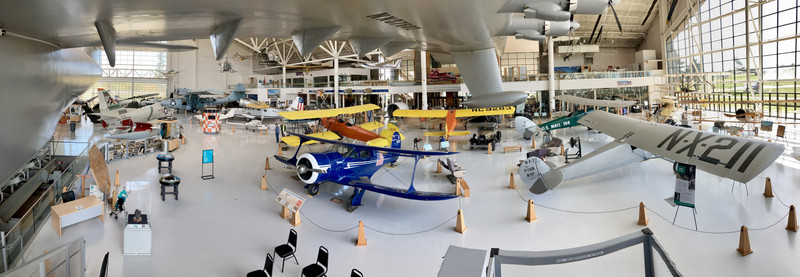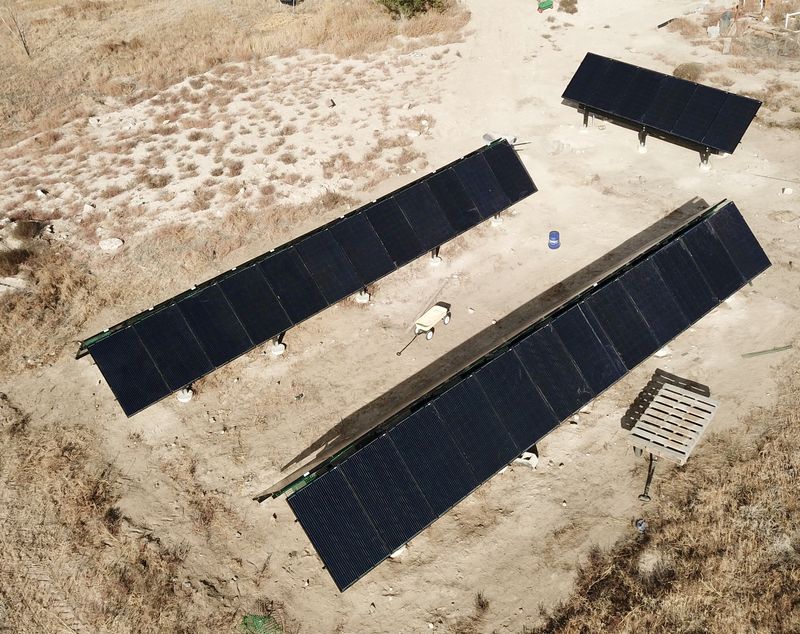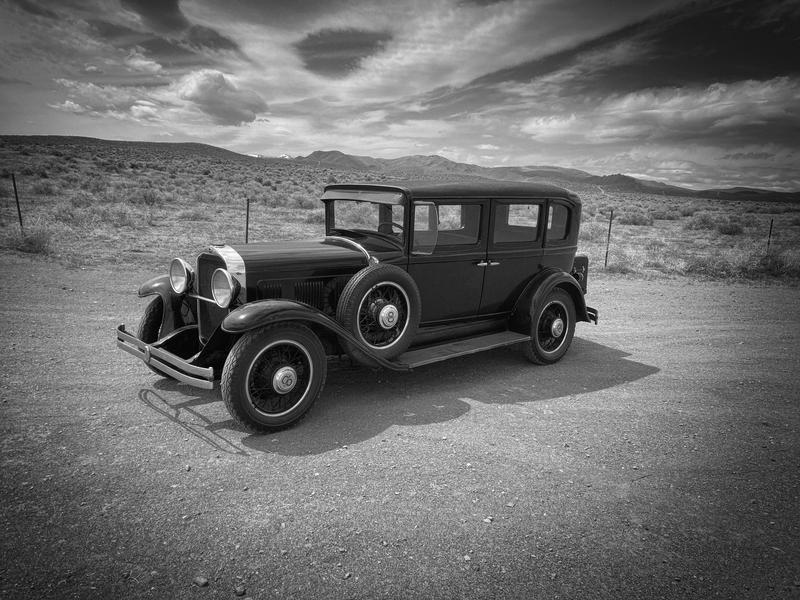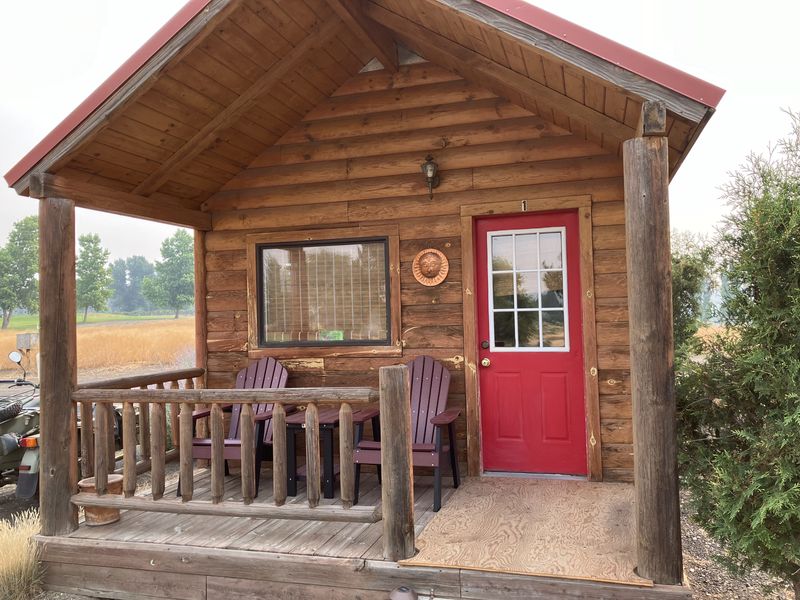Two weeks ago, I think I promised more solar posts. But what I really need to learn is to stop forecasting posts, because it turns out that life often offers something far, far more interesting than what I’d been planning to post about.
As is the case this week. Solar is all well and good, but it’s not nearly as cool as visiting the Evergreen Aviation Museum out in McMinville, Oregon. And getting visited by a flight of Army helicopters. And seeing the flight deck of the Hughes H-4 Hercules, better known as the Spruce Goose.
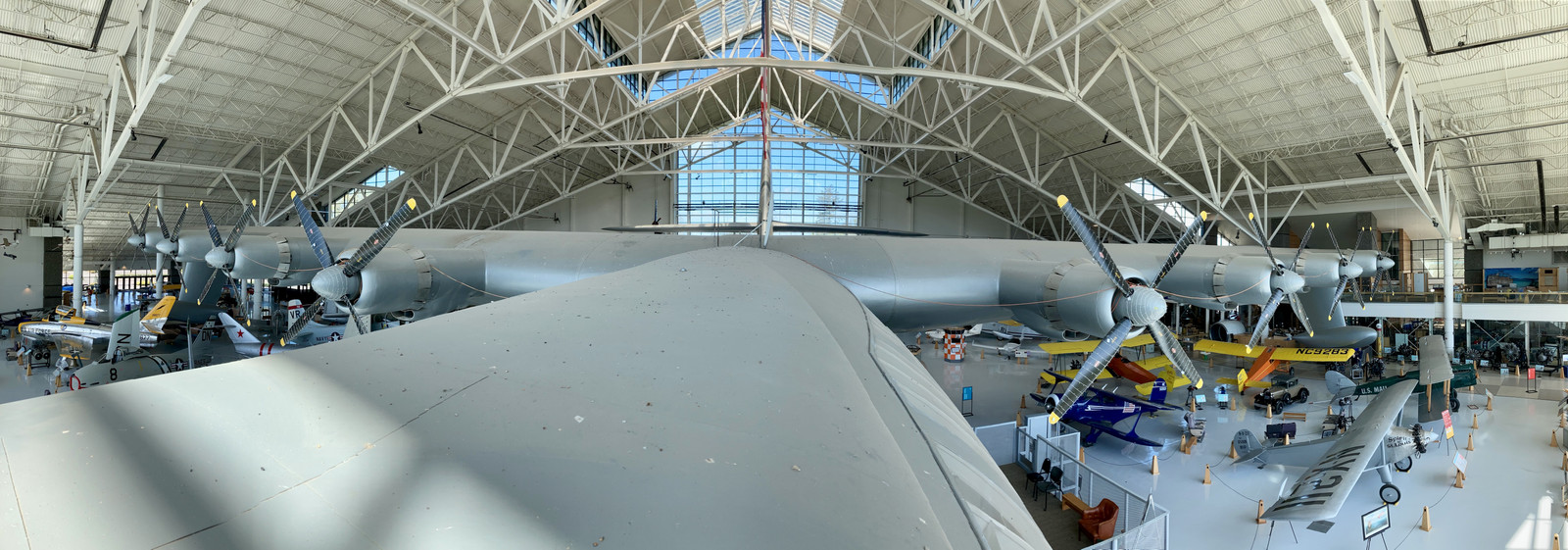
This is going to be a photo heavy, aviation-nerd post, and I apologize for nothing!
The Evergreen Aviation & Space Museum
Out towards the coast of Oregon, there’s a building. It’s part of a complex of several buildings, but this particular building (in the distance, past the rather epic playground) is interesting, because it’s an aviation museum designed around a plane. Most aviation museums are big buildings with a variety of planes. This one is a building sized to fit one plane - and everything else just literally hangs out under the wings of this one plane.
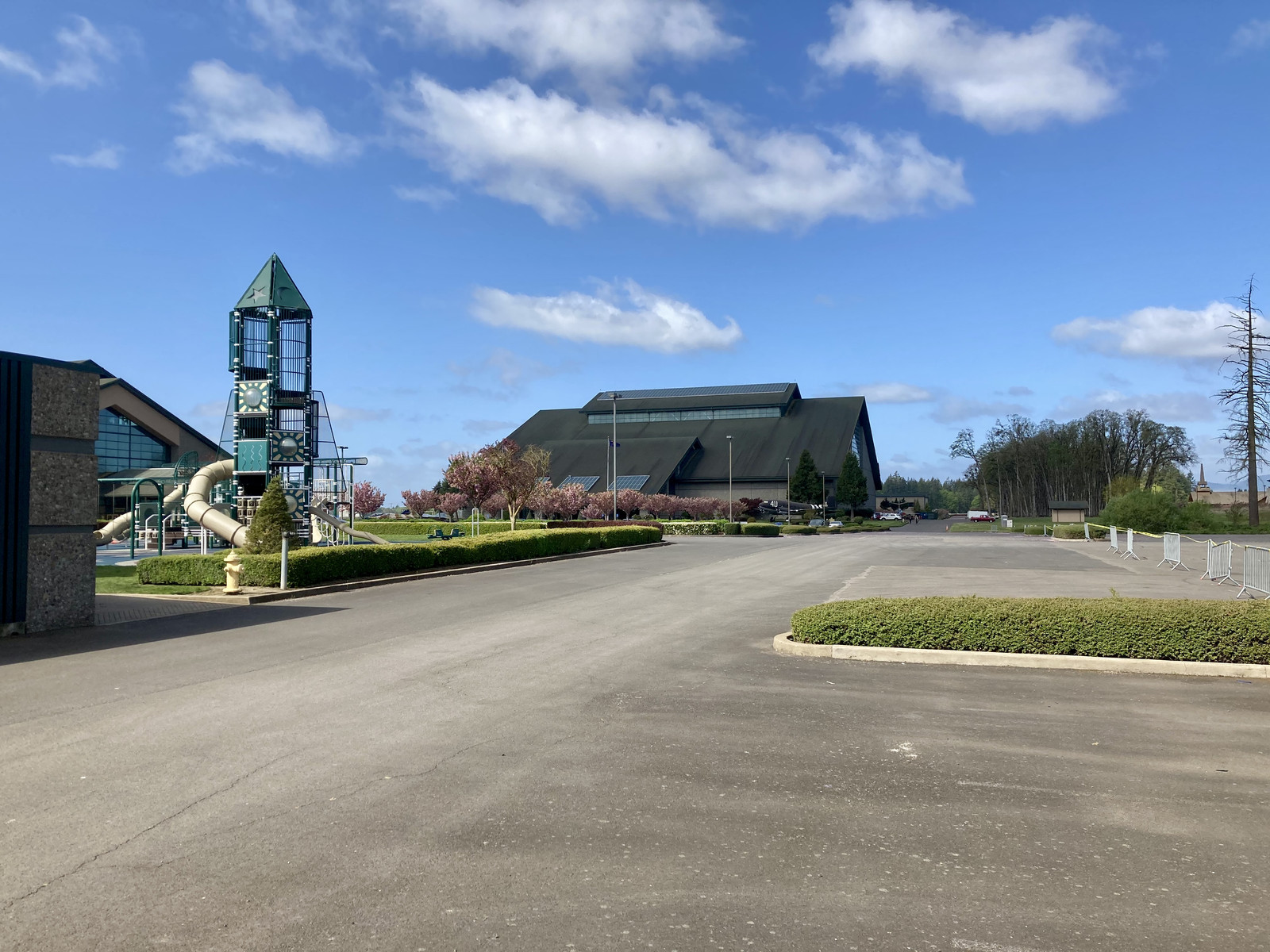
You walk in (actually, you can see it as you drive up the cute little runway they’ve painted on the access road) and… there’s a plane. Sure, there are some other little models and toys too, but there’s a plane. And then it sinks in that, no, the rest of the stuff isn’t tiny scale models. They’re perfectly reasonably sized airplanes too. They’re just not insanely gigantic. They’re normal sized airplanes. Photos don’t really do this thing justice, even the panoramas I’m going to abuse badly.
The H-4 is a flying boat, the size of a Boeing 747, made of wood. And it is huge. Eight engines. A wingspan of a hair over 320 feet. Eight engines composed of a total of 224 cylinders, dumping 24,000 horsepower into the props.
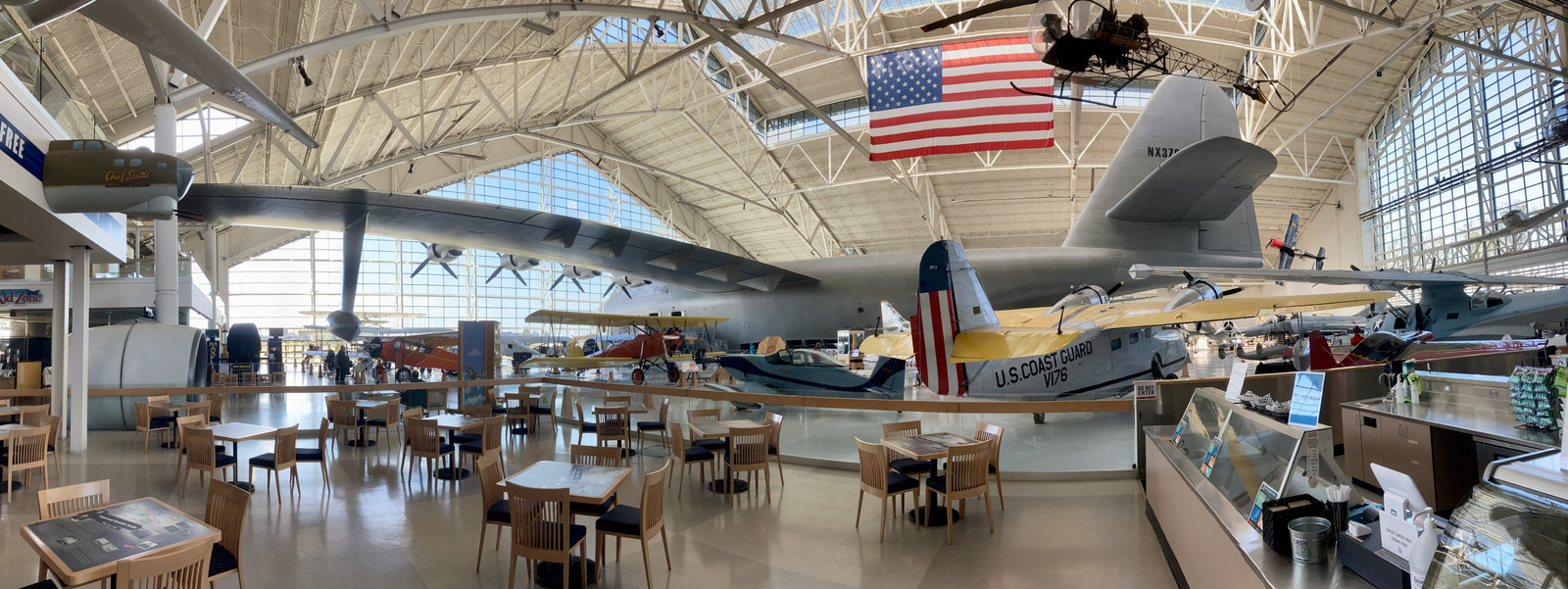
And some other planes too.
This museum is right across from the McMinnville Municipal Airport, which means that an awful lot of the planes in this museum were just flown in. And things start out with an absolutely beautiful blue Beechcraft Model 17 “Staggerwing”. Take a biplane, give it retractable landing gear, arrange the wings to improve visibility, make it slick, and you get something really quite beautiful.
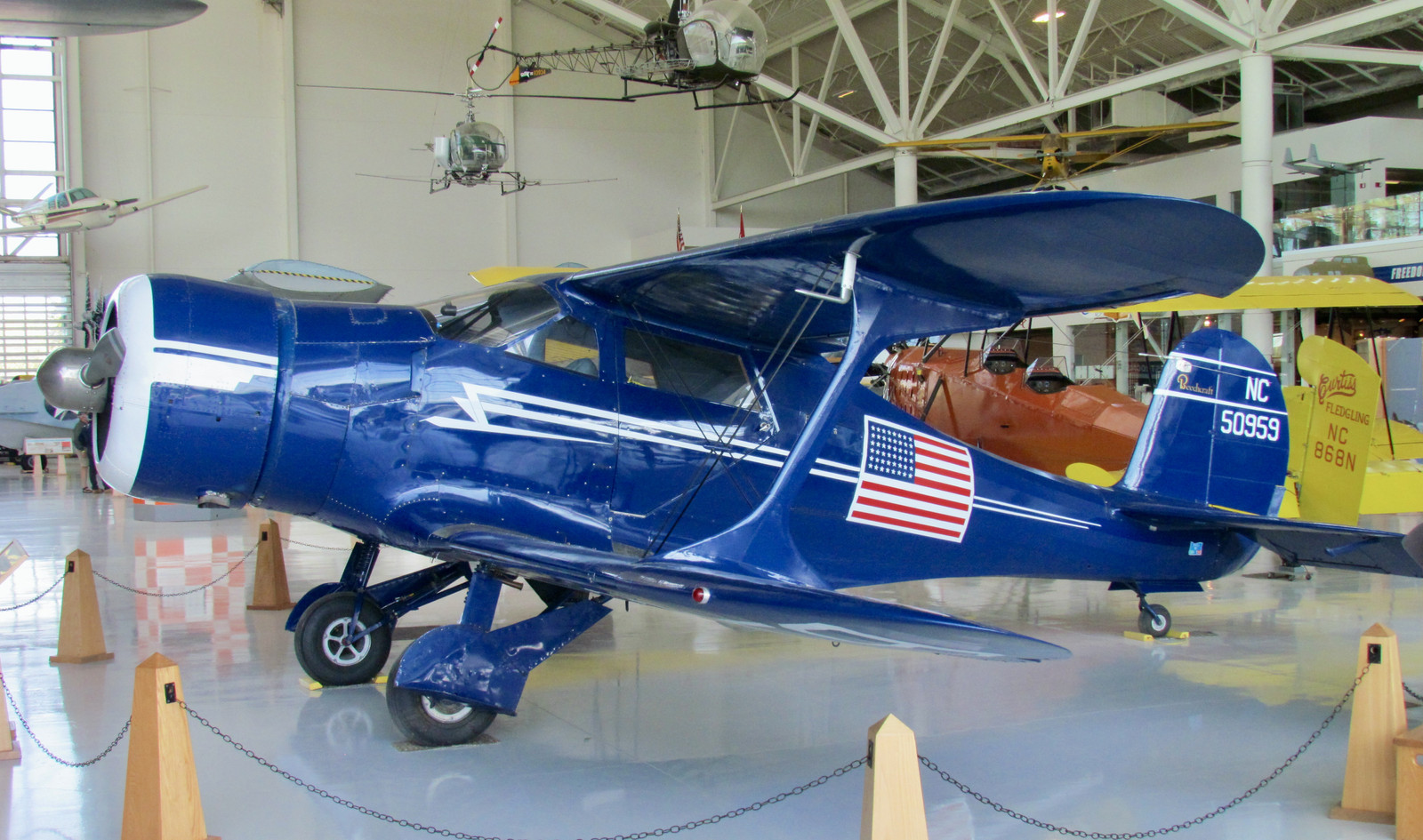
A number of the planes that used to be open to walk through are closed, but one can stick a camera in them! This is a DC-3 in passenger configuration - once a plane that hauled an awful lot of people. In a testament to just how good the designers were, DC-3s are still flying around, still hauling cargo, firefighters, and all sorts of other stuff!
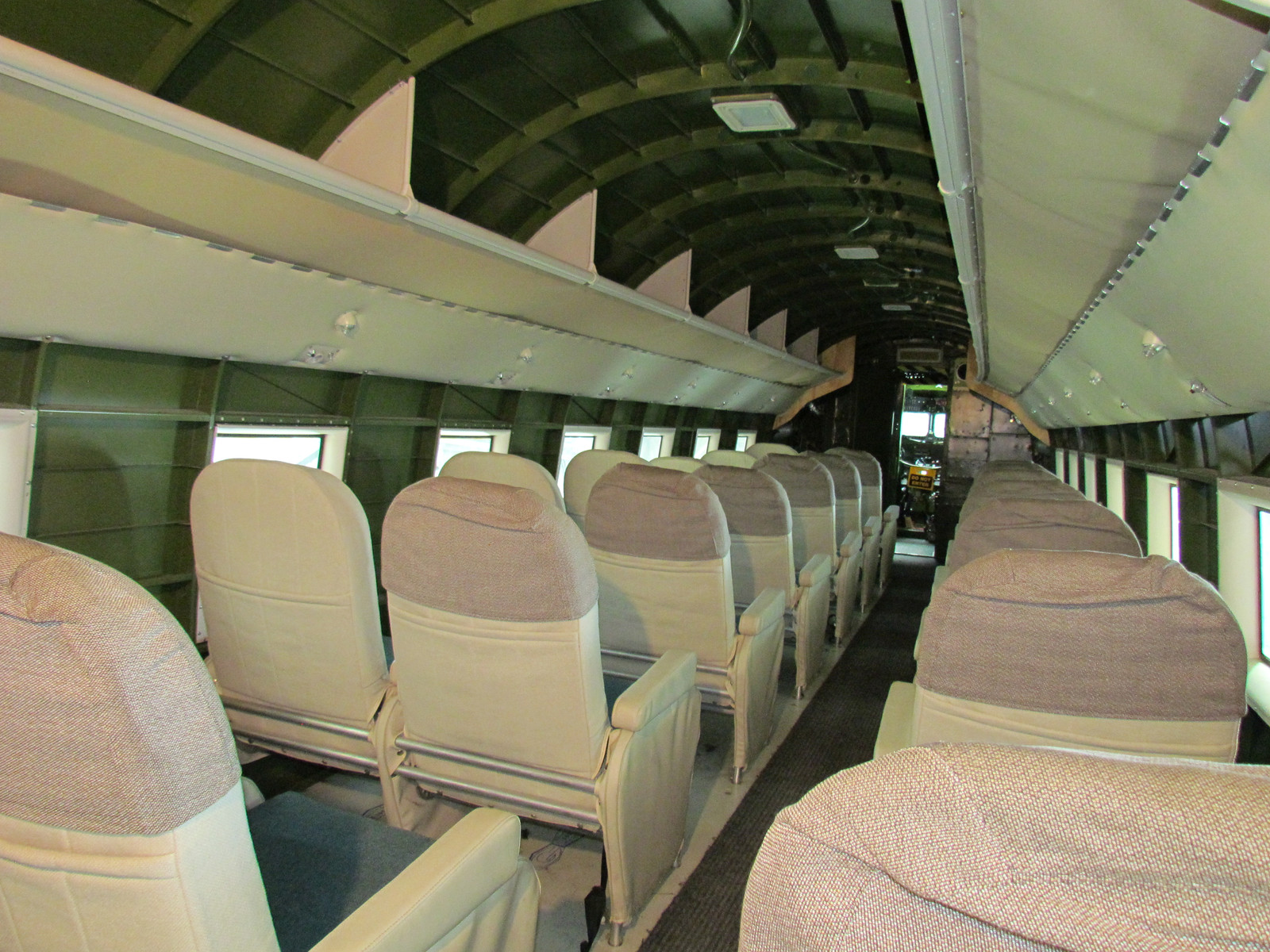
Inside something far faster, this is the cockpit of an F-4 they have - and I believe you used to be able to sit in it, though they have a sign saying “Please don’t…” right now. Good fun for shooting down MiGs!
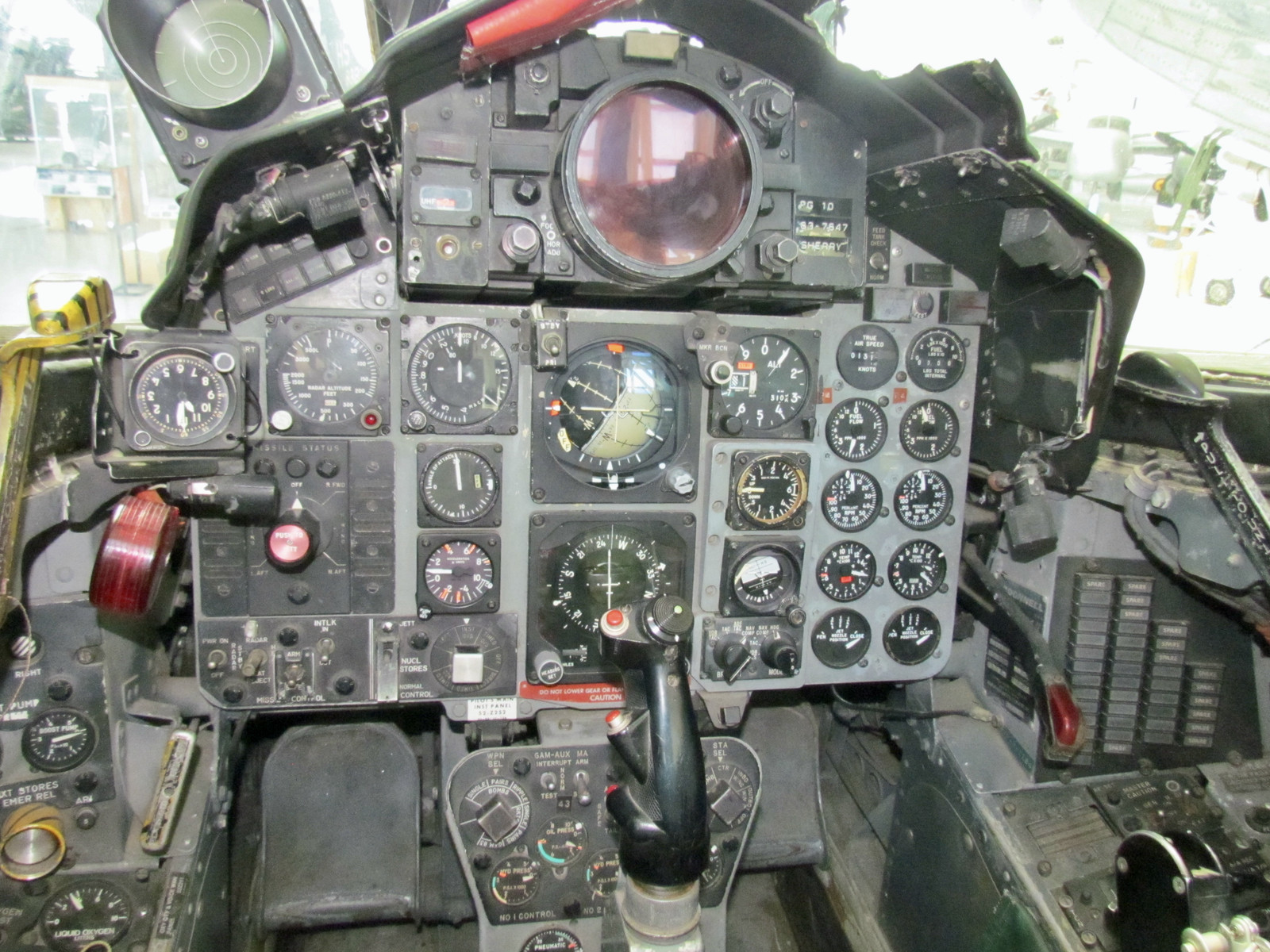
Artwork
Throughout the museums, there are pieces of aviation-related art. Two stood out to us. Guardians of the Realm looks at the guardians of England, throughout the centuries.
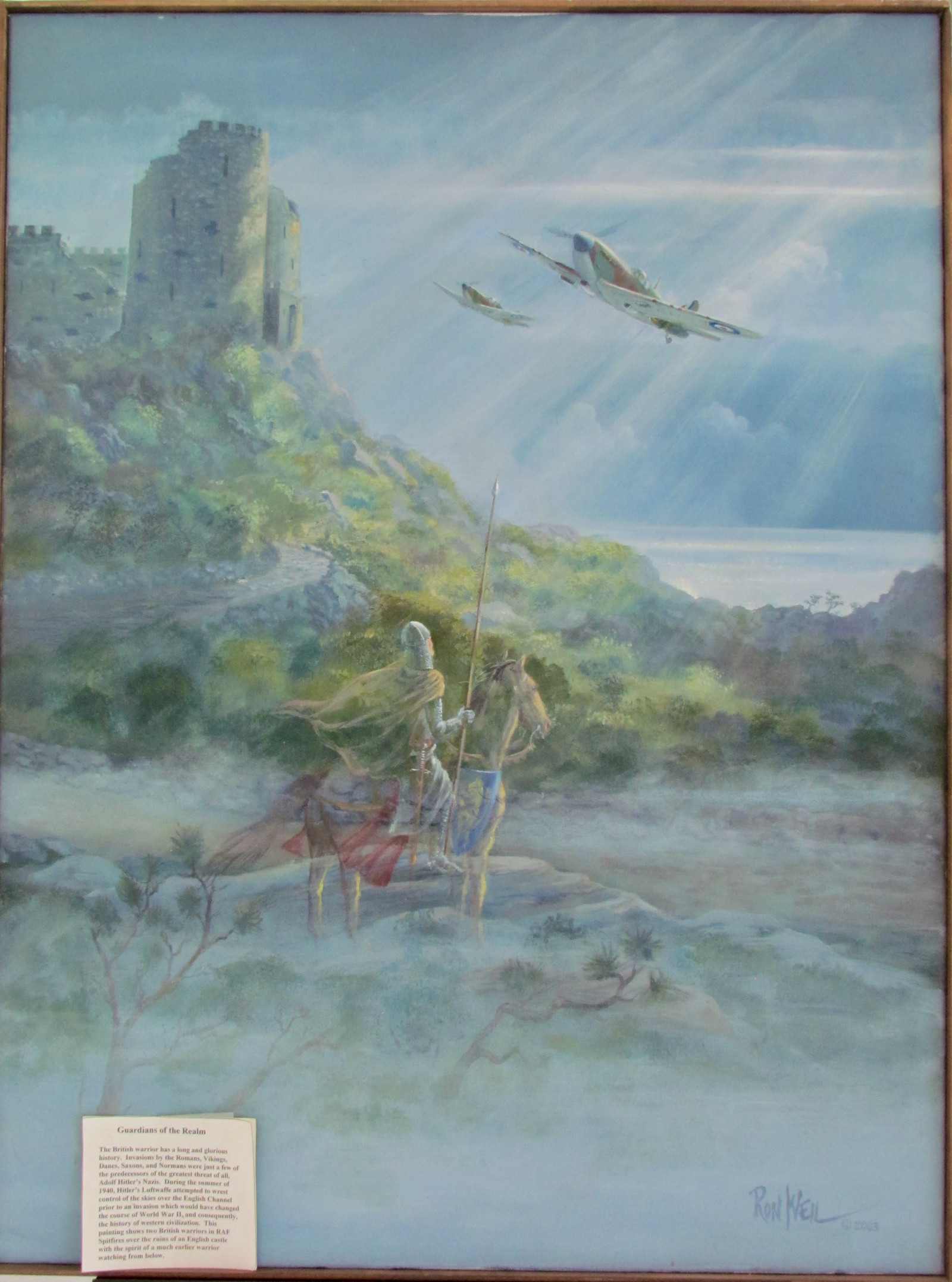
And, for a slightly more morbid bit of WWII aviation lore, The Death of Yamamoto reflects the final moments of Yamamoto’s “Betty” bomber.
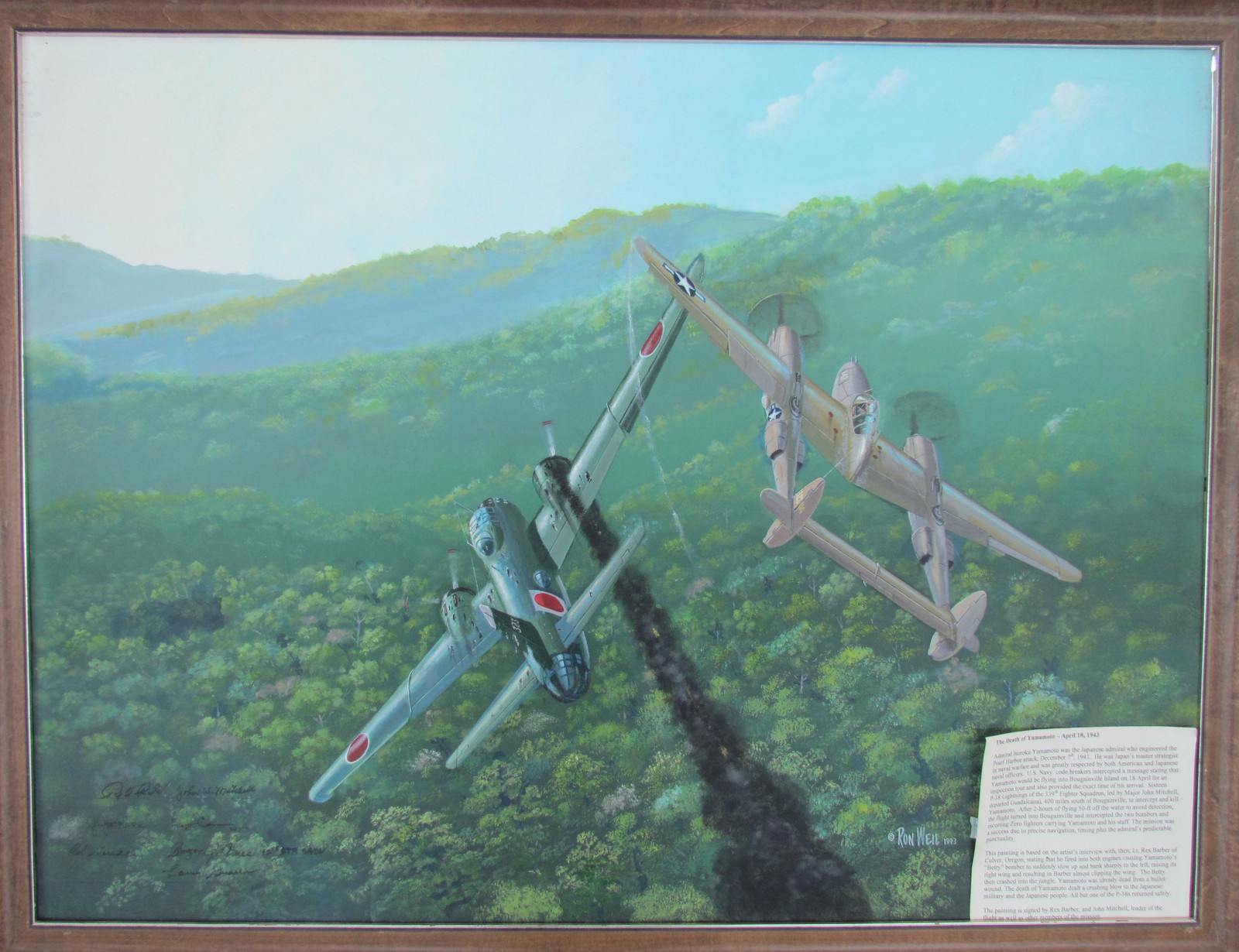
The Pratt & Whitney R-4360 Wasp Major
In the mid-1940s, jet engines didn’t exist yet, and if you wanted more power, you had a few options: Add more cylinders, make the cylinders bigger, or cram more air into the existing cylinders.
The late radial engines did “All of the above.” The R-4360 is a 4362 cubic inch (71.5 liter) 28-cylinder engine that turned all of the above techniques into what was, for the time, a reasonably reliable 3000 horsepower. This is a “pod” for the H-4, and is a complete engine and cowling that could be mounted on the appropriate mounts when needed.
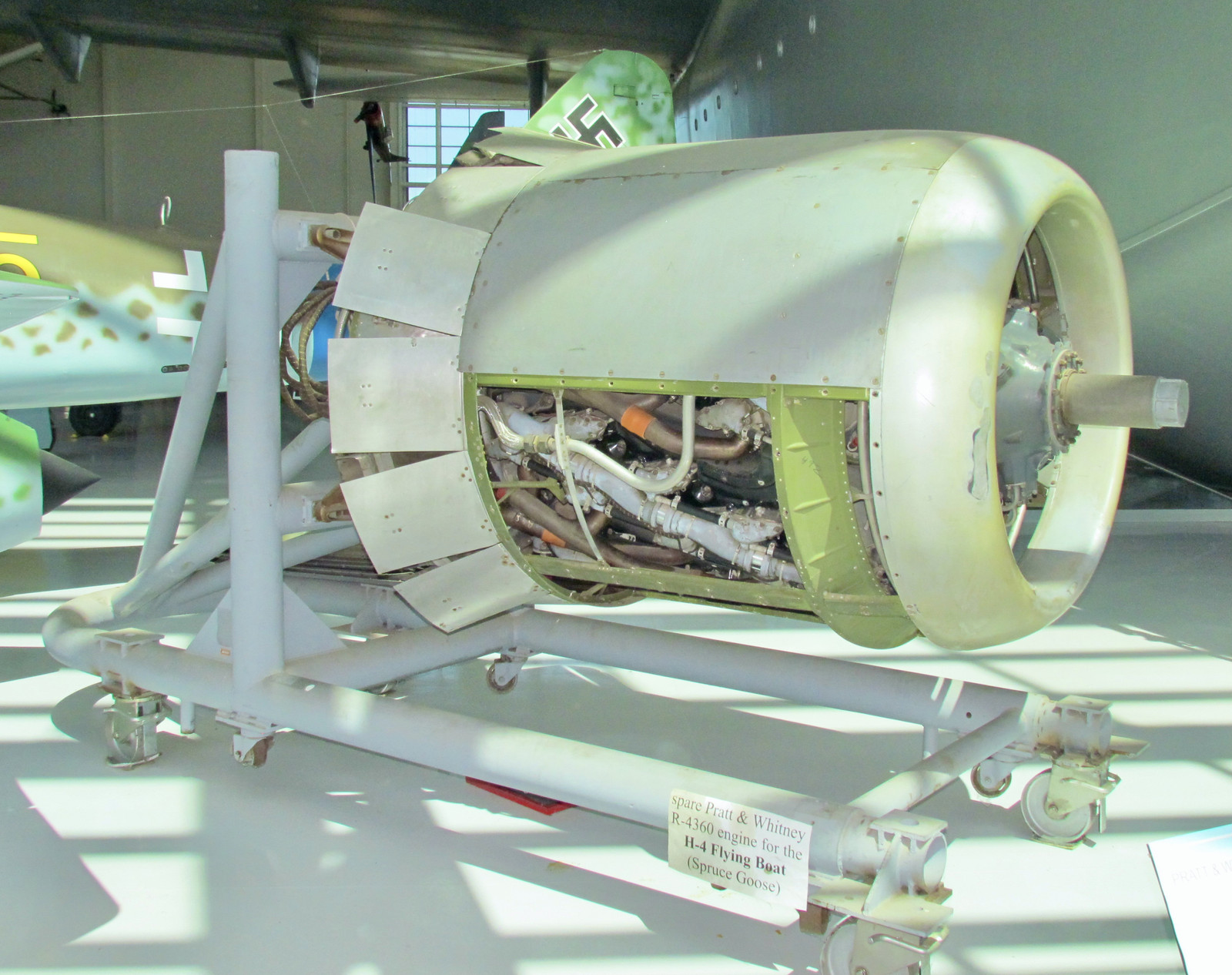
What’s inside? The Evergreen museum has a nicely sectioned engine - but, unlike a lot of sectioned engines, this one has a motor that actually turns it so you can observe the pieces in operation! My daughter wasn’t too interested in pushing the button, fearing it would be loud (it is, after all, a gigantic aviation engine). My son? Oh, man, there’s a button.
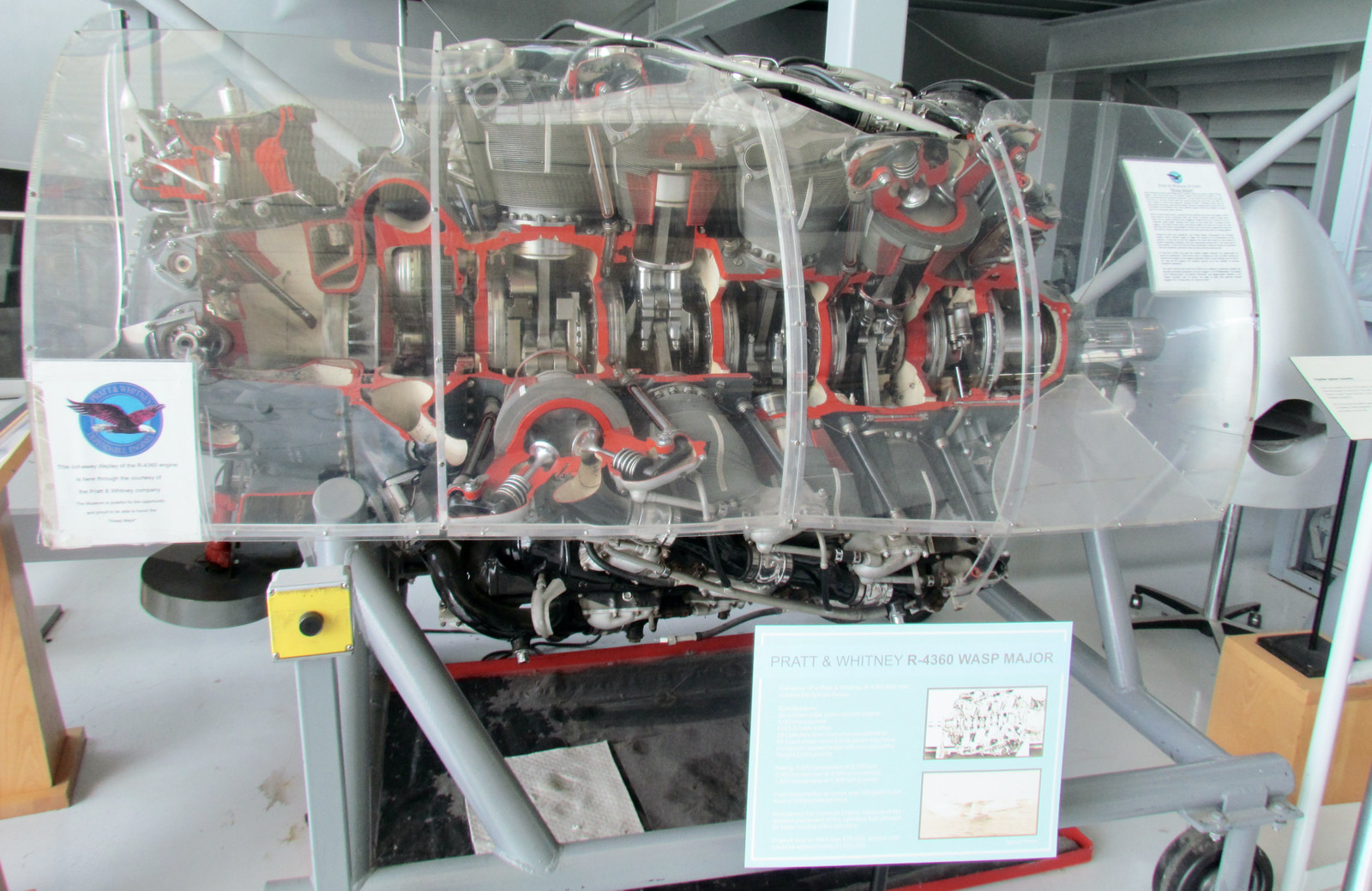
Press the button and the engine turns! It’s a great little demonstrator, and I love that this one actually turns. Though the drive gear for it seems a bit ragged… it appears to be turning the engine via an accessory drive bevel gear. I don’t think it has all the pistons, though, and you’ll notice that some of the piston rings seem to be missing.
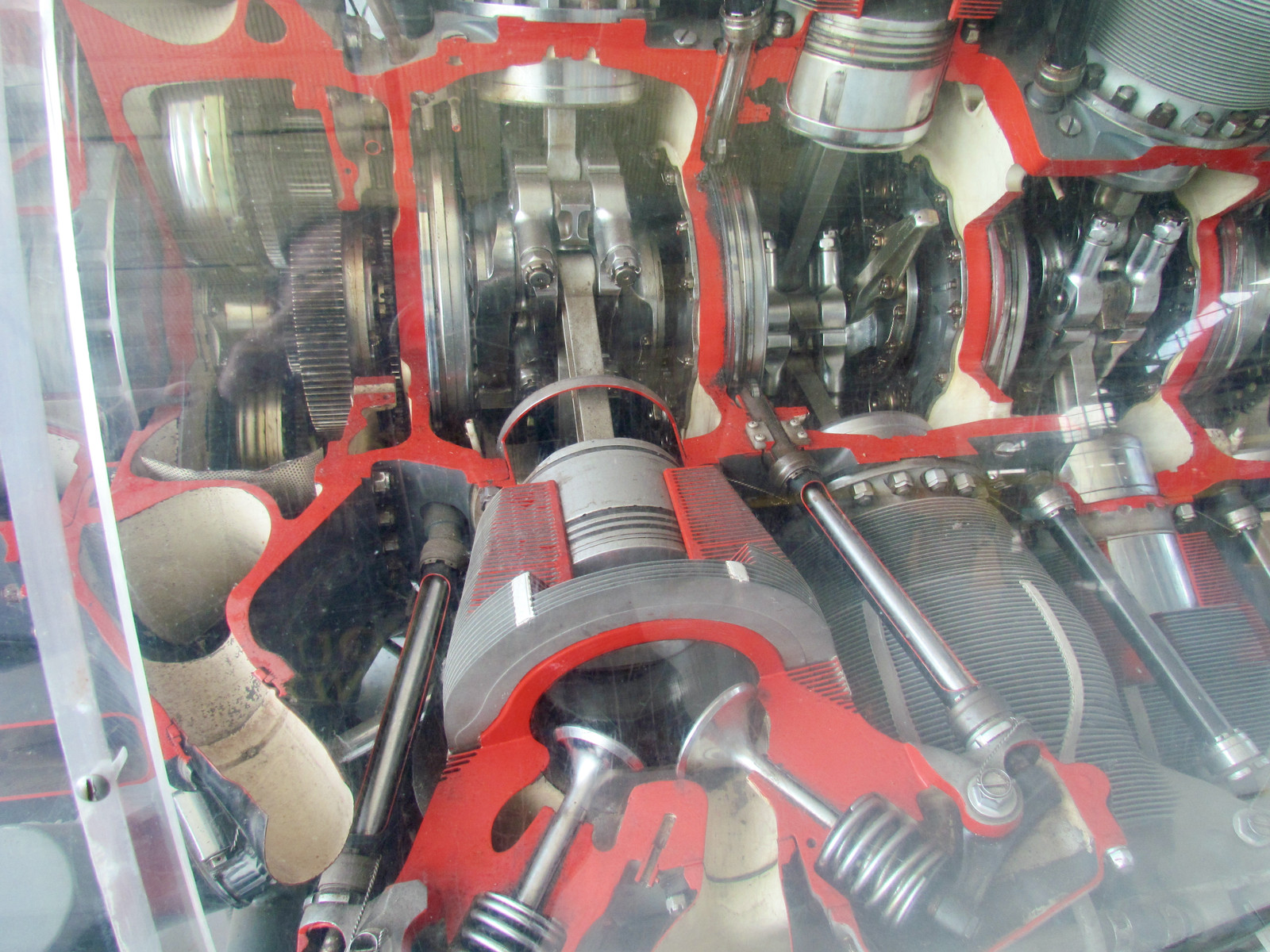
In place, they hang out on the end of a fairly long extension that, according to what we were told, mostly exists to keep the radial engine exhaust from lighting the wooden wing on fire. The radial set of cowl flaps control airflow through the cylinders (primary cooling for an air cooled engine), and I believe the lower scoop and outlet flap is for the oil cooler.
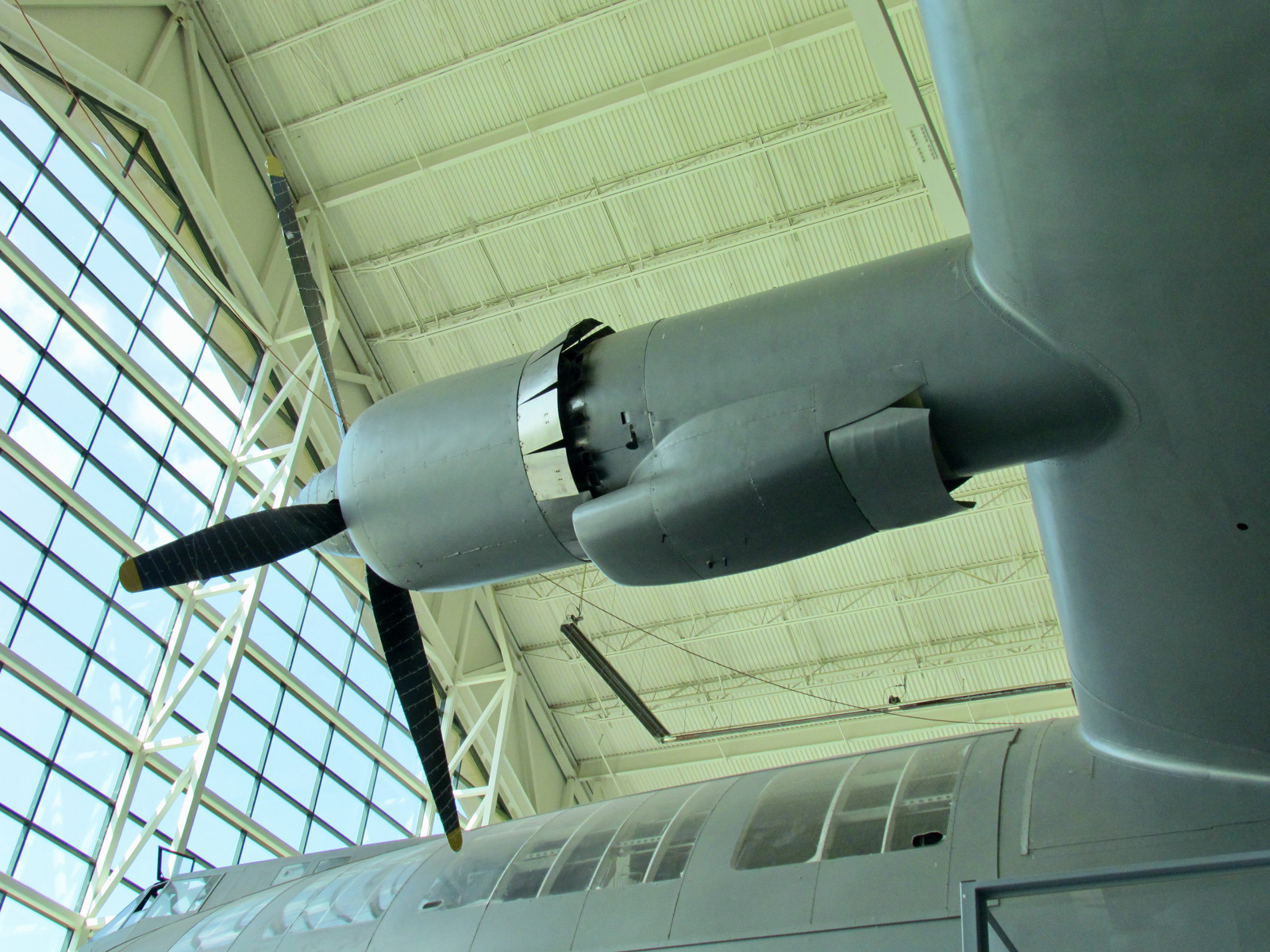
The H-4 Hercules Cargo Deck
The flight deck tour of the H-4 is an extra $30. If you like aviation, spend it. It’s a “15 minute” (practically, a good bit longer in our case) tour through the center section of the plane and up into the flight deck, with plenty of time to ask questions and poke around. This is literally the only H-4 on the planet, so spend the money to enjoy the visit!
Entering the plane from the side, there’s a large glassed in platform in the main cargo compartment. Looking to the rear, the size of the plane is evident - and, remember, it’s all made of wood. Except, this view is deceiving. That rear bulkhead? There’s still another 40 feet left of the plane!
The wings join together here - those splices connect the two wings to each other, and reflect more or less the center of gravity of the airframe.
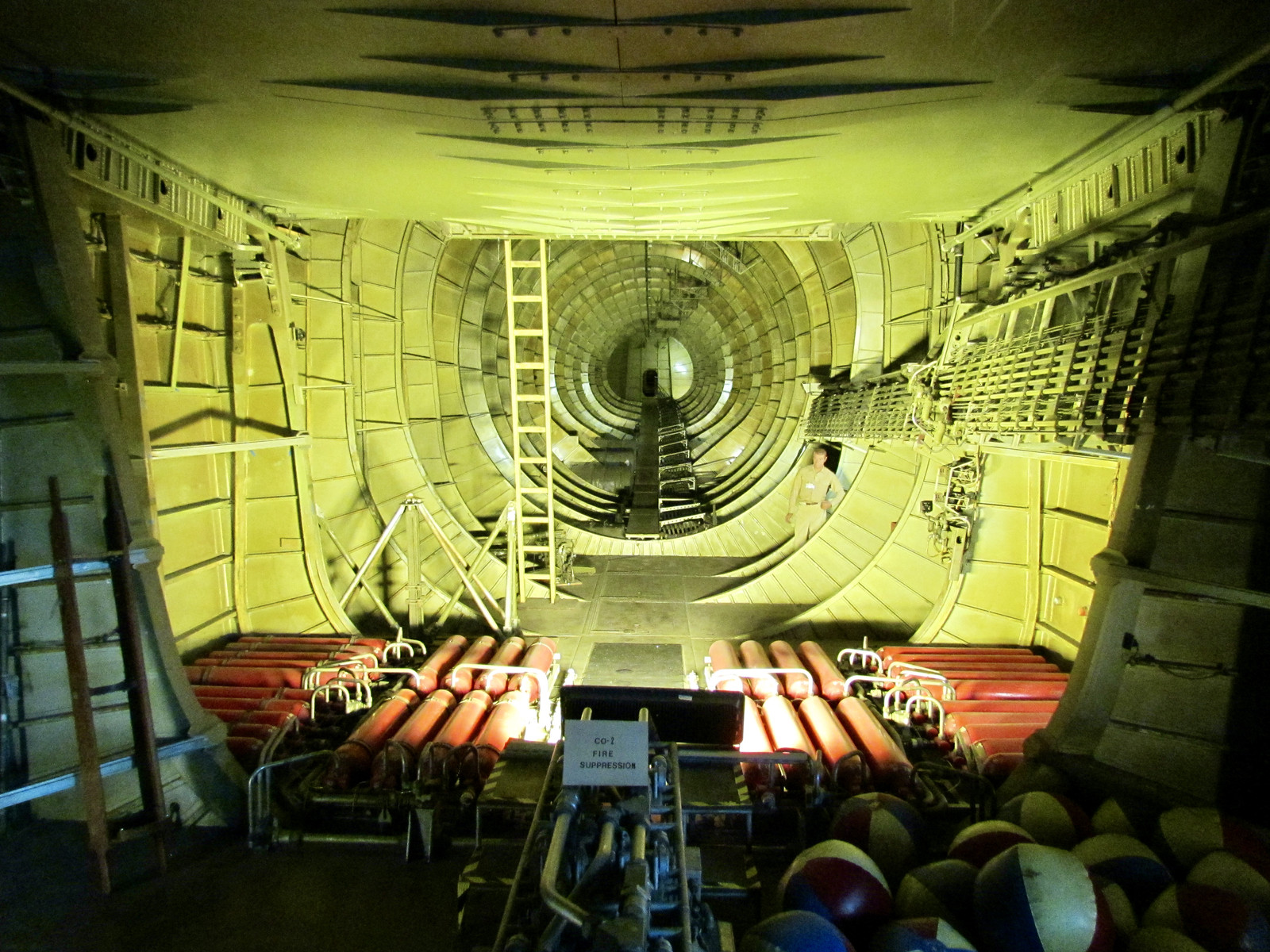
Looking forward, the flat cargo area is visible. The stairs didn’t exist in the plane originally - they were added for the exhibit. This plane was designed with a splitting nose for cargo loading, but a solid nose was used for testing. There was a lot of concern about this plane sinking, it seems.
You can see the electrical distribution console past the stairs, and in front of that are some hydraulic accumulators for the control system.
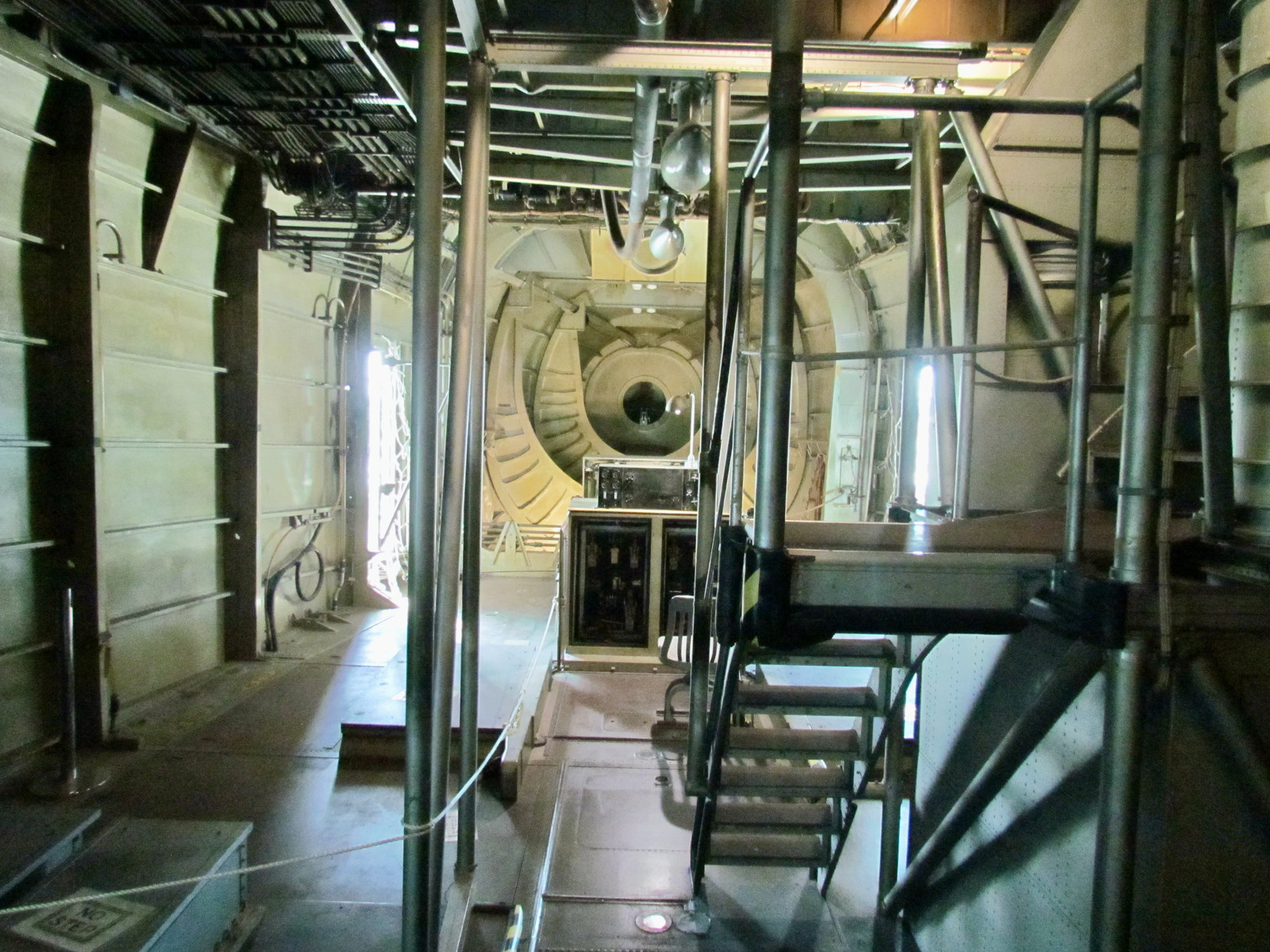
On the far side of the CO2 fire extinguishing system (added after the test flight), you can see a bunch of 1940s era beach balls, containing genuine 1940s air. These were stuffed throughout the plane - in the wing floats, in empty spaces between compartments, and were a failsafe to help ensure that if something went wrong, the plane wouldn’t sink. During restoration and relocation, they removed most of them.
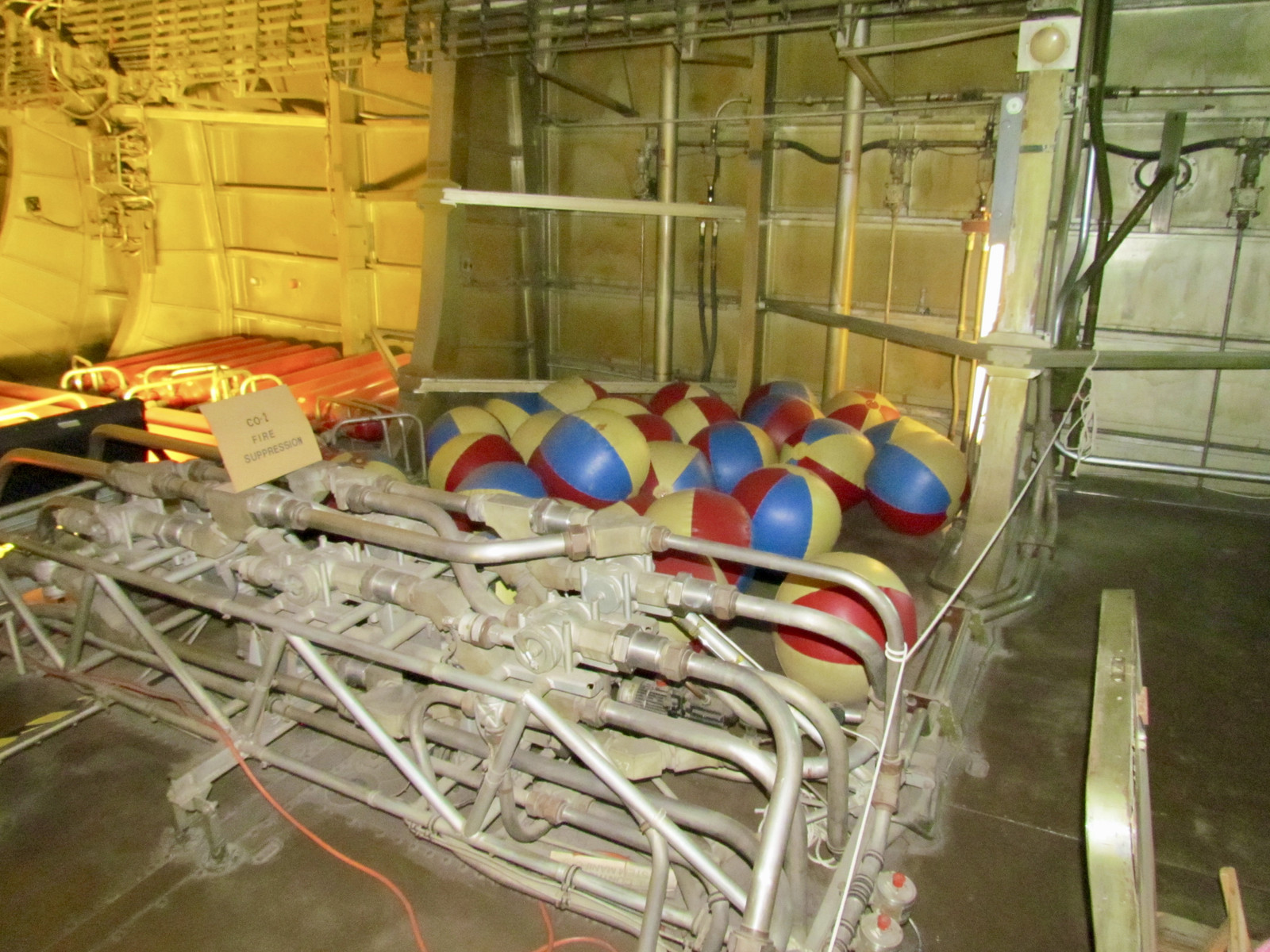
The underside of the flight deck shows the cables running back to the control services (with tags to indicate which is which). The H-4 had one of the earliest hydraulically boosted systems - I believe it’s a hydraulically boosted cable operated system, similar to what decades of airliners use.
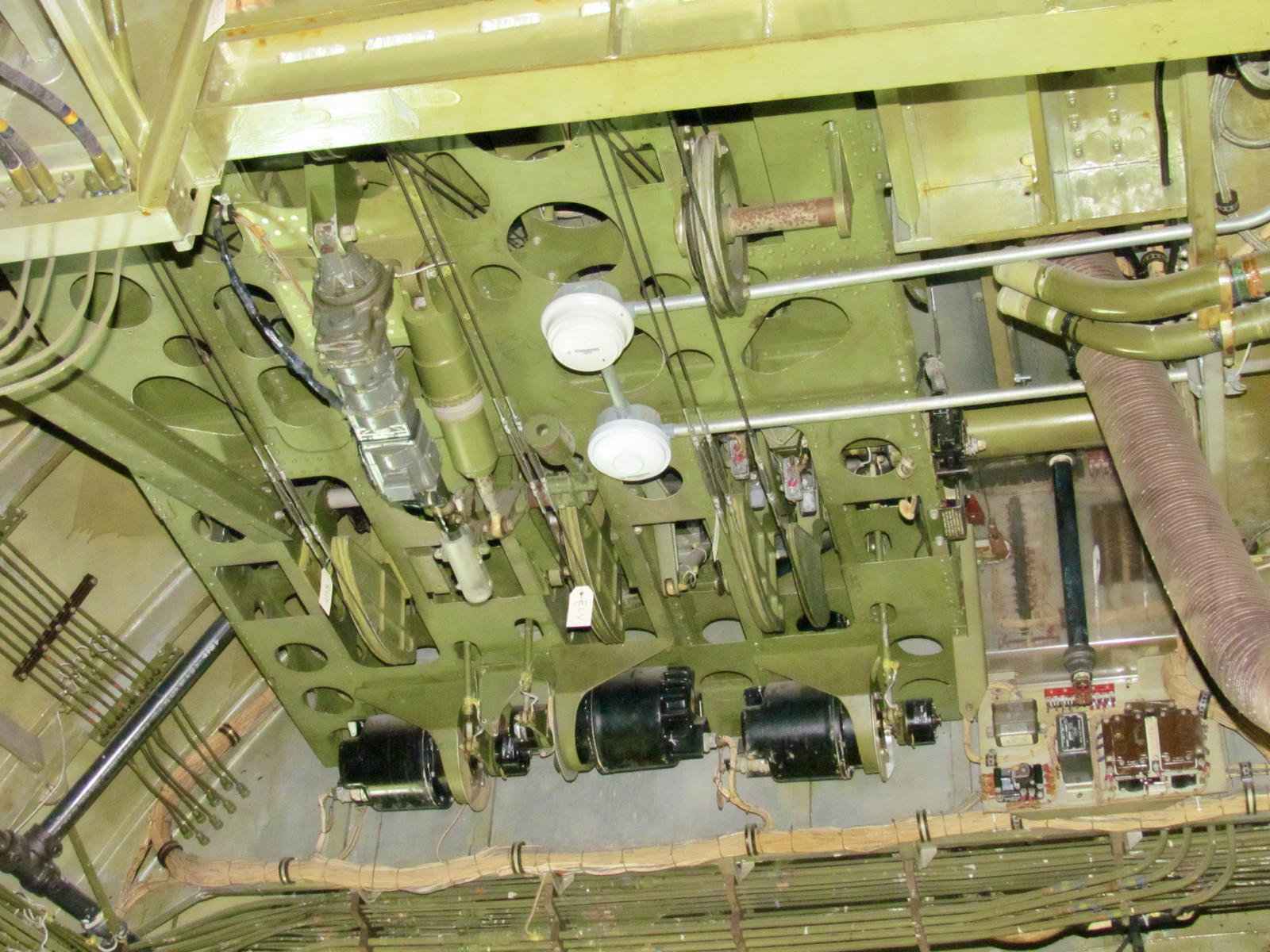
Inside the main cargo area, there are several teardrop enclosures like this. They’re not drop tanks.
They’re radio antennas for navigation. Normally, the metal fuselage of an airplane means that the radio antennas have to be outside, so they were commonly available in aerodynamic enclosures. Of course, if your entire plane is made of wood, there’s no reason to hang them outside, is there? This is right below the navigation station upstairs.
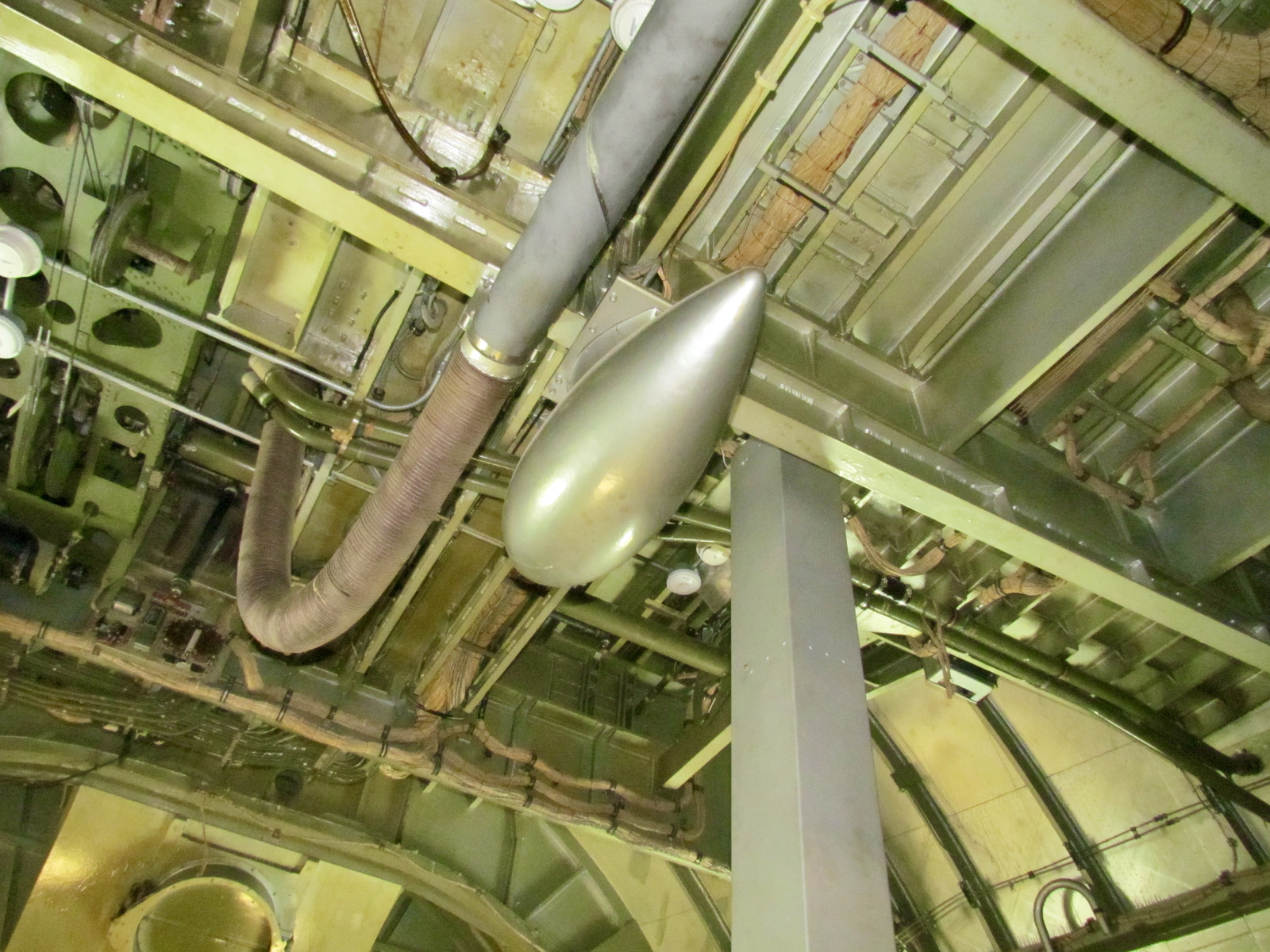
The H-4 Flight Deck
If you’re here, the main reason to tour the H-4 is to see the coffee dispensers. In-flight coffee for your news crews, engineers, and anyone else lucky enough to be on the upper deck!
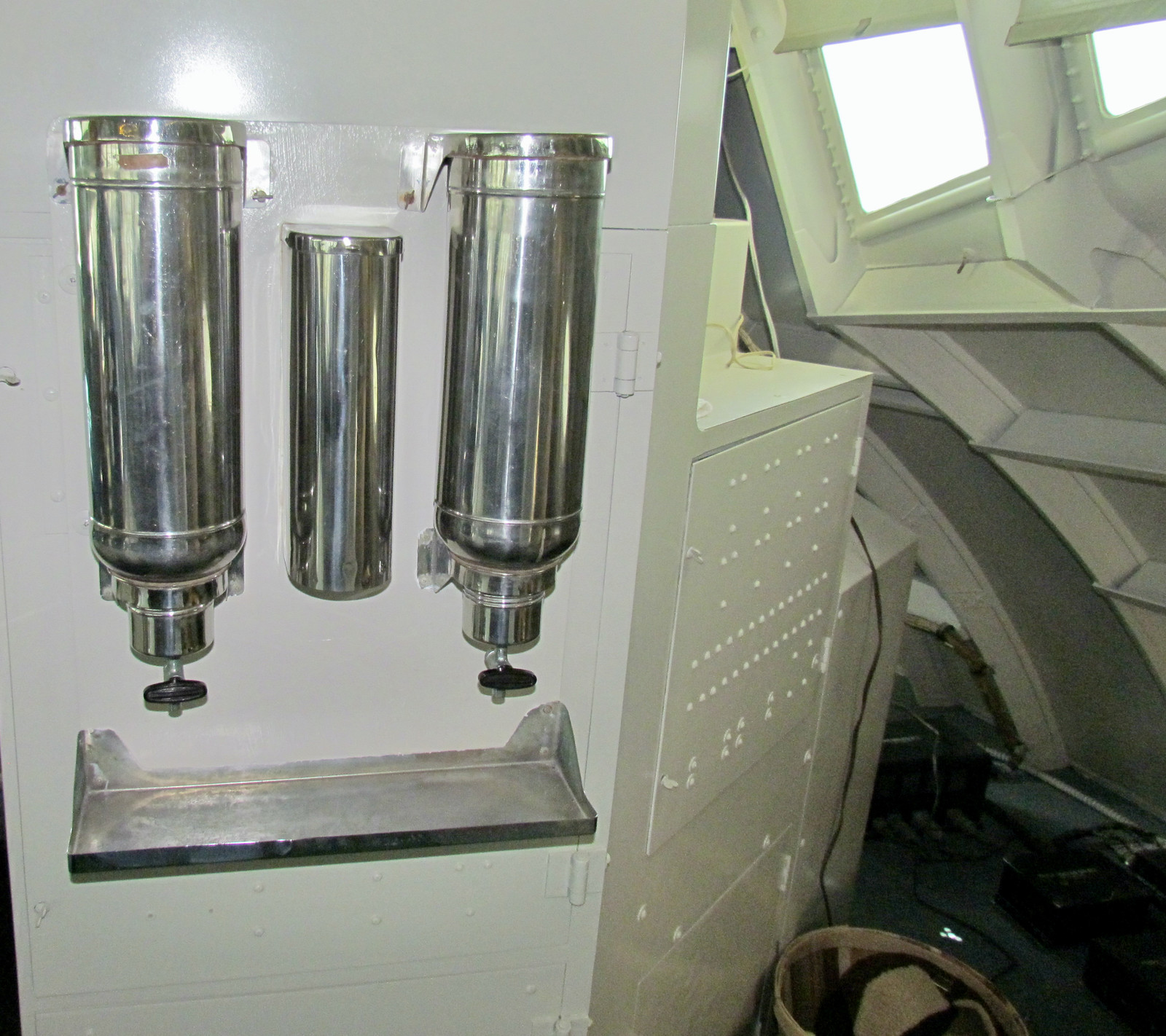
Climb the stairs (formerly a wooden ladder), and you get to the rather cavernous flight deck. Plenty of room to stretch out here!
You may notice a weird looking snorkel tube sort of thing leading up to the pilot’s seat. It’s not a speaking tube. It’s an air tube, from an air filtration system down in the cargo deck. Howard Hughes, eccentric genius he was, apparently had a thing about breathing other people’s air. This system brought him his own air for when he was flying it. He was also the only person on the single flight with a pilot’s license - therefore the only one who could fly the plane.
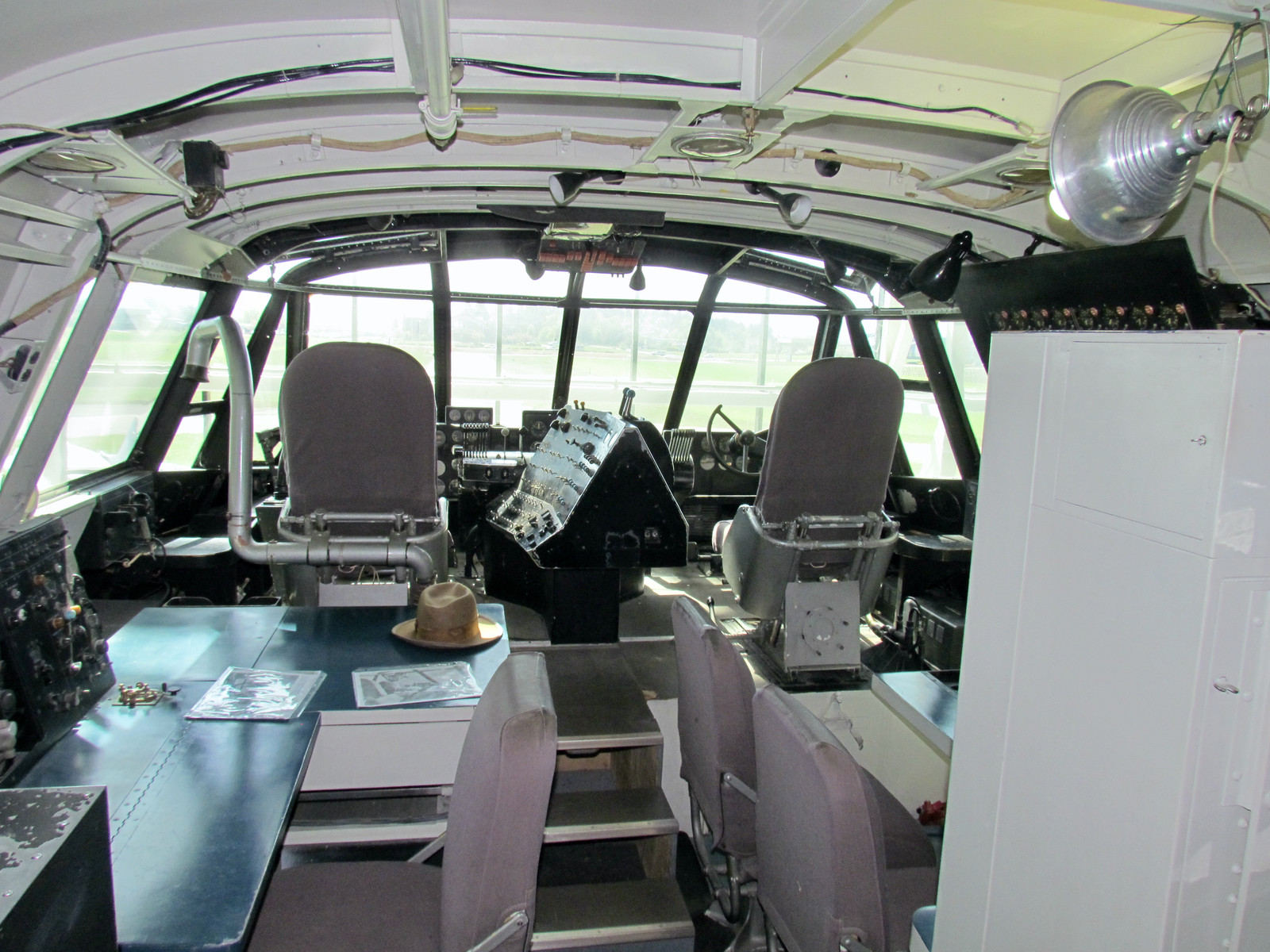
Turn around, and you get the rest of the flight deck. It just keeps going, and going! Plenty of room up here!
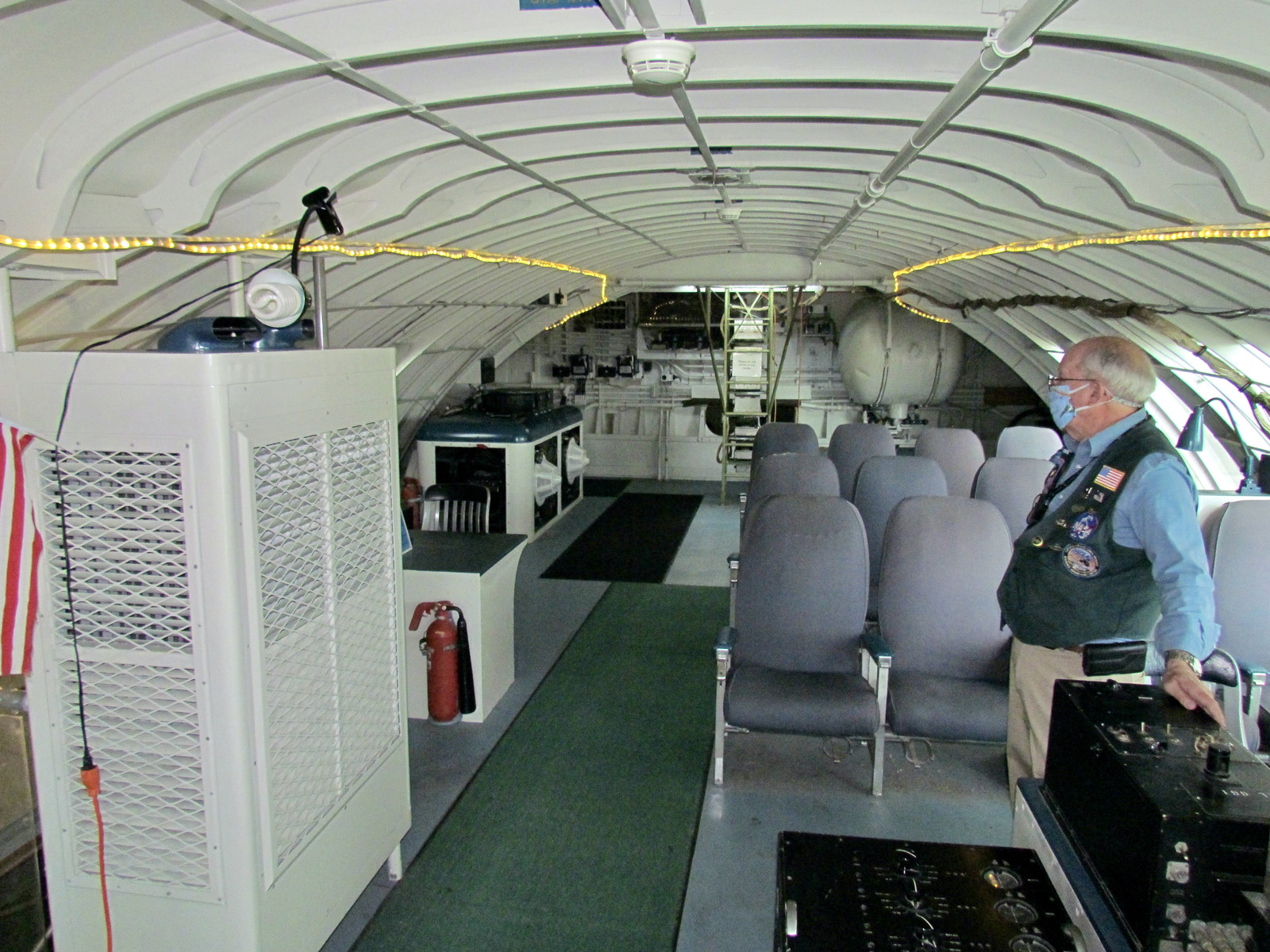
I’m a pilot, so I’ll start in the pilot’s seat and work back.
The first thing our guide suggested was to stand up and look around. There’s a hatch in the roof over the pilot’s seat, allowing you to really get a visual feel for just how insanely massive this airplane is. The entire museum stretches out behind you, over the smooth, flat surface. It’s hard to get a feel for just how thick the wings are from the ground, but from up here? They’re massive.
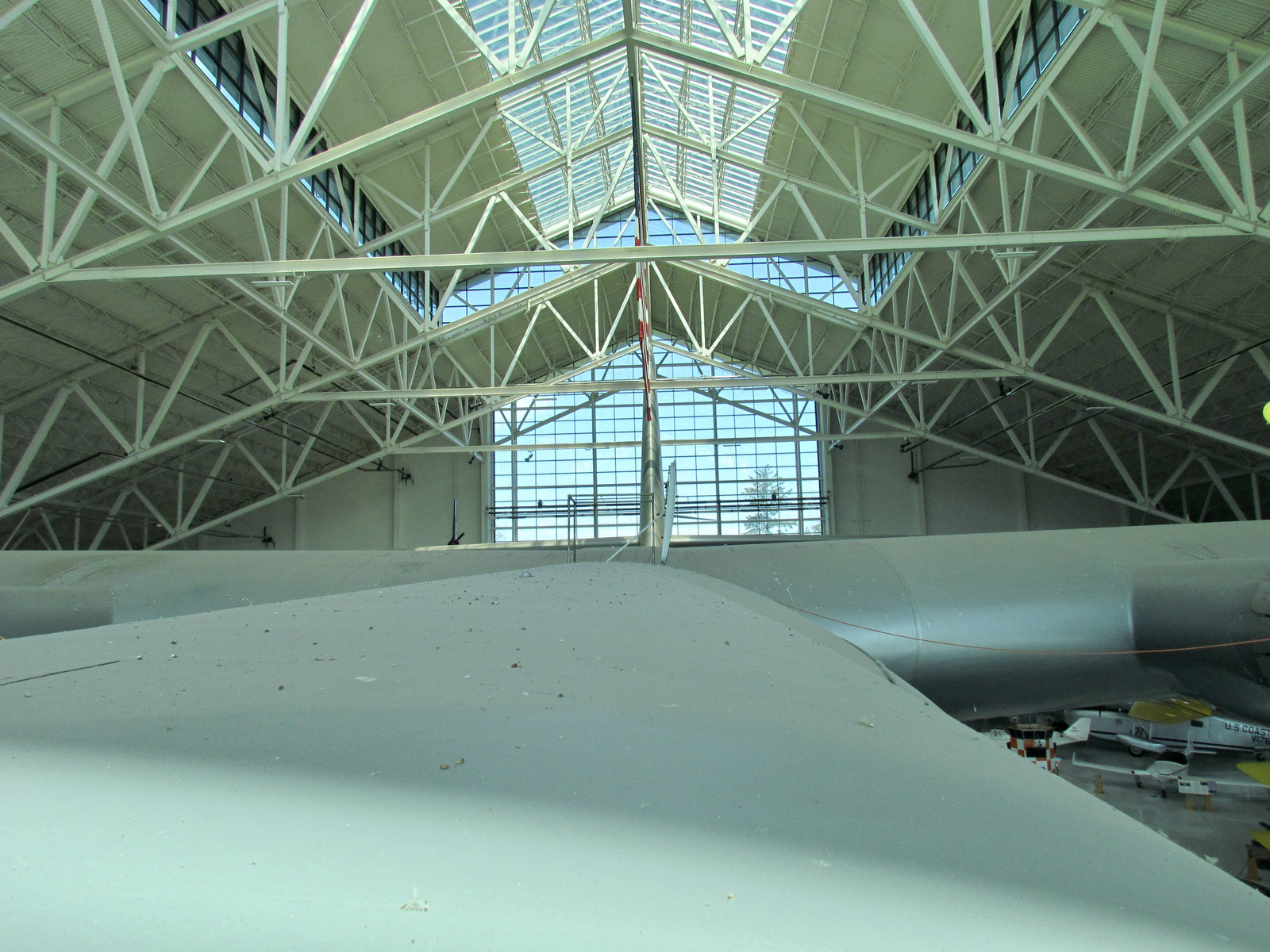
Looking out over the wing, it really gives a sense of how insanely huge this airplane is compared to everything else. The (full scale replica) Spirit of Saint Louis down there isn’t small!
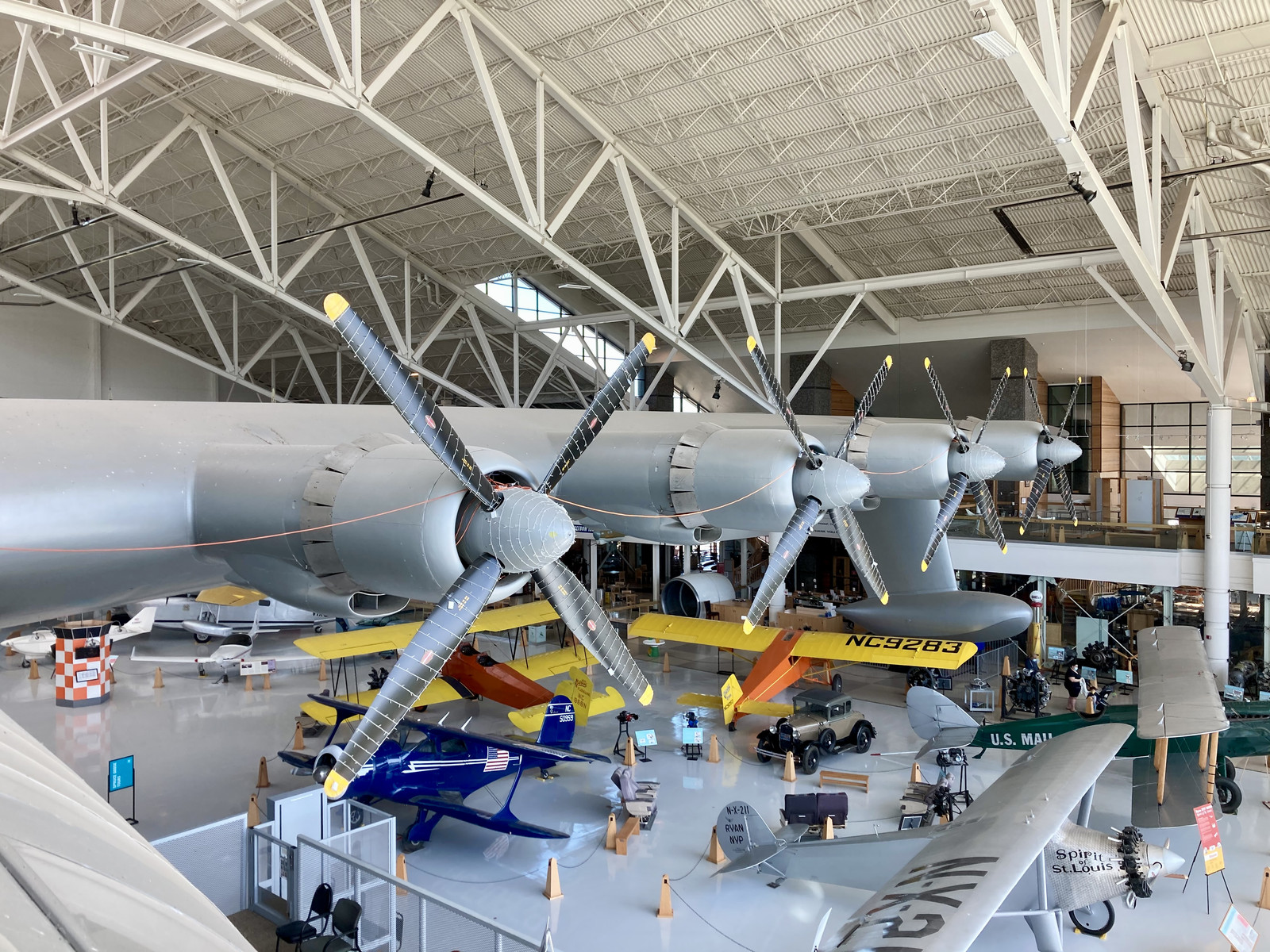
There’s an old joke about how pilots like engines, the more the better. “When I say feather four, I want you to ask which four!” On this plane? That could happen!
As far as I can tell, the props and spinners are wrapped with Christmas lights of some variety or another. They weren’t lit up when we were there, but someone spent an awful lot of time doing a very nice job wrapping them.
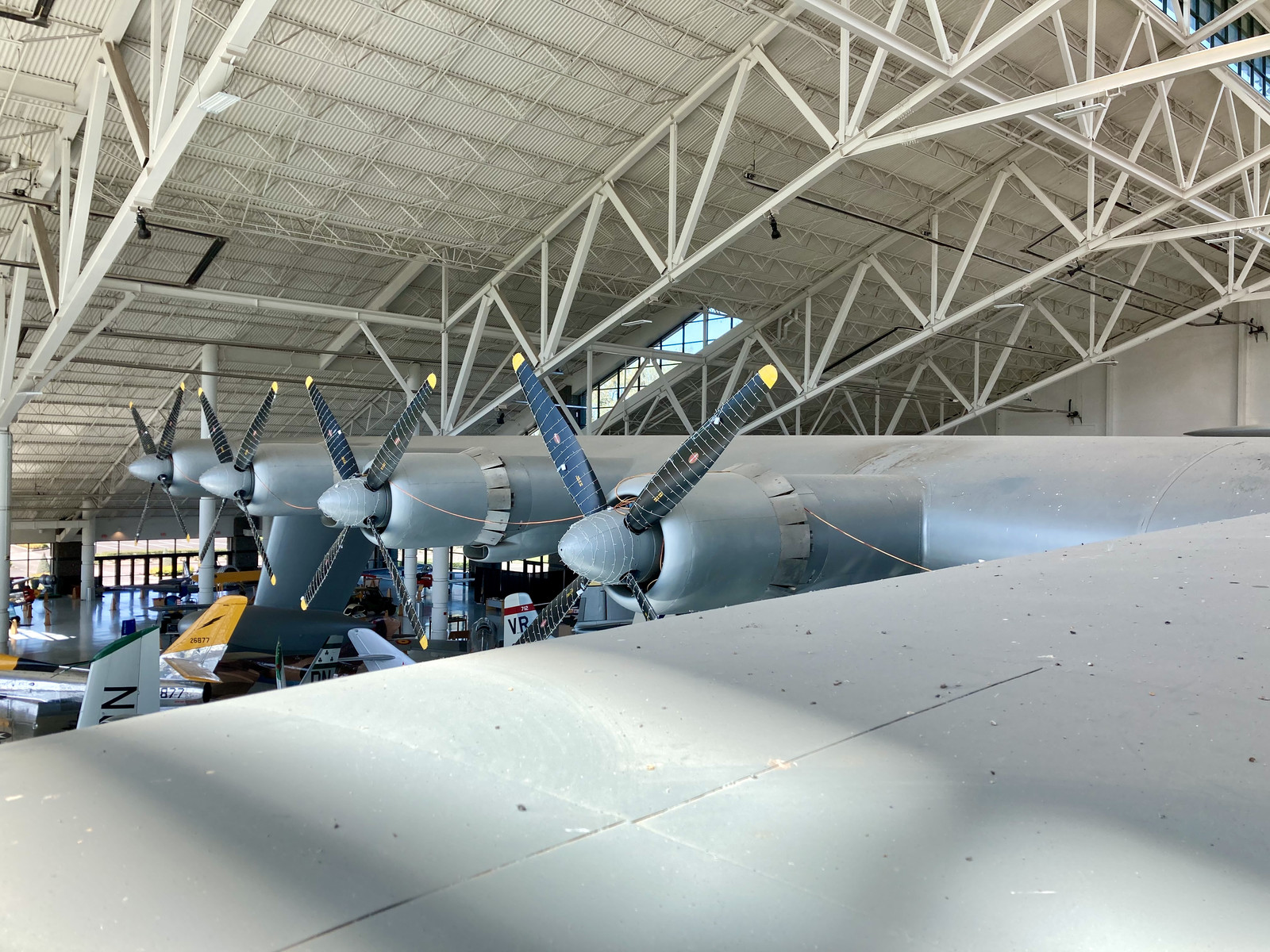
Sitting back down, the instrument panel (it’s very much just a panel here, no glareshield or anything else) is a pretty standard set of gauges. Airspeed, altitude, attitude… though there’s an interesting yaw indicator in the center, to the right of the turn and bank coordinator. Without a glareshield in the way, you can see just how deep some of the flight instruments really are. They’re long cans for a simple seeming gauge!
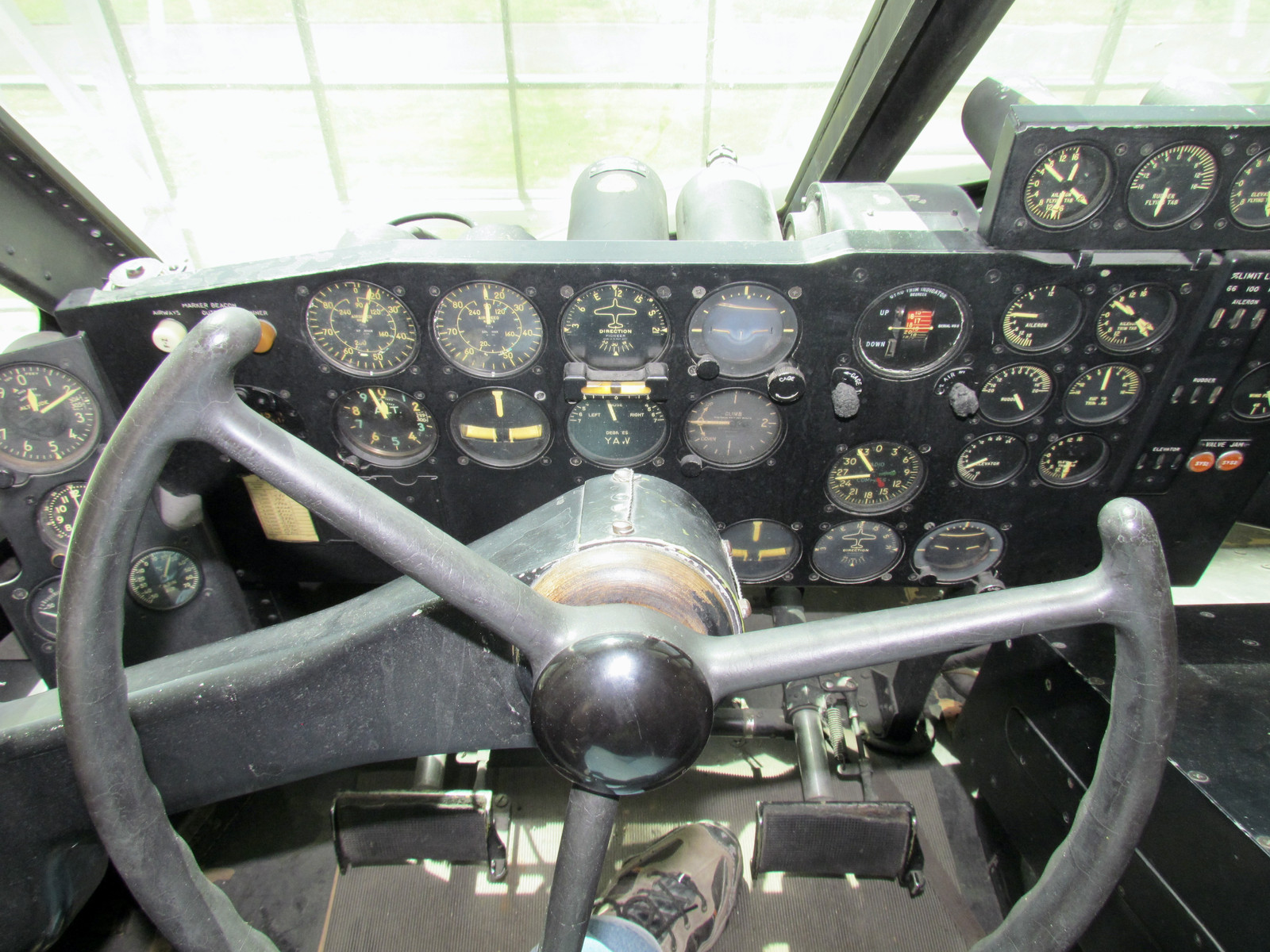
The control surface and trim surface position indicators are prominently displayed, and I’d assume this is because of the rather new hydraulic flight controls. With a cable system, assuming the cables haven’t broken, what the yoke does, the surfaces do. With hydraulics in the mix, this isn’t always so obvious, and I can understand a pilot’s desire to know what the stuff a couple hundred feet away is actually doing!
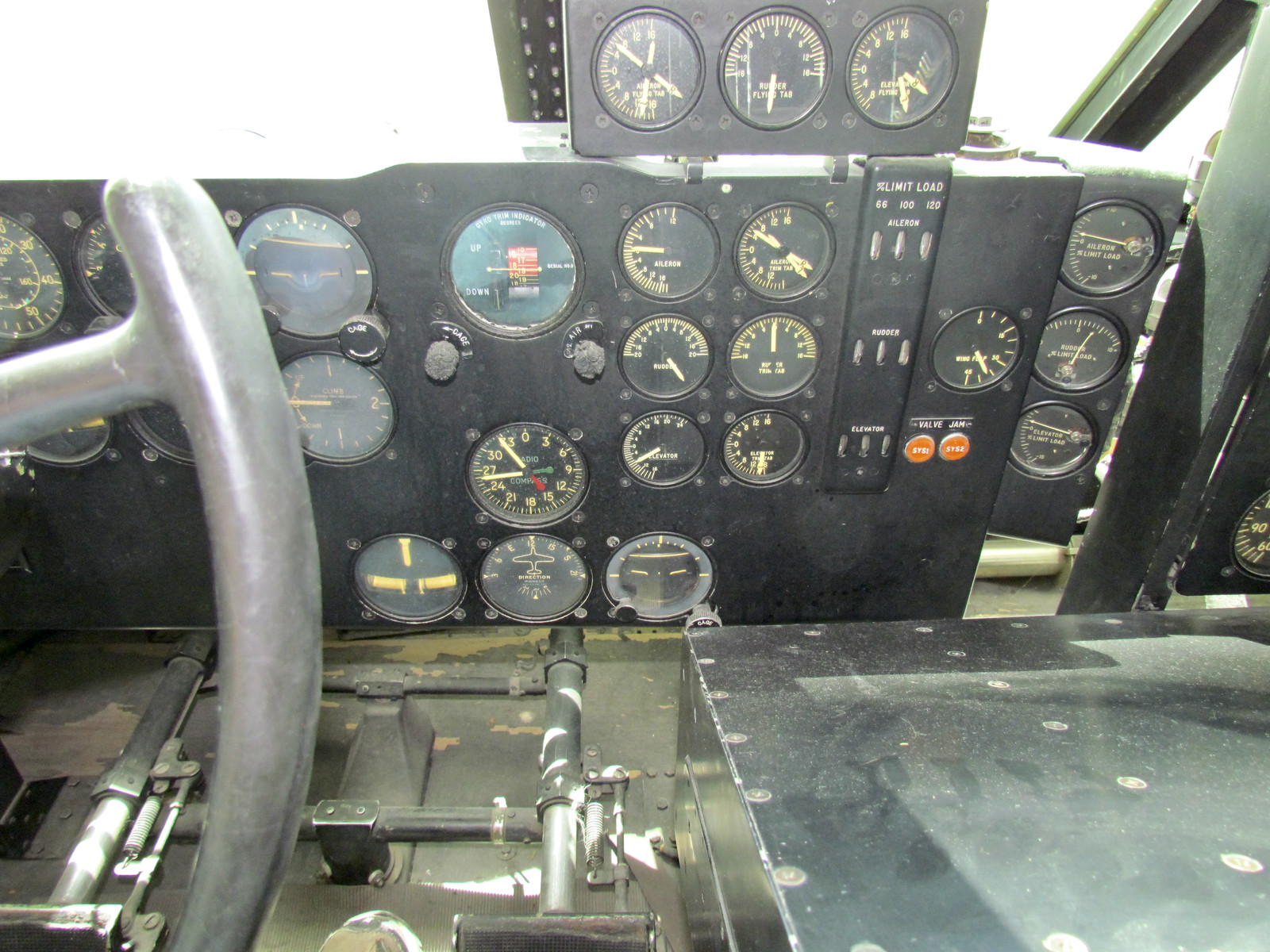
Continuing into the center, a set of engine gauges shows major parameters for all 8 engines. Each of these gauges is a “dual needle” type, of the sort used on twin engine airplanes throughout the years. Manifold pressure on top, RPM in the center, and down at the bottom, BMEP - Brake Mean Effective Pressure, a measure of how much power the engine is producing.
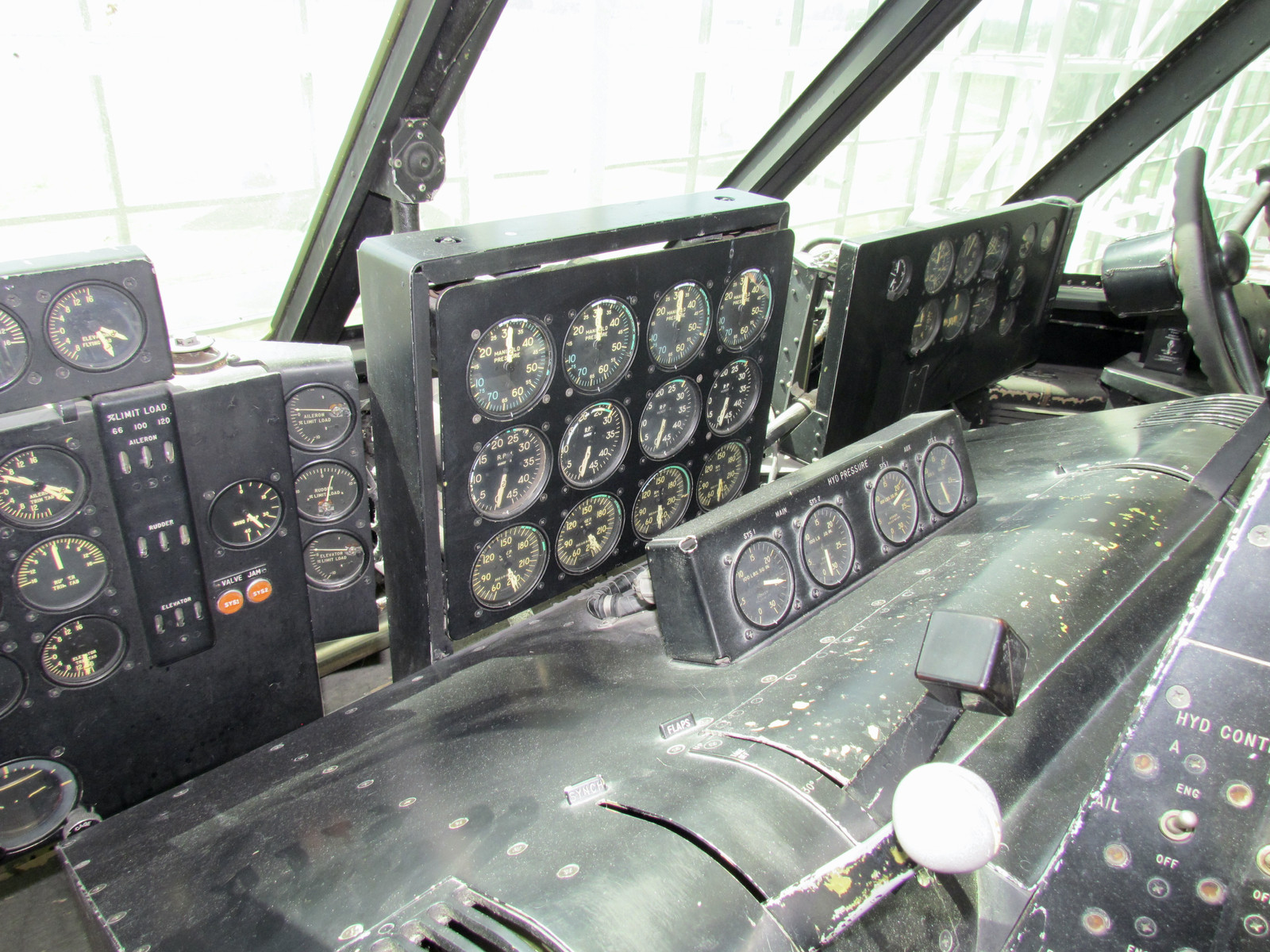
The copilot’s gauge set is quite small compared to the pilot’s set. Actually, so is the copilot here…
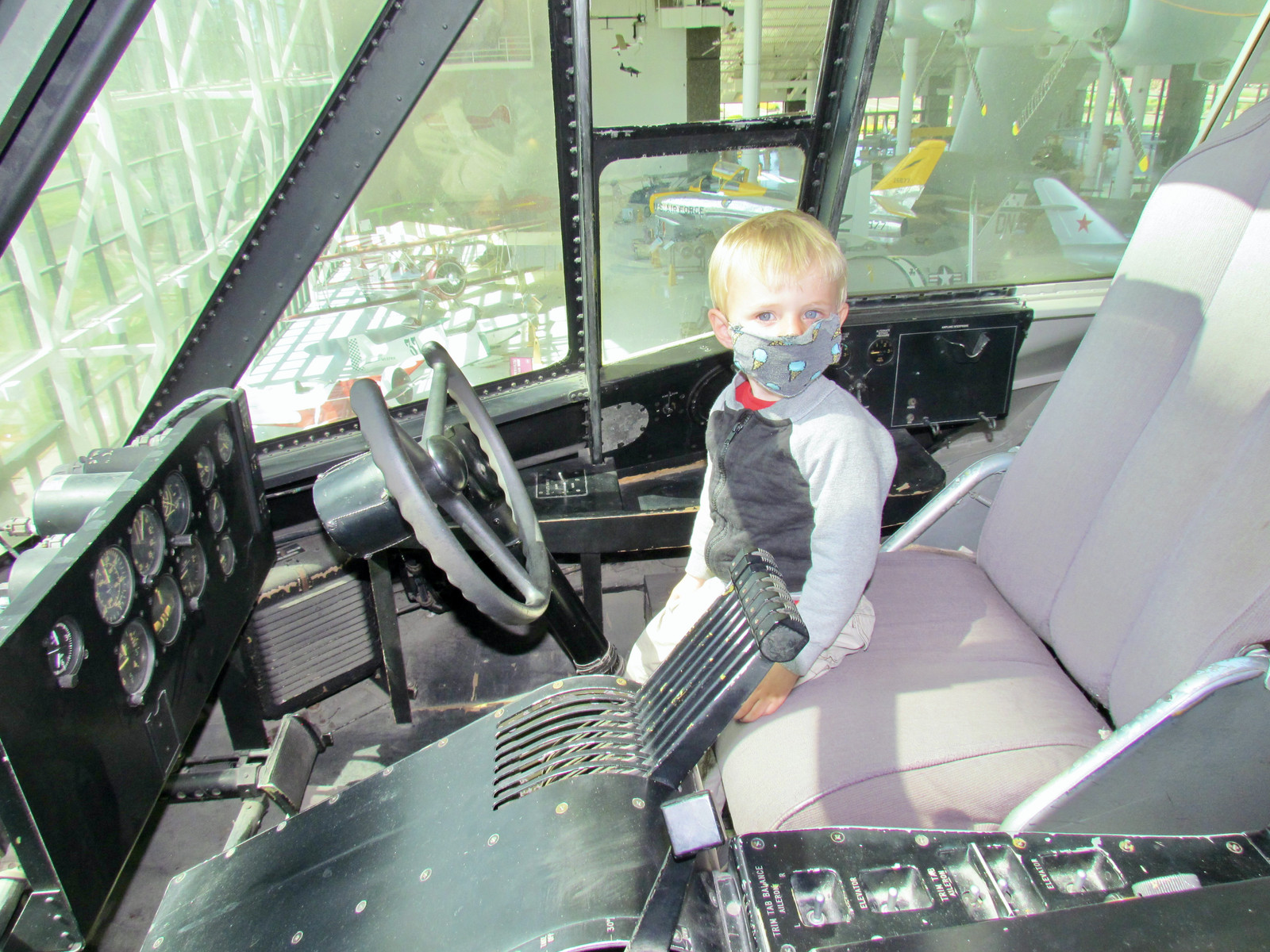
Moving around, the flight engineer’s station contains an awful lot more information about the engines - and here, there is a separate gauge for each parameter of each of the 8 engines. We’ve got them all - oil pressure, oil temperature, oil cooler cowl flap position, carburetor temperature, fuel pressure, fuel flow, cylinder head temperature, cylinder cooling cowl flap position, manifold pressure, RPM, and BMEP. Plus a variety of controls for the engines.
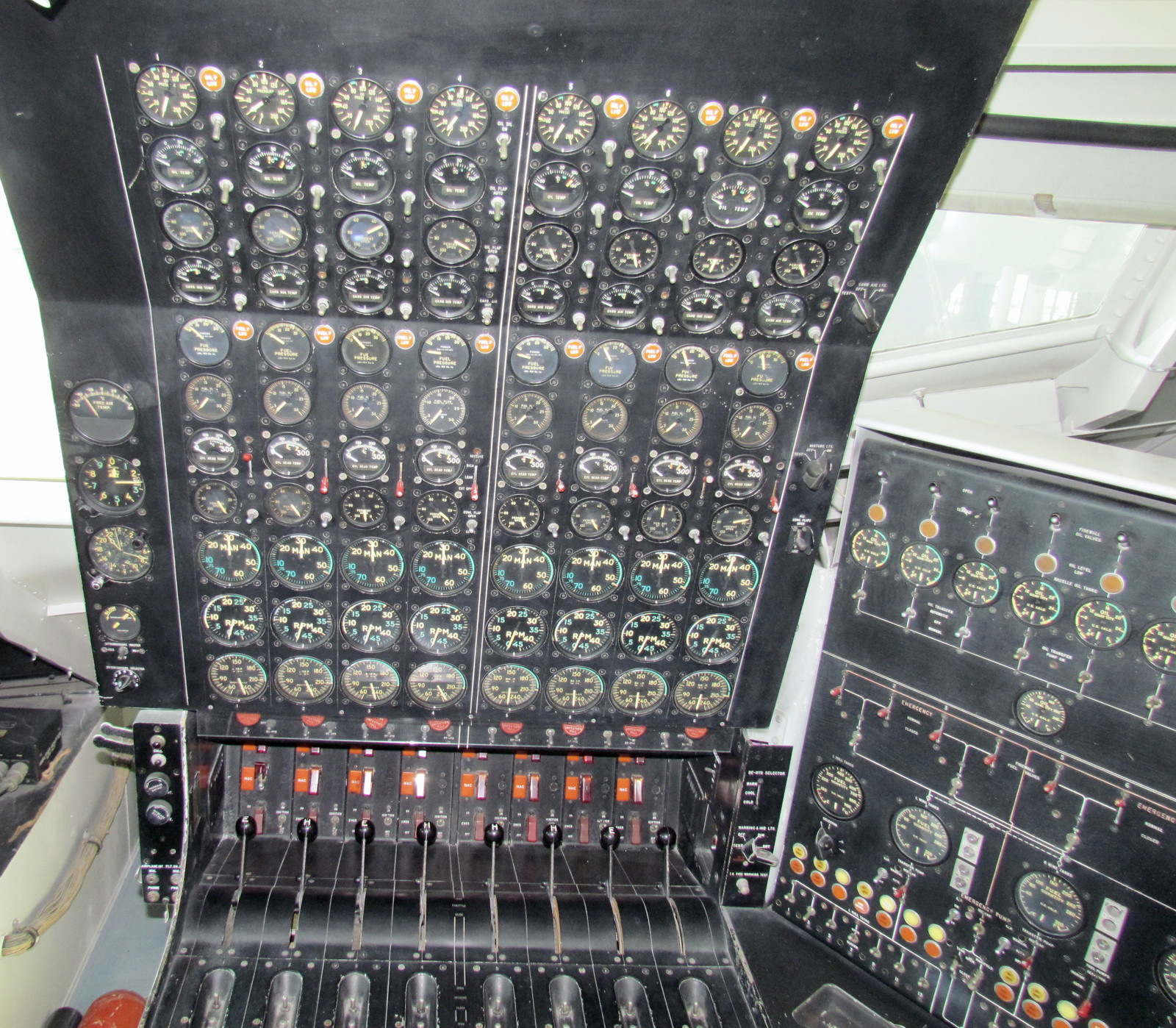
However, there’s more to an airplane than just the engines, so the rest of the flight engineer’s station relates to things like oil quantity and transfer pumps (important on engines that burn a hundred or so gallons an hour of gas and about two an hour of oil), fire extinguishing, fuel capacity and transfer, electrical, hydraulic, and pneumatic systems.
No master caution light here!
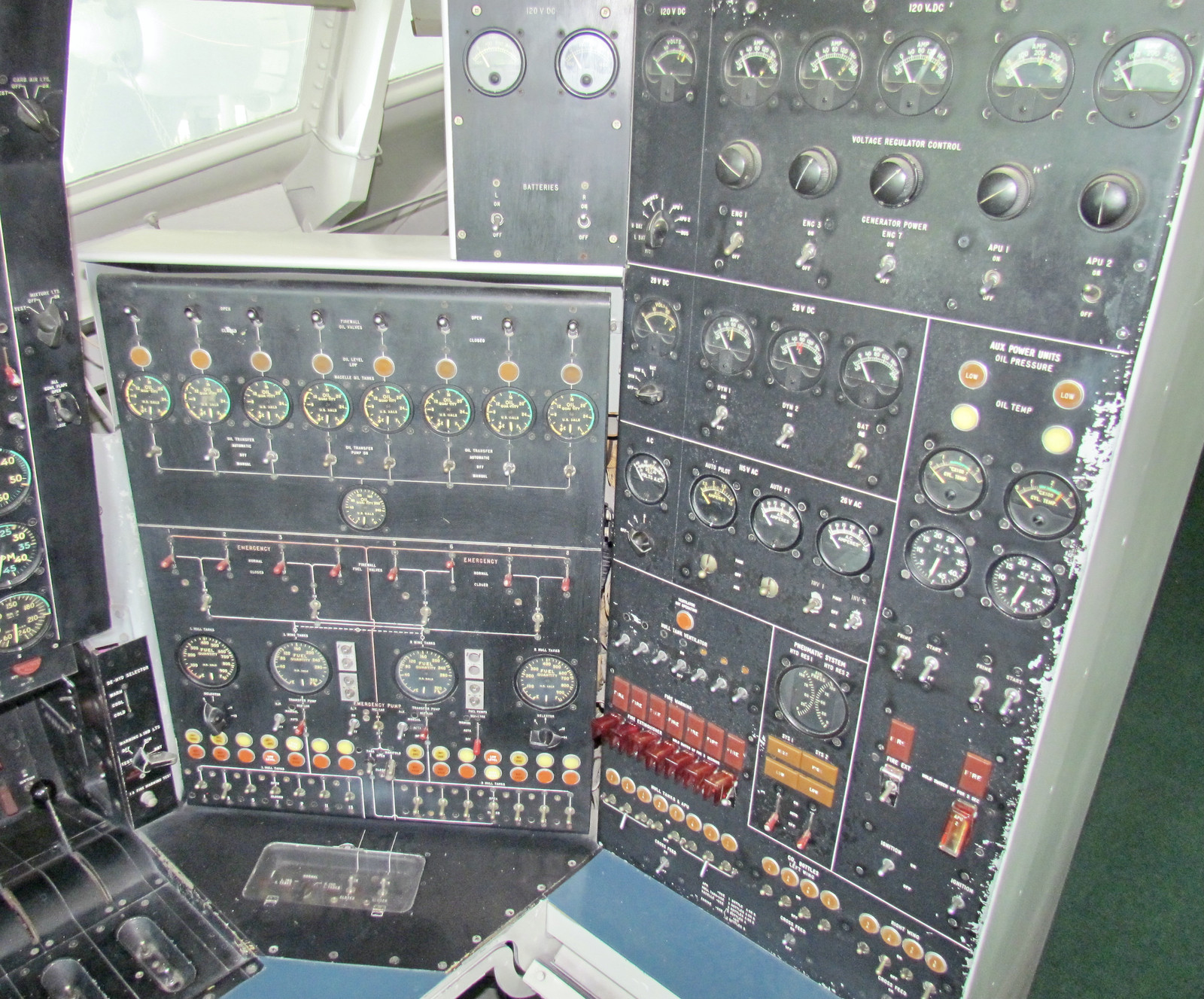
Continuing back, the navigation and communications station is another person. This plane was designed to haul troops over the Atlantic, out of the range of German U-Boats, and mid-1940s navigation was an awful lot of time with a plotter and chart. There’s plenty of chart space here, but not much in the way of radios.
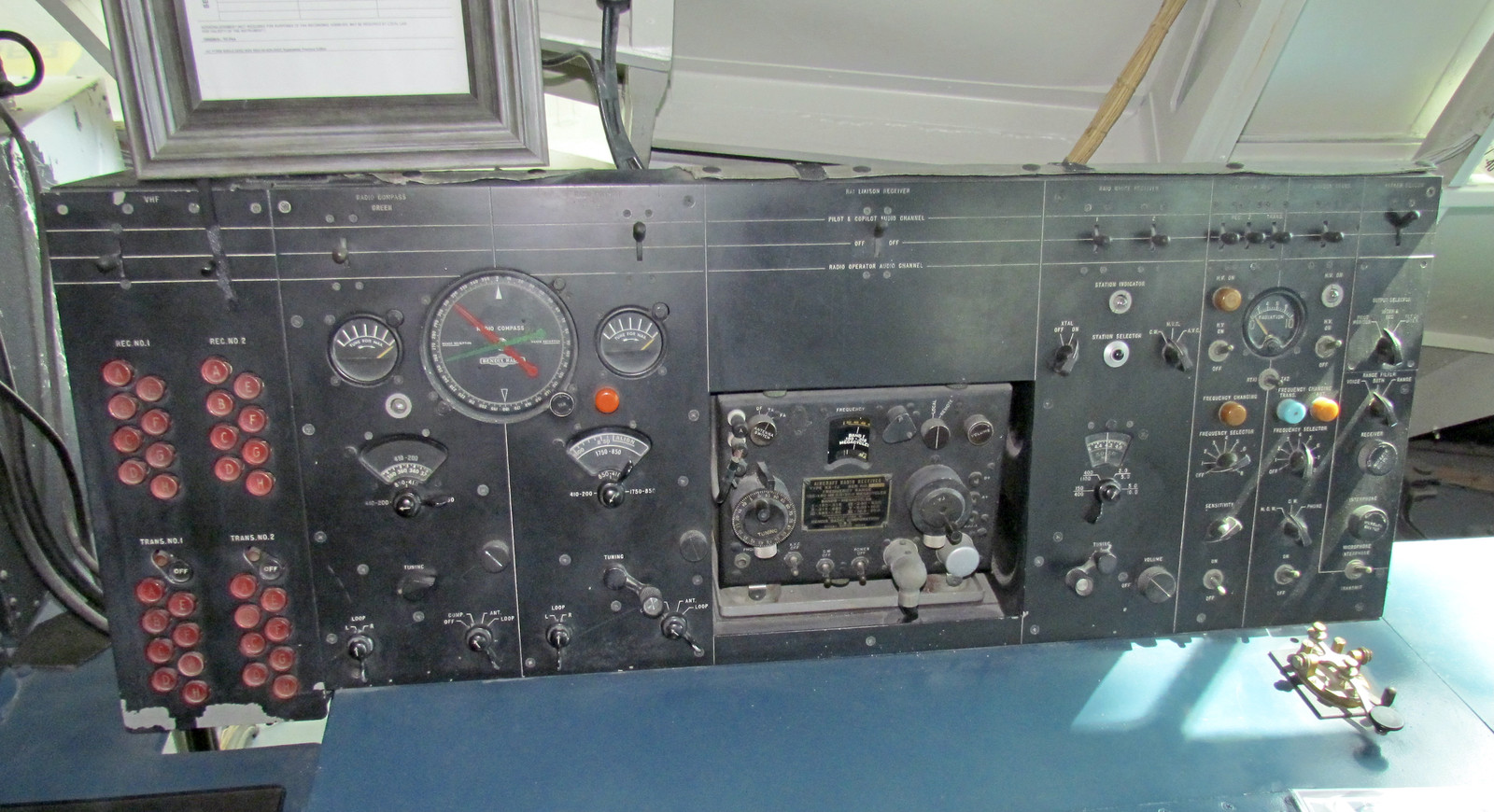
The next two stations aren’t actually flight related, so much as “airframe related.” There was quite a bit of concern at the time about a gigantic wooden airframe, and this set of plotters is connected to various strain gauges throughout the plane - literally watching to see how much deflection there is on various important pieces.
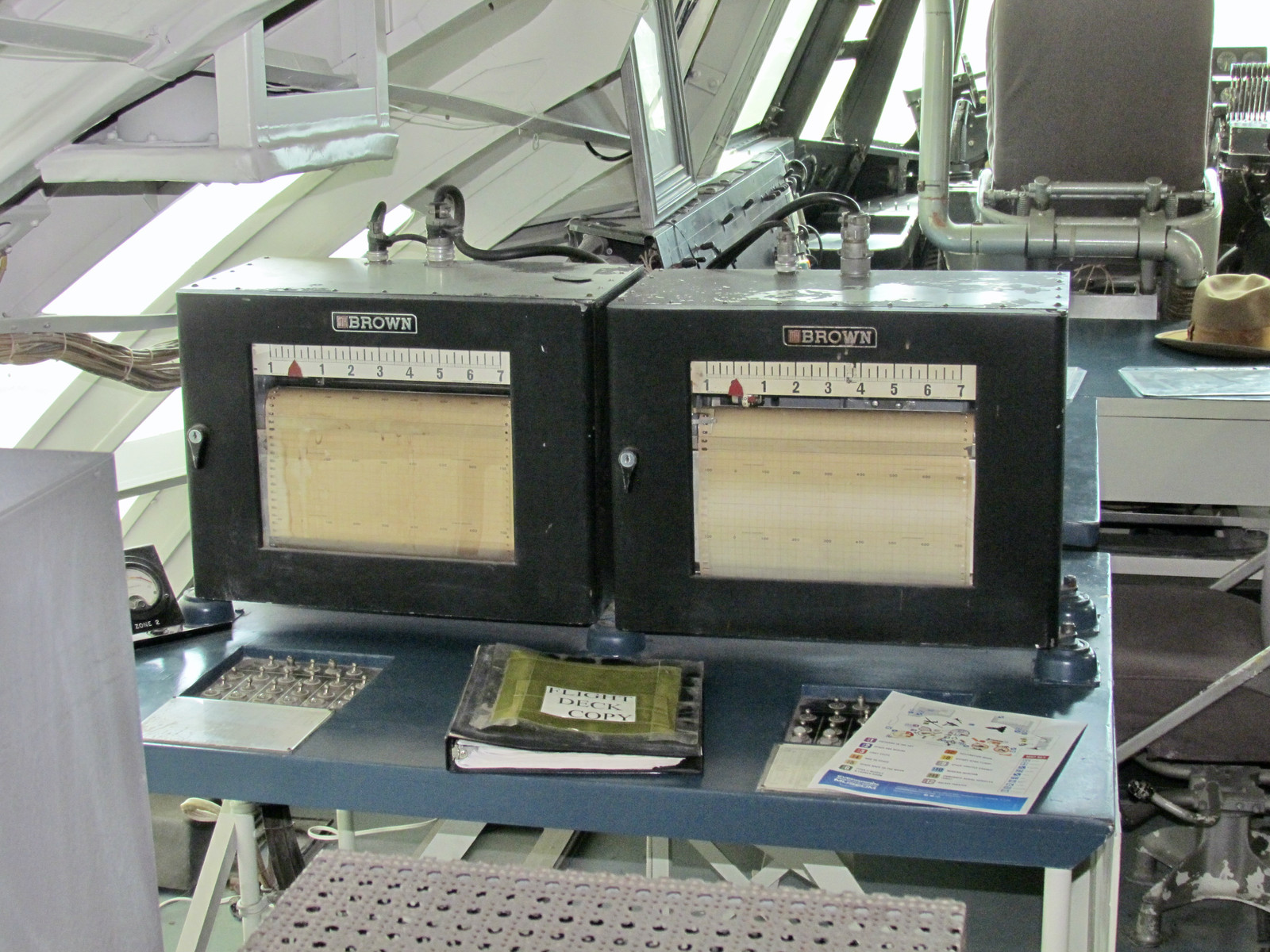
The next station back is also related to strain gauges, test equipment, and generally ensuring the airframe stays in the desired number of pieces.
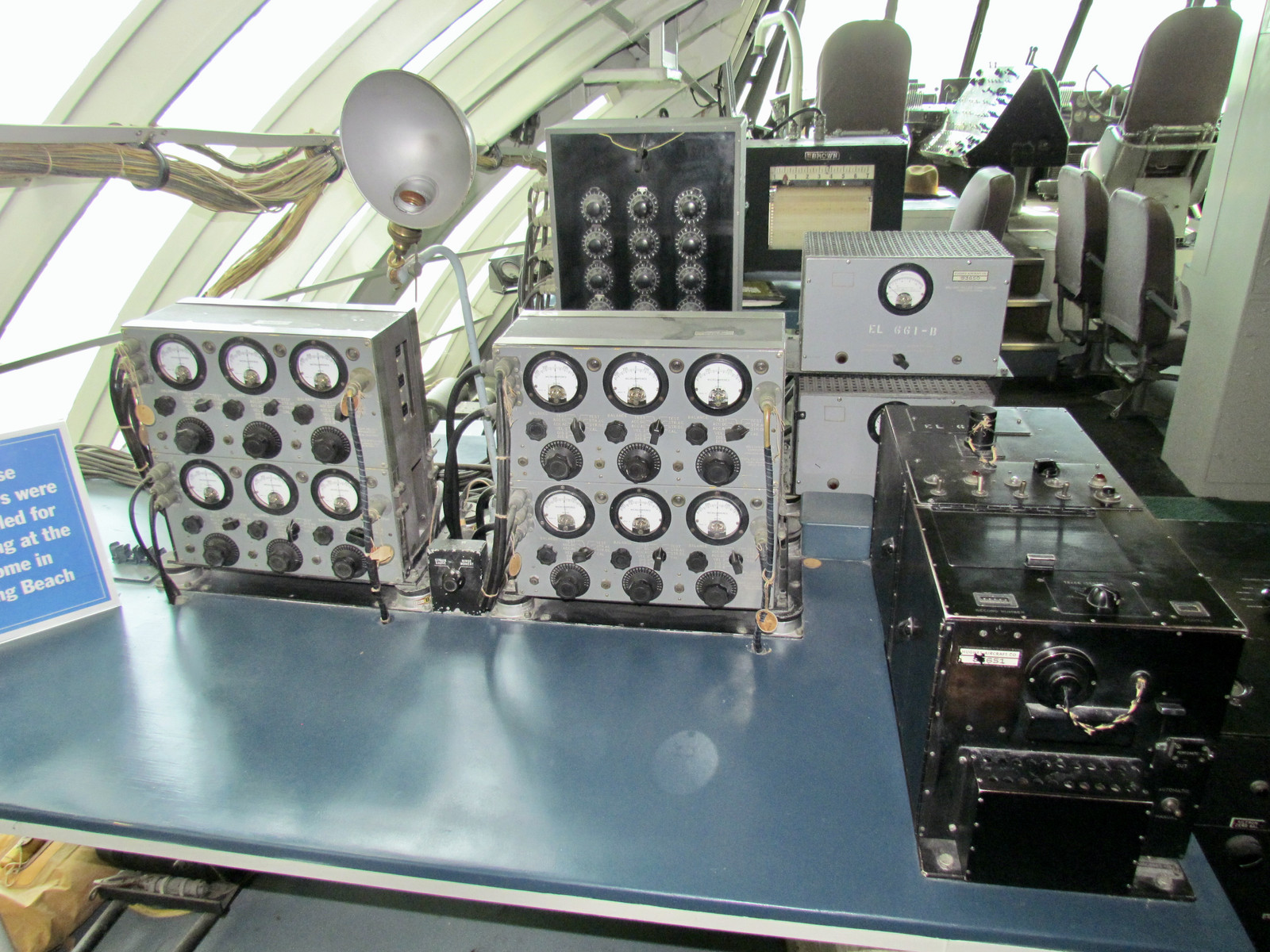
Continuing back past the flight stations, there’s a platform that elevates up and goes through a large hatch on the top of the plane. This is for water operations - the person up here could see the entire plane and command tug boats.
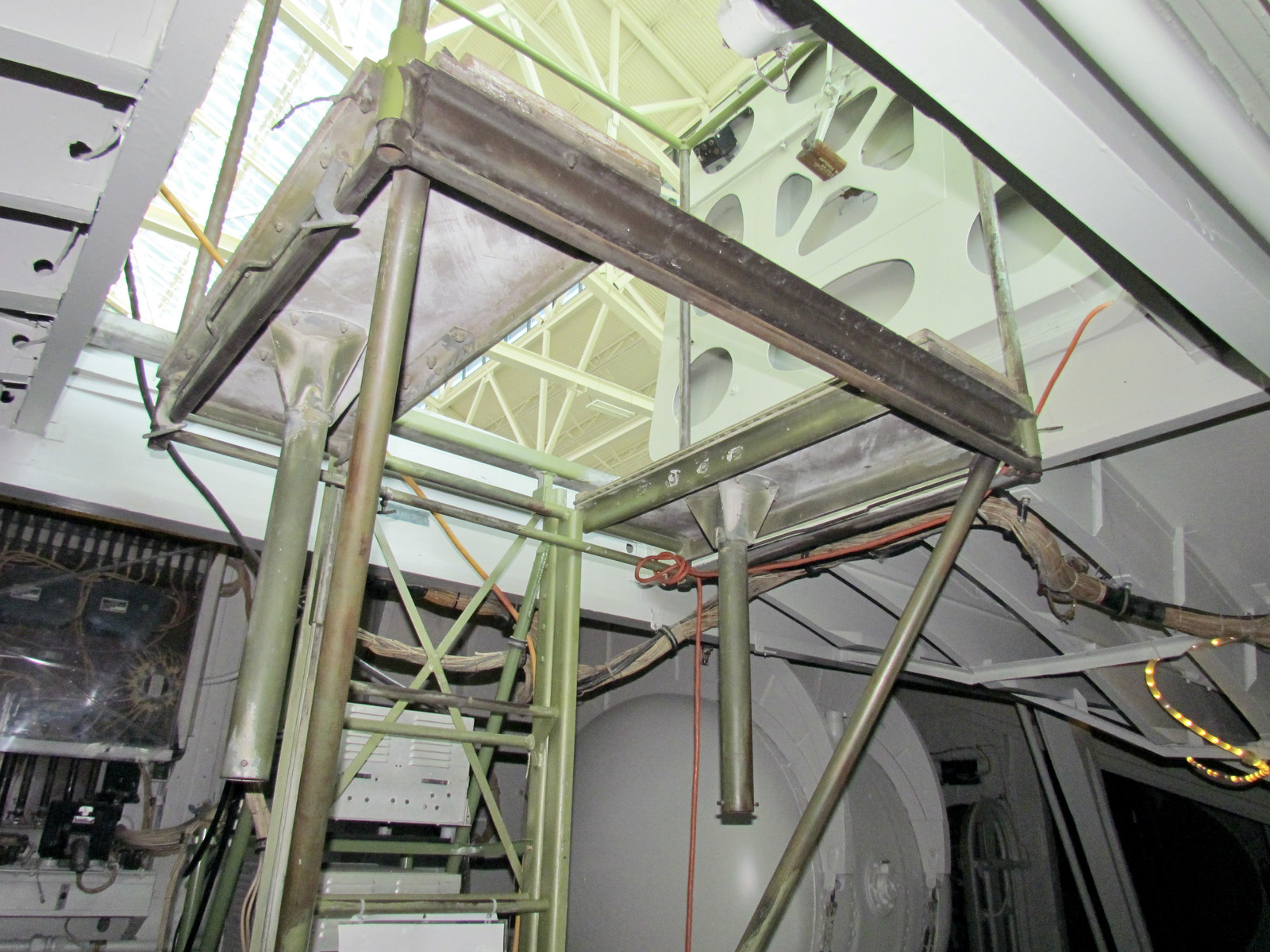
If you fly a larger aircraft of any sort, you’ll appreciate this. The two APUs (Auxiliary Power Units, one for electrical and one for hydraulic) share the flight deck with everyone else. On the plus side, you’ll know when they act up. On the minus side, you’ll hear them constantly.
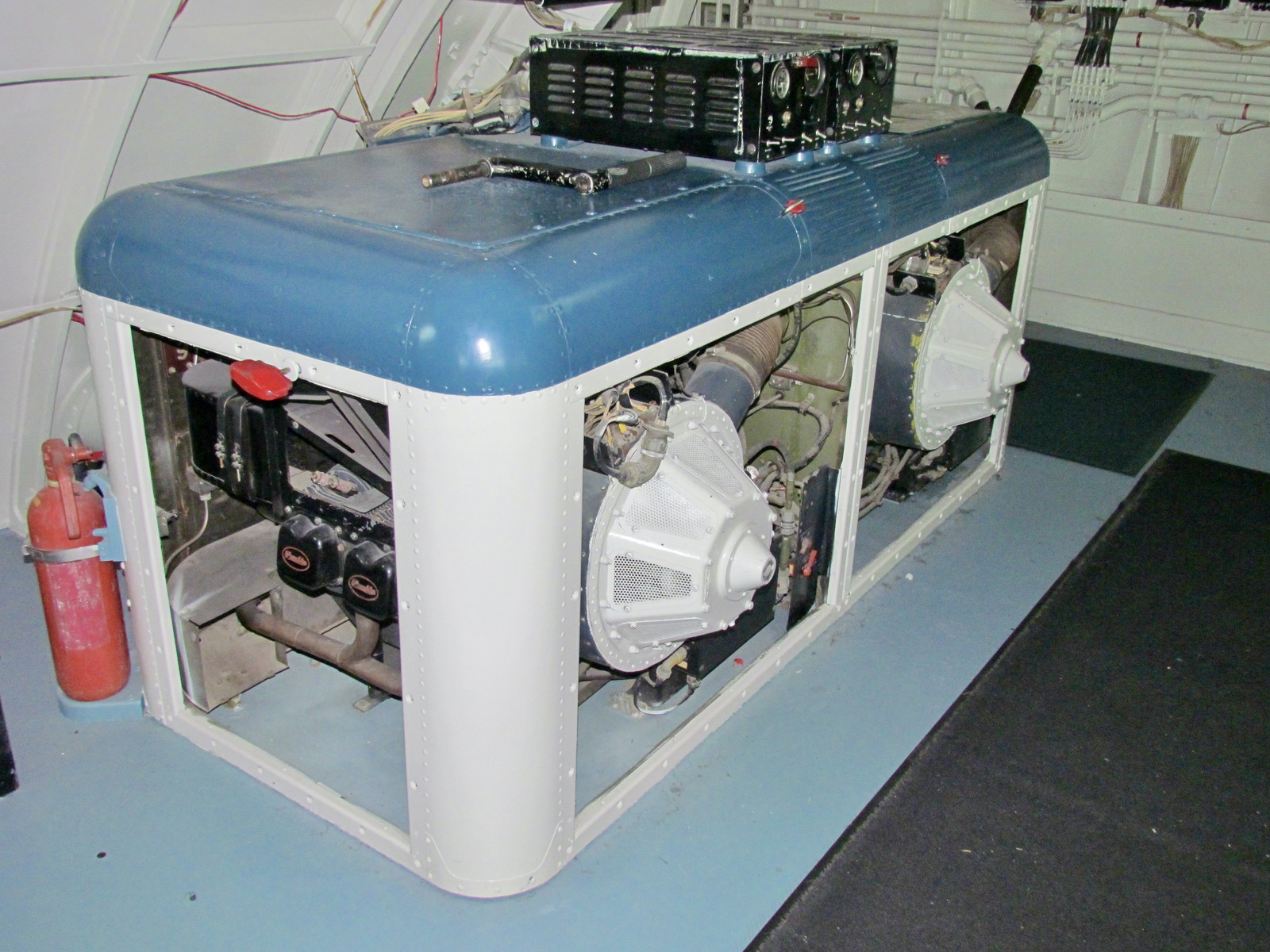
These aren’t quiet little engines. These are small aircraft engines!
Except, you probably couldn’t hear them over the sound of the 24,000 horsepower mounted on the wings, spinning props right outside the skin. Though, with the skin being layers of wood, it might be quieter than metal. In any case, I’m sure the flight deck was a deafening roar throughout flight operations…
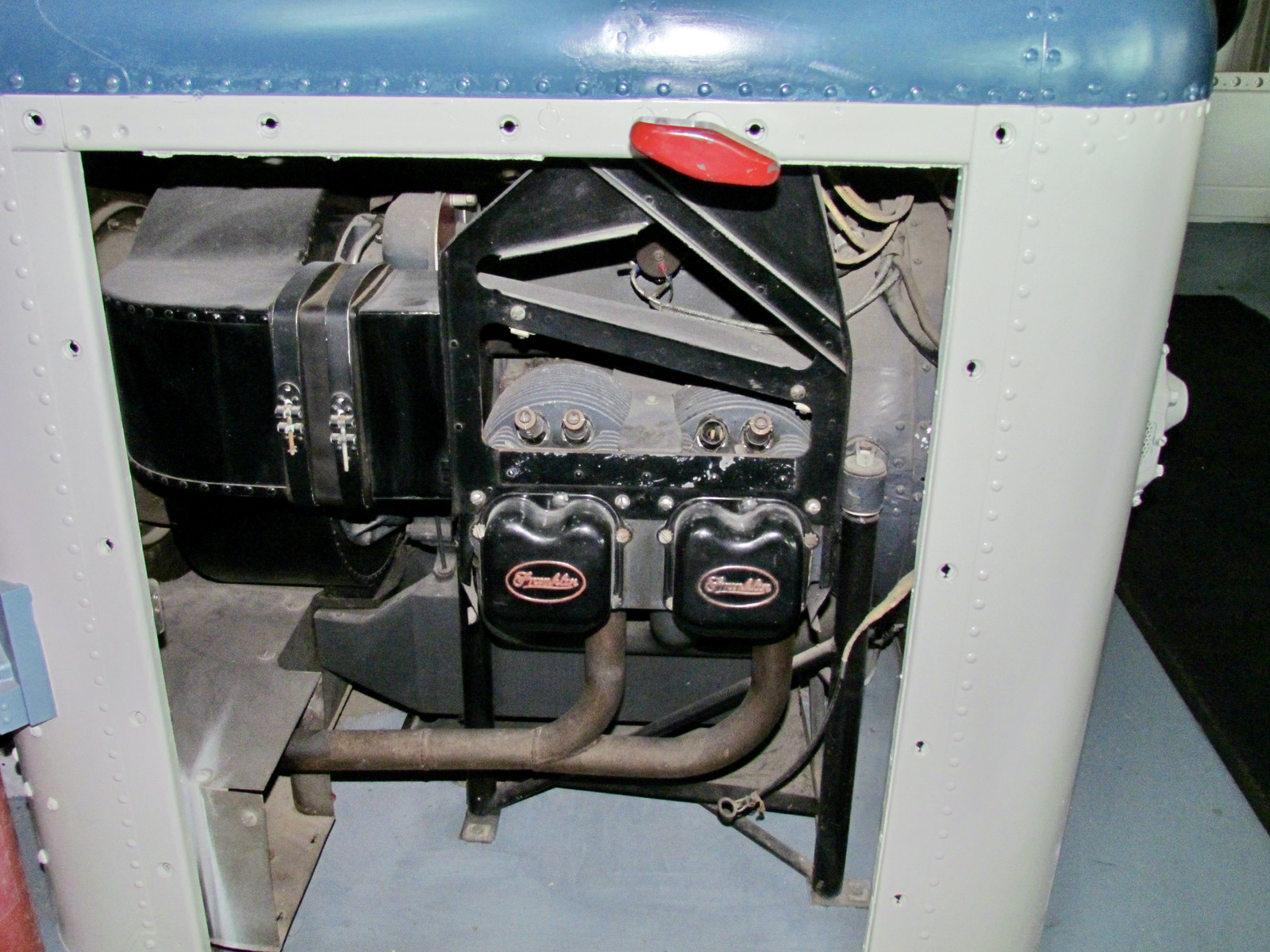
This is an oil tank. The auxiliary oil tank. Why? Because radial engines burn prodigious amounts of oil in addition to their insane amounts of gasoline. For long duration trips (say, across the Atlantic), you need huge amounts of oil if you want to run a bunch (say, 8?) radial engines without running them dry. This can transfer out to the various engines to keep their oily sides oily. Ideally, this is the inside of them.
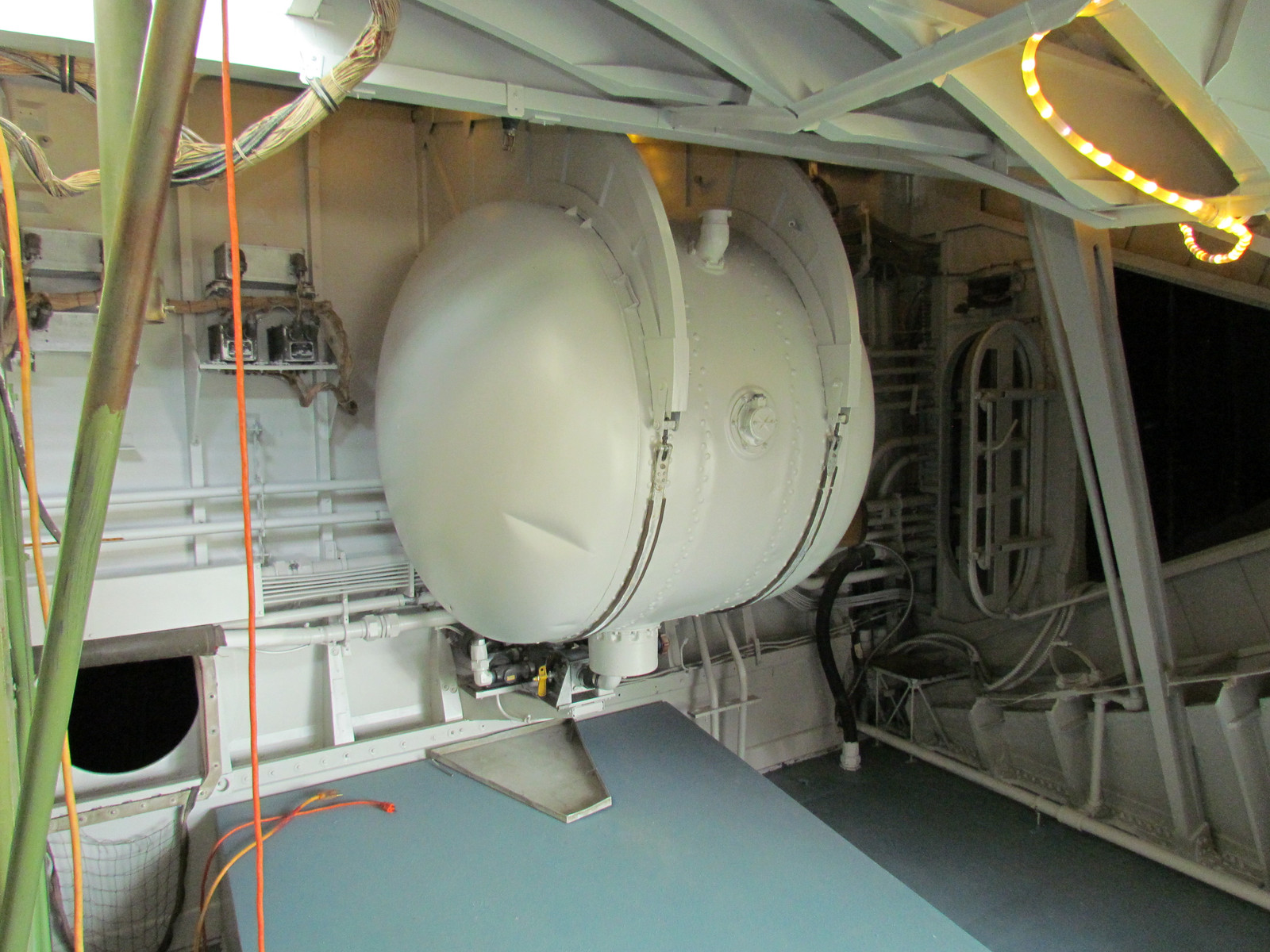
Should you need access to various parts of the wing during flight, you can just walk out there. This is the catwalk through the wing for access to… actually, I’m not entirely sure what one can do out there. The engines are cantilevered far enough forward that you probably can’t get to them in flight, and I’m not sure what else might be available to you during flight that matters. But you can walk out there, if you have a need!
“Walking into the wings during flight” is actually common enough in the late piston era. The B-36 Peacemakers also had walkable wings, and I expect a few other airframes included the feature.
Realistically? This is just another route for the thundering racket of 12,000 horsepower per wing to bleed into the flight deck.
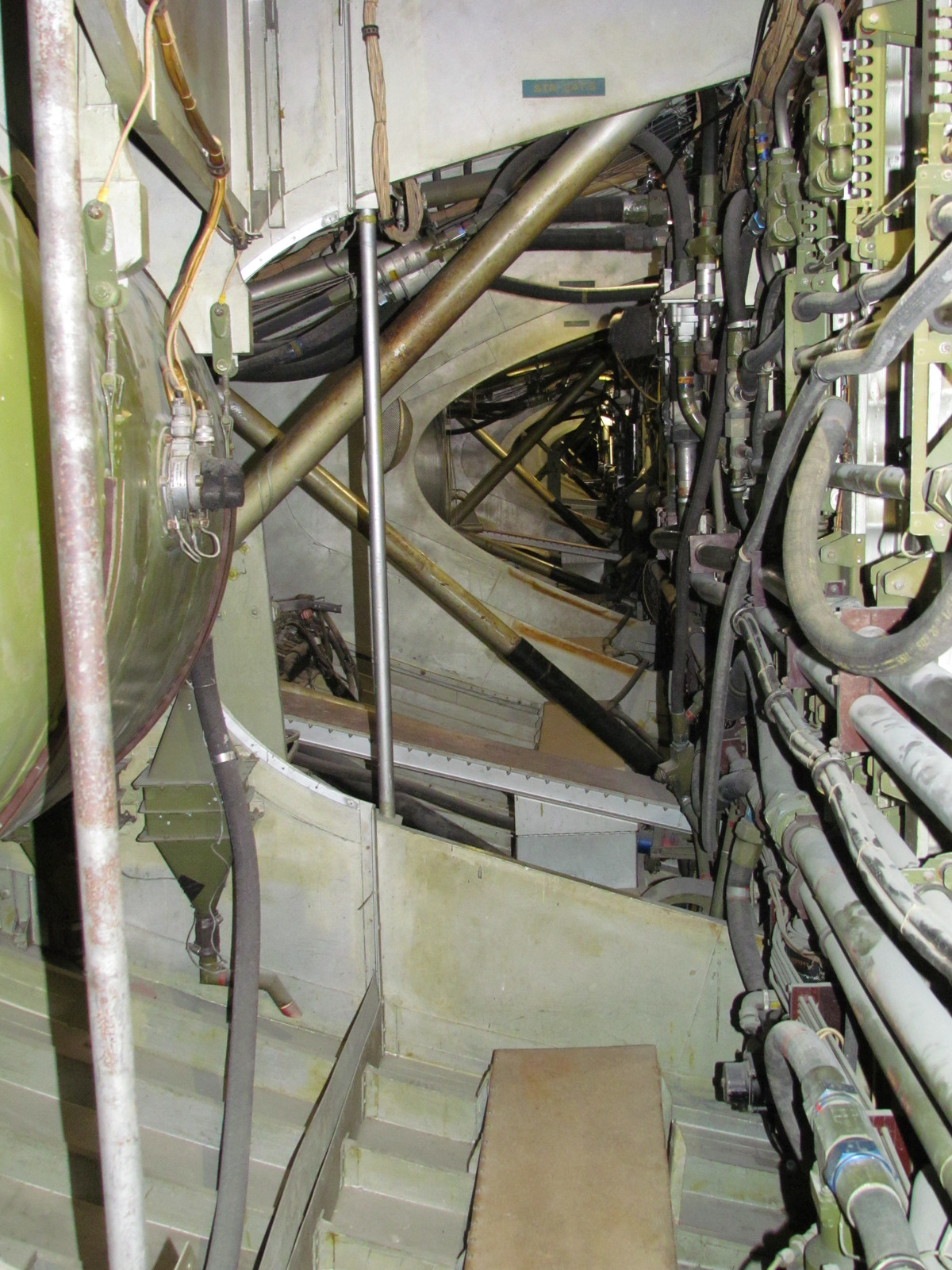
That’s about it for the flight deck! This is an absurdly large airplane!
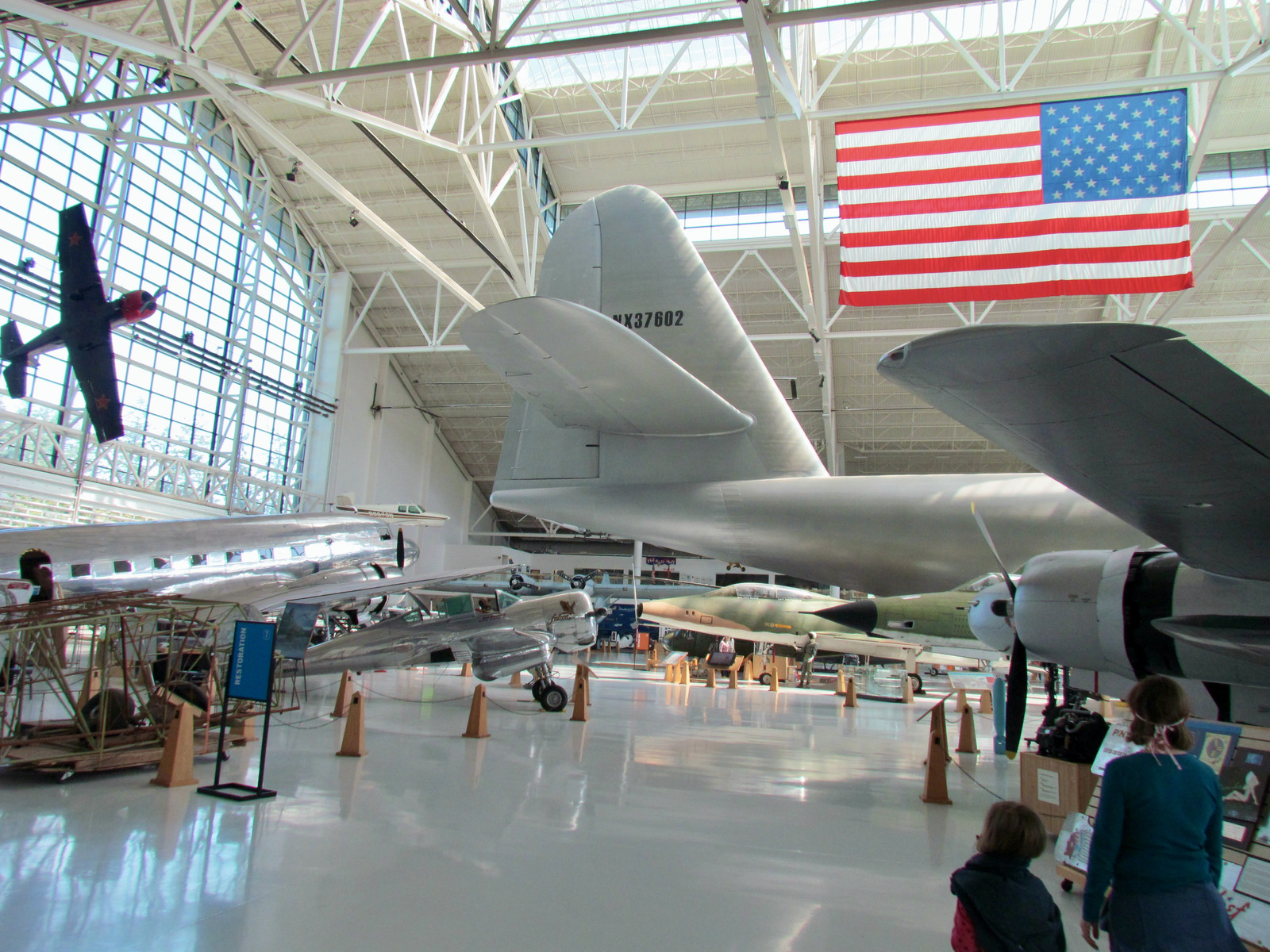
Interlude: The Choppers
Being mostly done with the aviation side of the museum (space and really pointy planes are in the other building), we wandered outside for some playground time (excellent) and some food from the truck.
And then I saw the FOD Walk.
The big parking lot had been fenced off in the morning, which I noticed (mostly because it would have been a perfect place to park a truck and trailer). Fine, we found somewhere. I assumed they were resurfacing it or something. But then, I saw the FOD walk.
FOD: Foreign Object Damage. Or, in other words, “A turbine engine sucked something big and hard into it and ruined the thing.” It happens. A FOD walk is a line of people, walking down a region of flat stuff, picking up anything big, or hard, or generally anything that looks like it could bother a turbine. And this was clearly a FOD walk.
So I asked. And discovered that a local Army division was bringing some helicopters in for what, based on a few conversations, amounted to nothing more than “We have some people who haven’t seen the museum.” Well, I appreciate other people flying helicopters, so we waited.
Well, crap. I’m glad I’m on their side.
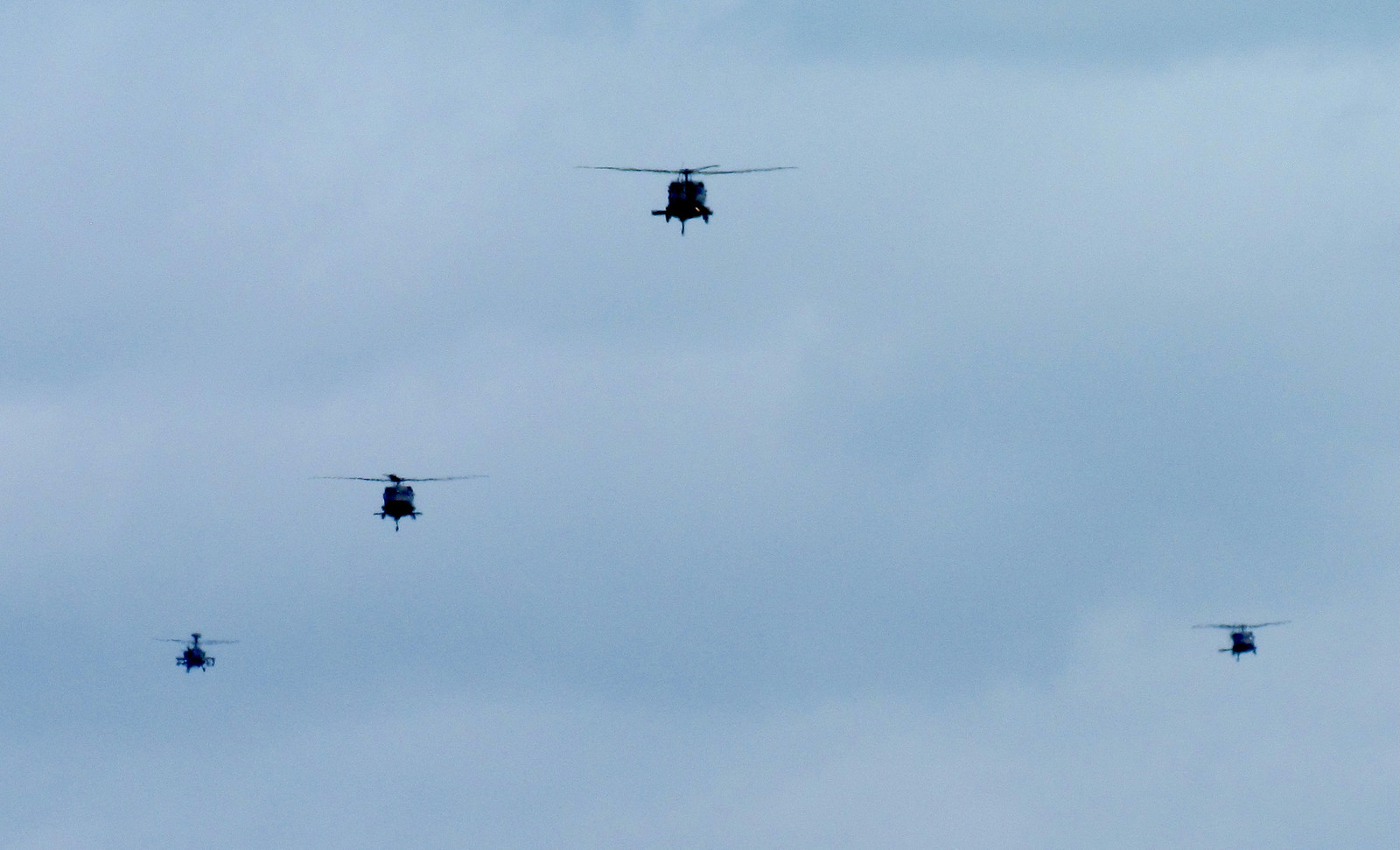
Wait. That’s an Apache. I’m really glad I’m on their side.
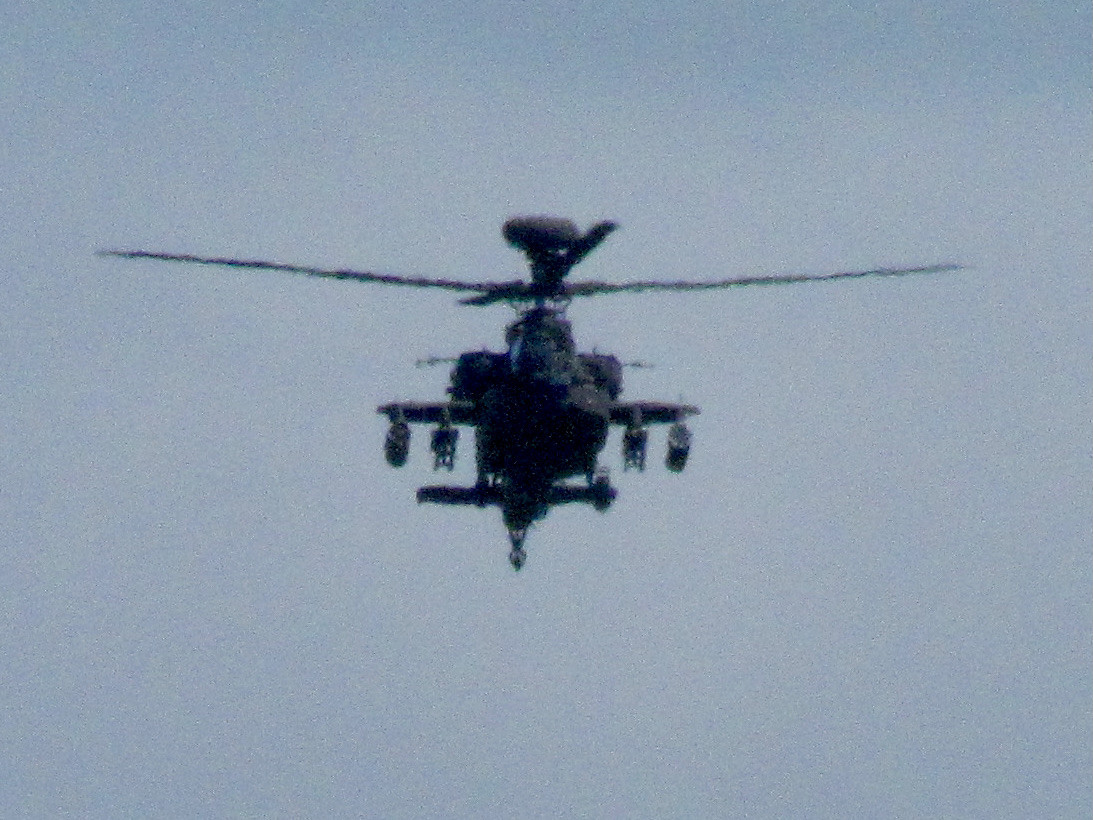
I… think that’s a Sasquatch? On the engine nacelle?
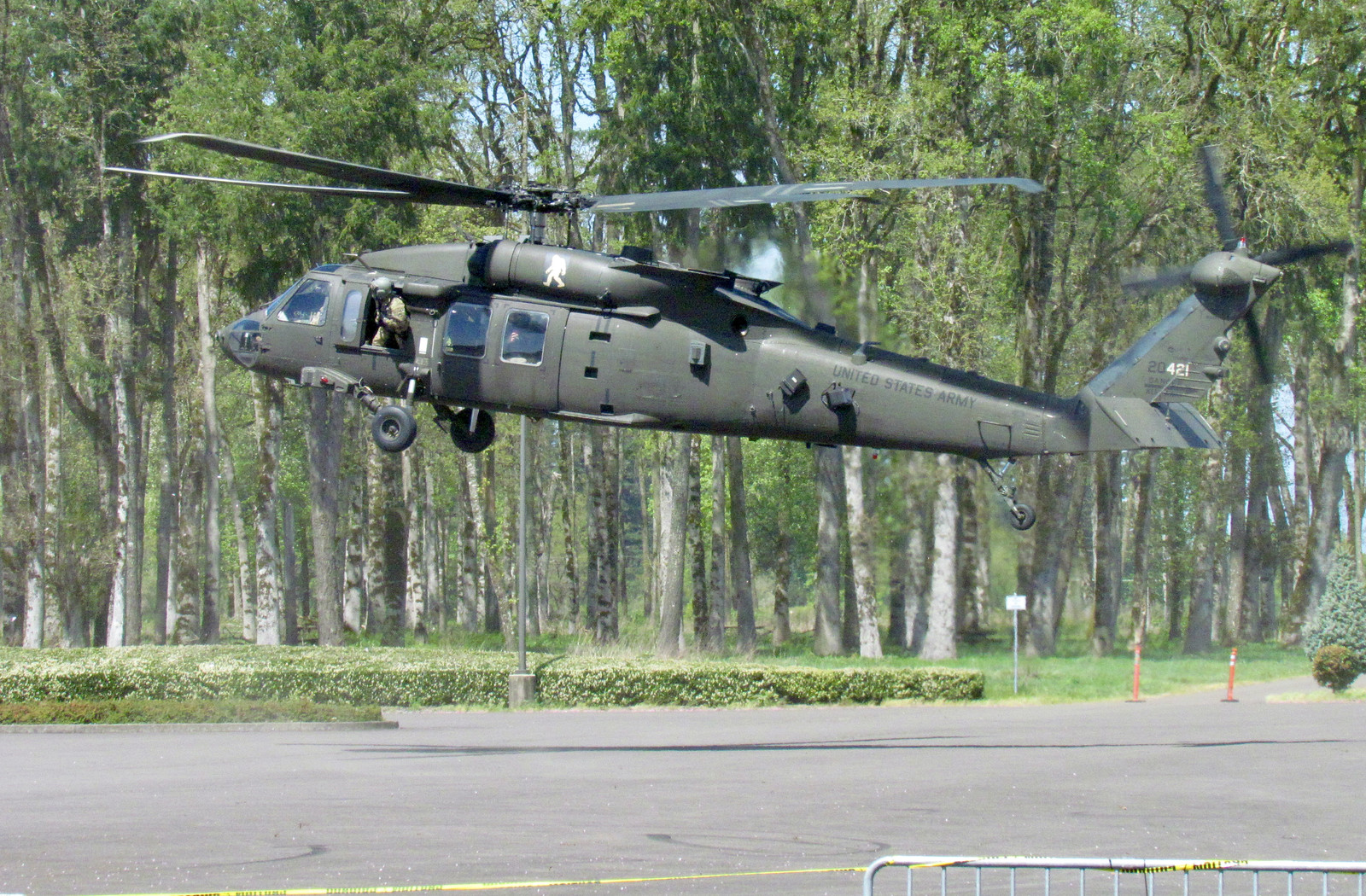
… oh, man, I’m glad they’re not pissed at me.
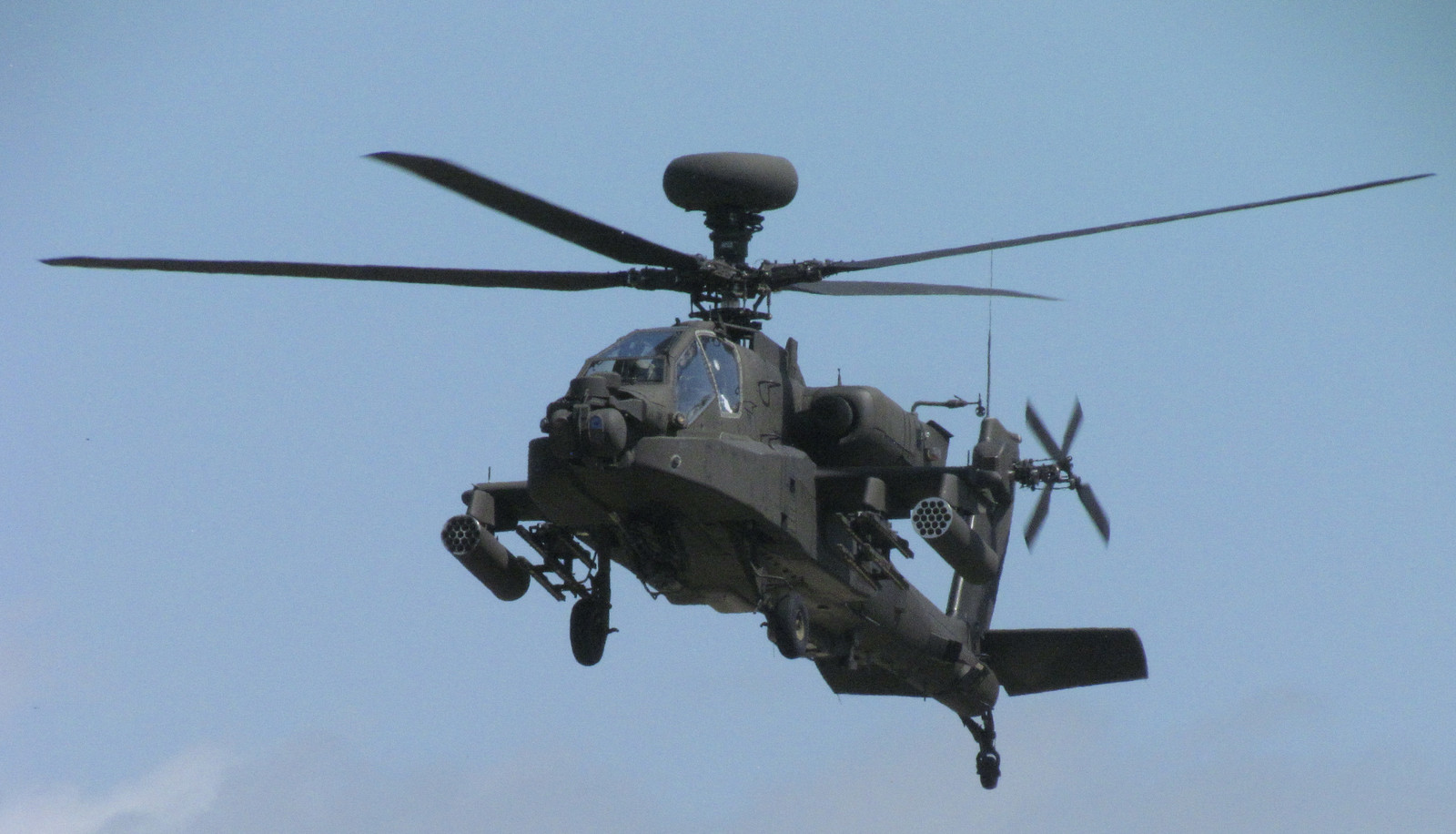
Did you know Apaches have a weird tail rotor, in two planes, not at 90 degree angles? I didn’t either!
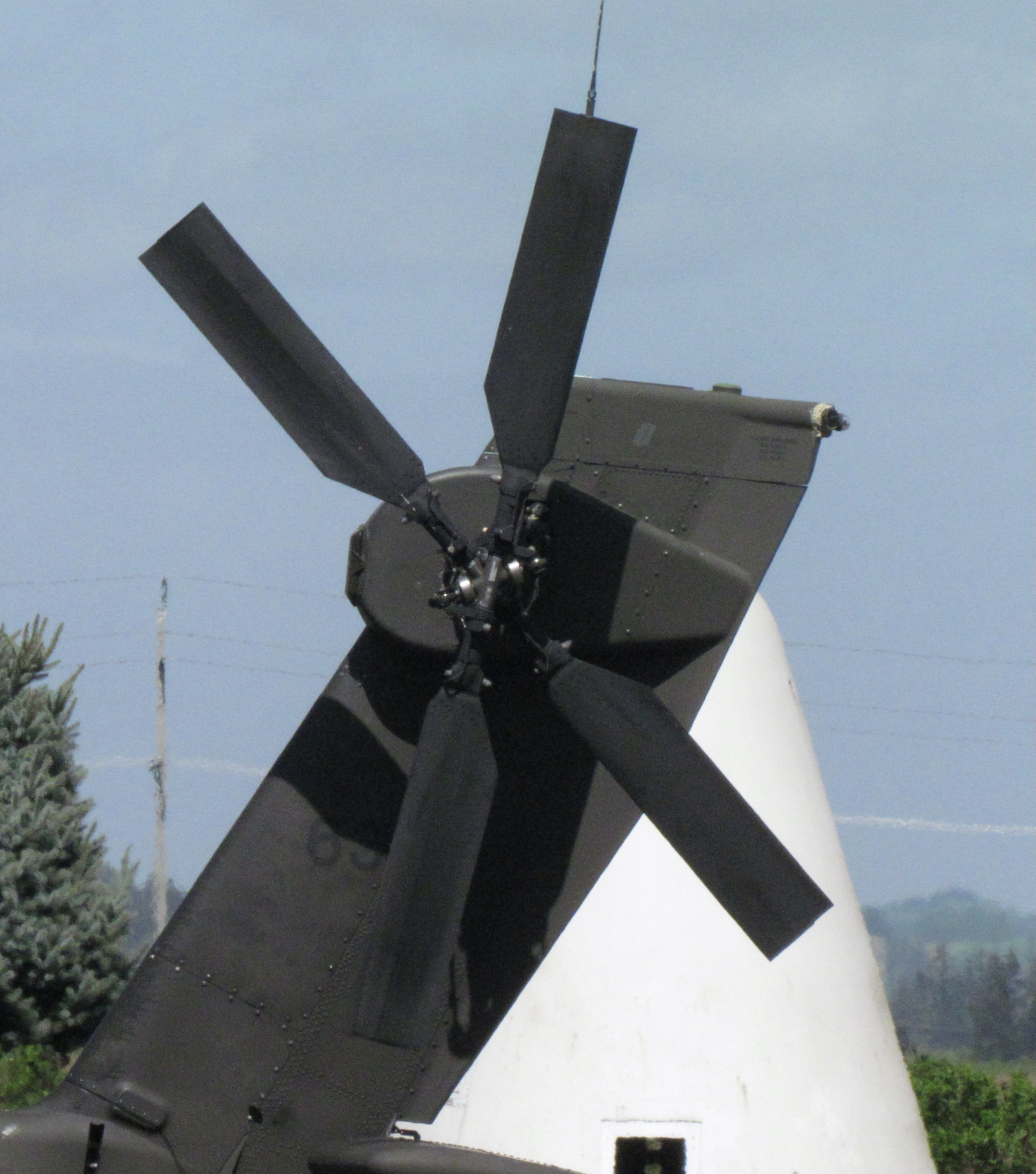
We didn’t exactly give the kids details on what might be coming. They were on the playground, and when the helicopters started coming in, we suggested they go watch. Two small kids, a lot of helicopters… excellent attention paid! We really had no idea this was happening until about 10-15 minutes before it happened. Great timing!
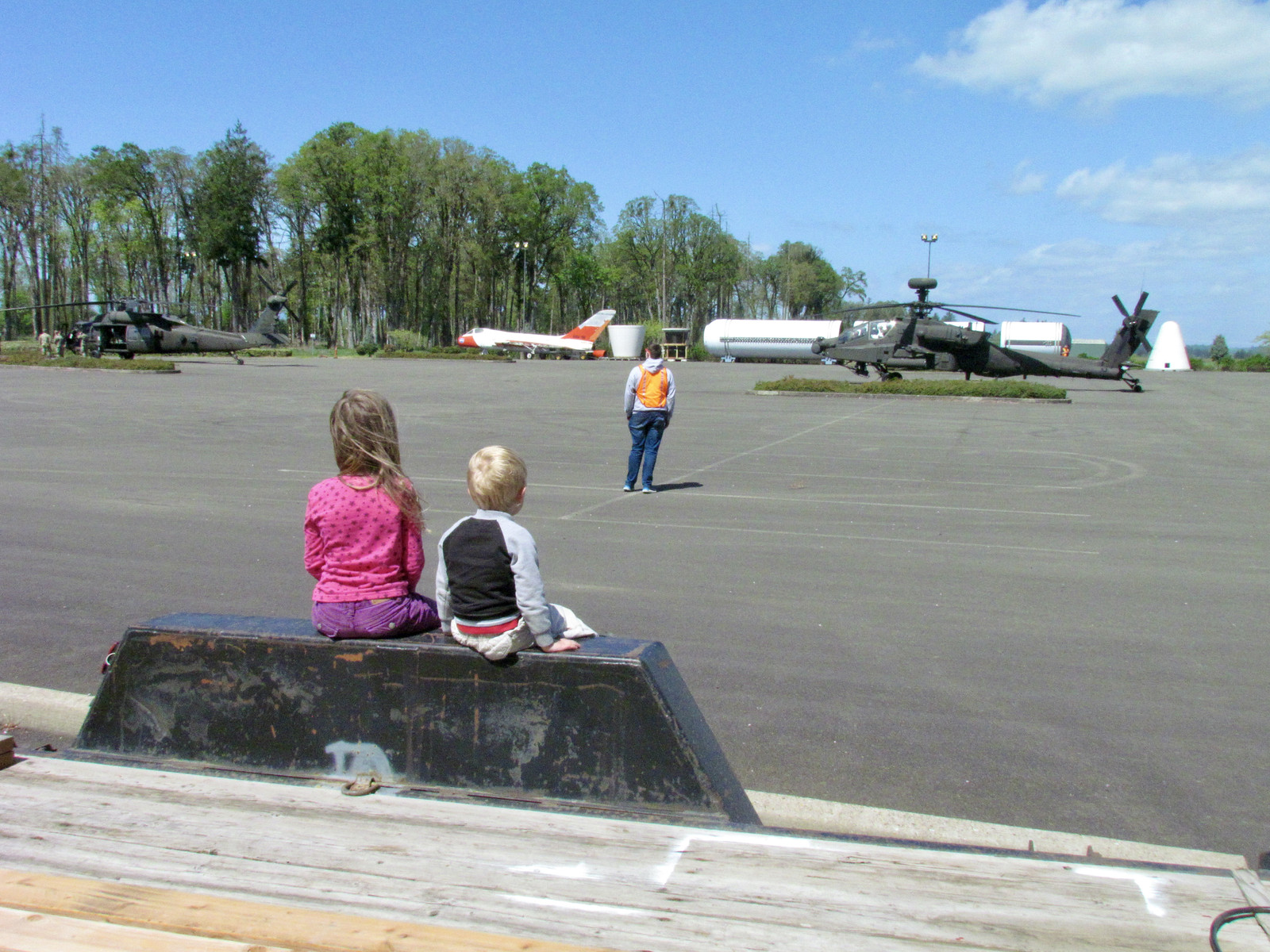
No. Nope nope nope NOPE! That is the WRONG end of an Apache to be seeing. Pissed off wasps of doom, they are.
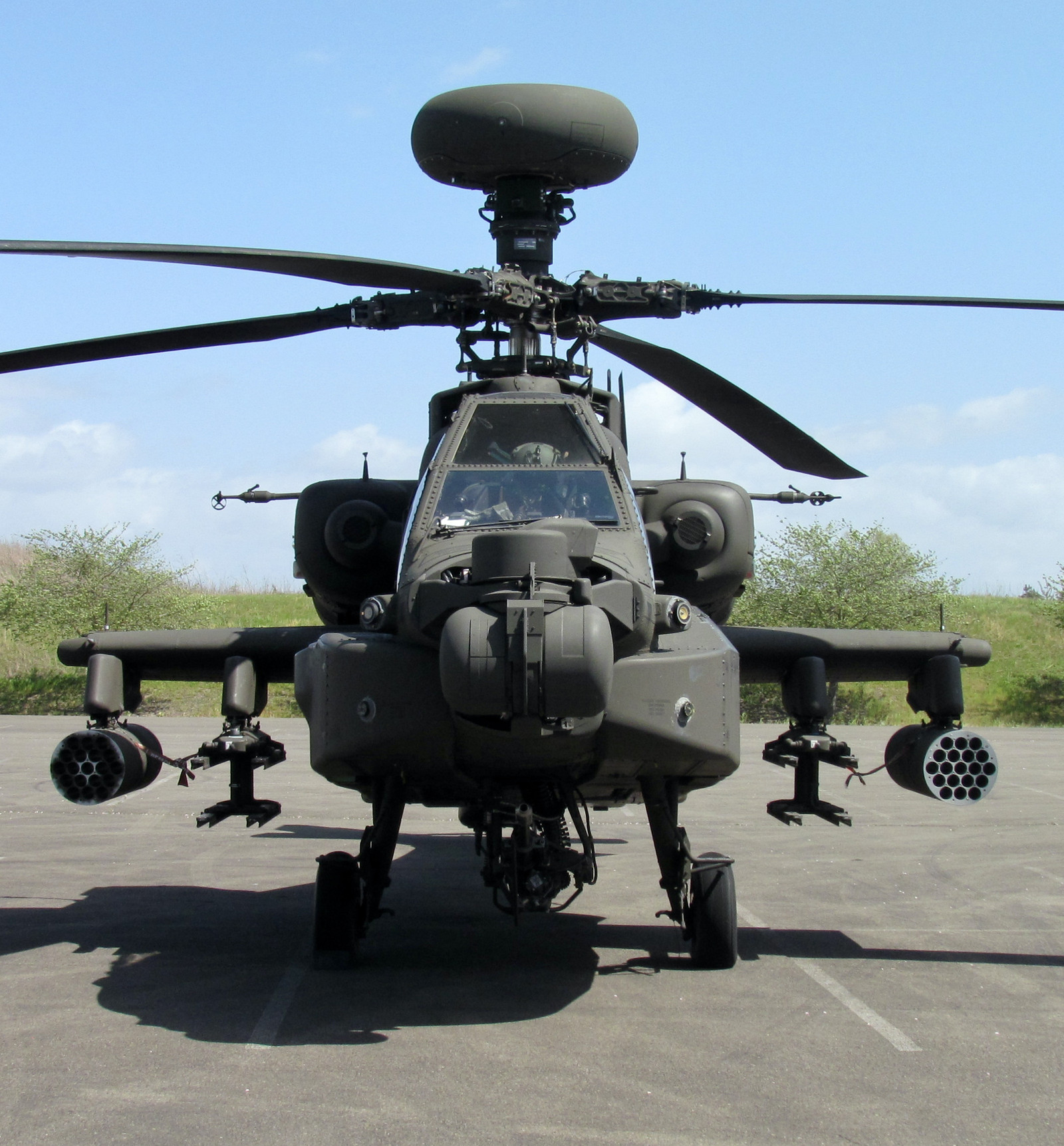
They have a stinger up front. It shoots an alarming amount of dense metal. That’s lobbing 30mm rounds at 2600+ fps, at 300 rounds per minute. Nope. Do not get in the way.
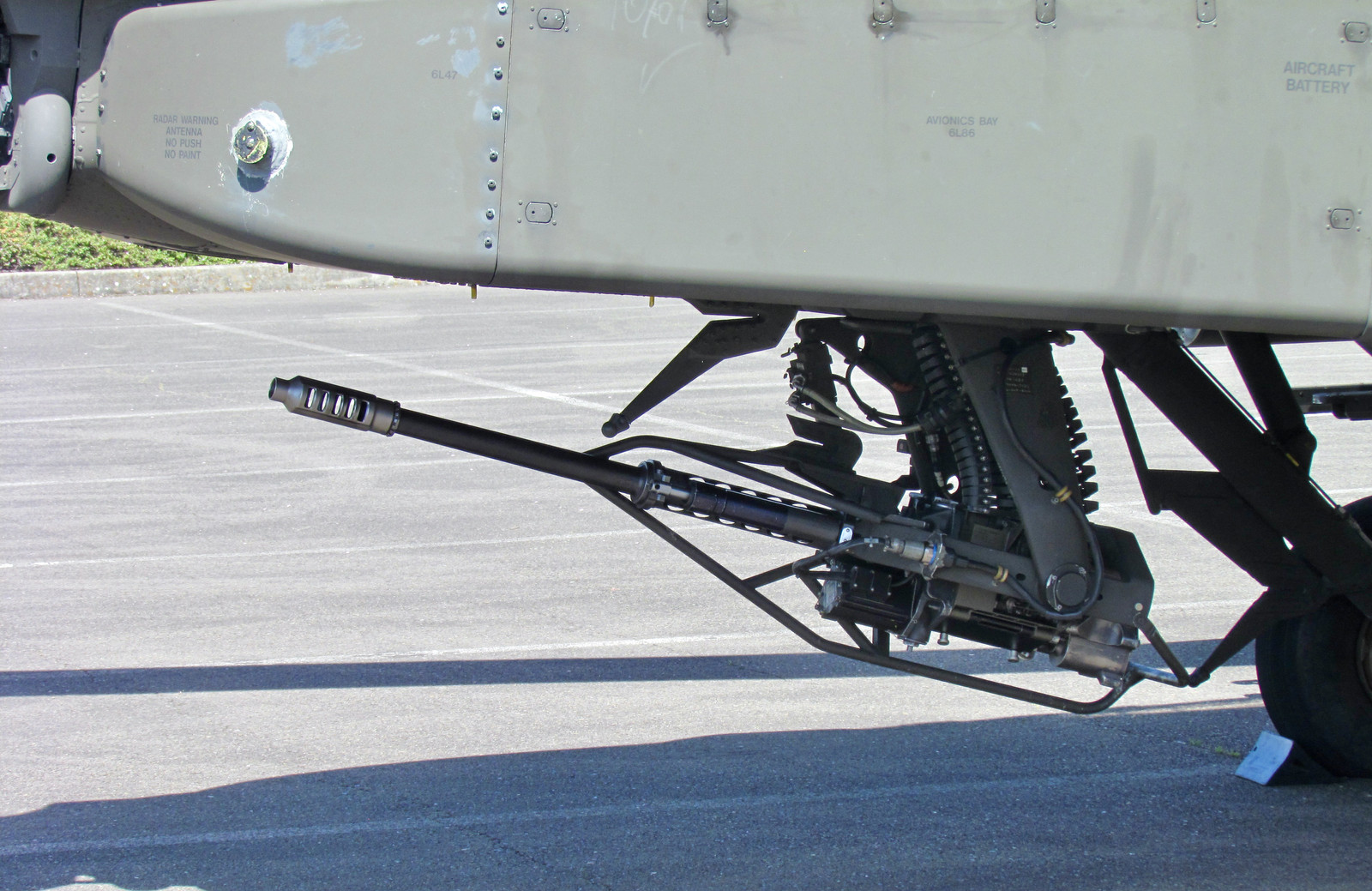
The Lawnmower
Wandering around the back of the museum, I found this.
It’s a Ford 9N. With the wheels set wider. Designed in feature of the 9N, if you reverse the wheel hubs. Not quite the paint I’d consider canonical, but… hey, it’s a grey 9N. It seems to have a mower attached, which is certainly not the strong suit of the Ns, and I’m not sure what that seat is.
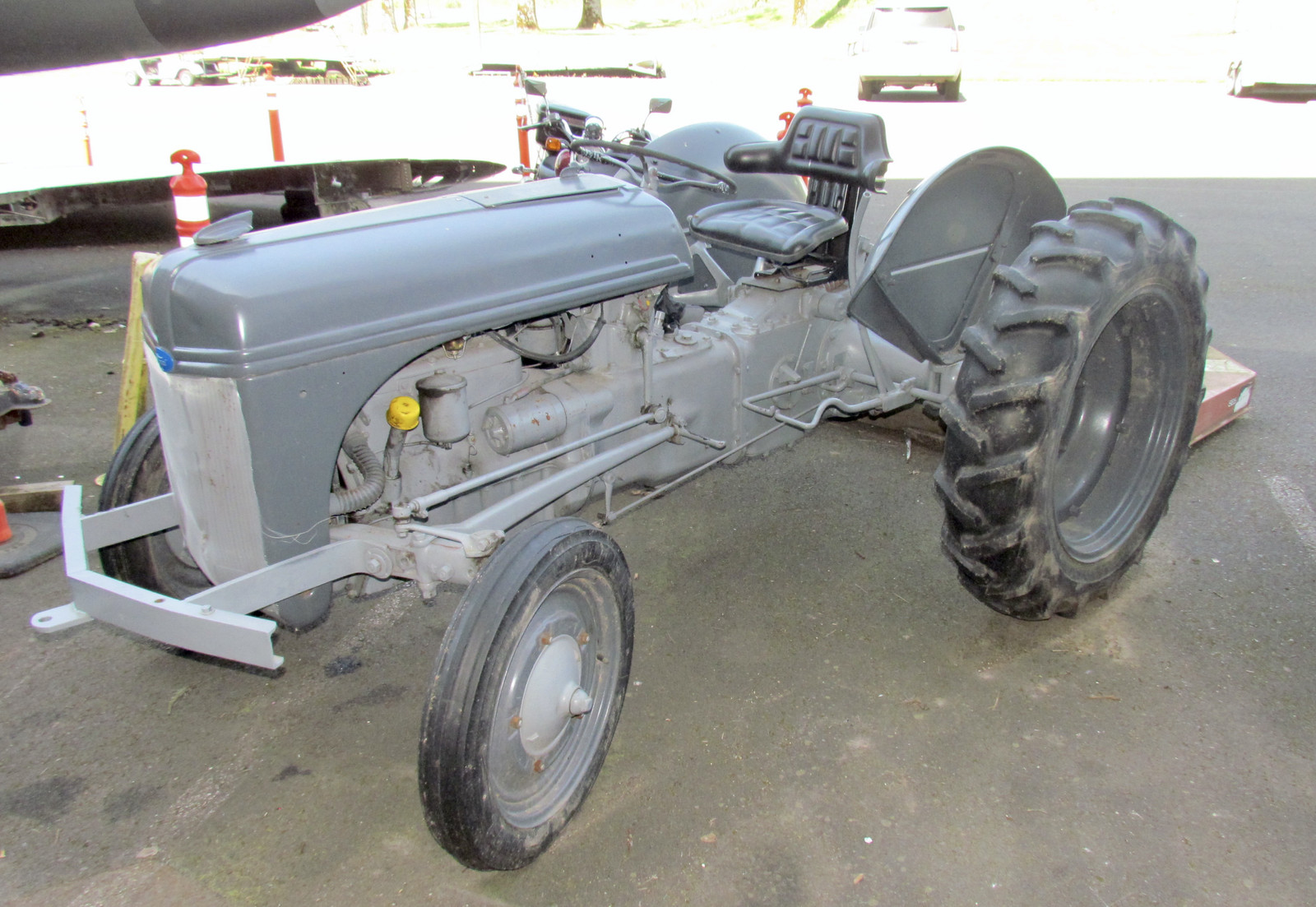
But, hey, 9N! Because this tractor doesn’t have a position control for the three point, they’ve got limit chains installed to handle the mower height. And what looks an awful lot like an overrunning coupler on the PTO. That’ll work! Presumably, if you maintain old airplanes, an old tractor is easy!
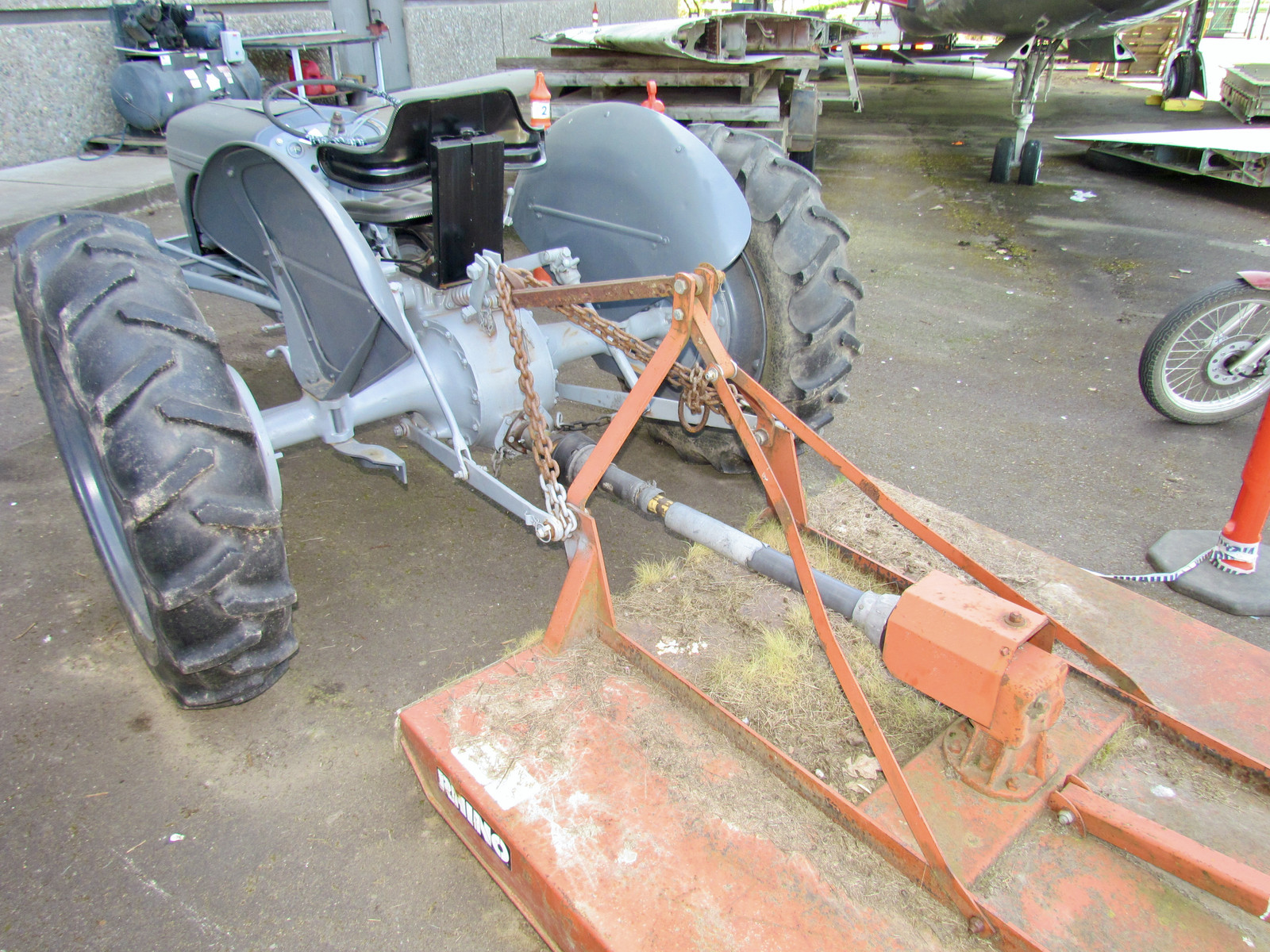
The Watepark: Closed
There’s a waterpark and set of waterslides associated with the museum. If it looks like someone took, say, a 747-100, stuck it on top of a building, and ran water slides out the sides, you’d be entirely accurate! Sadly, it was closed. I think it’s open on weekends?
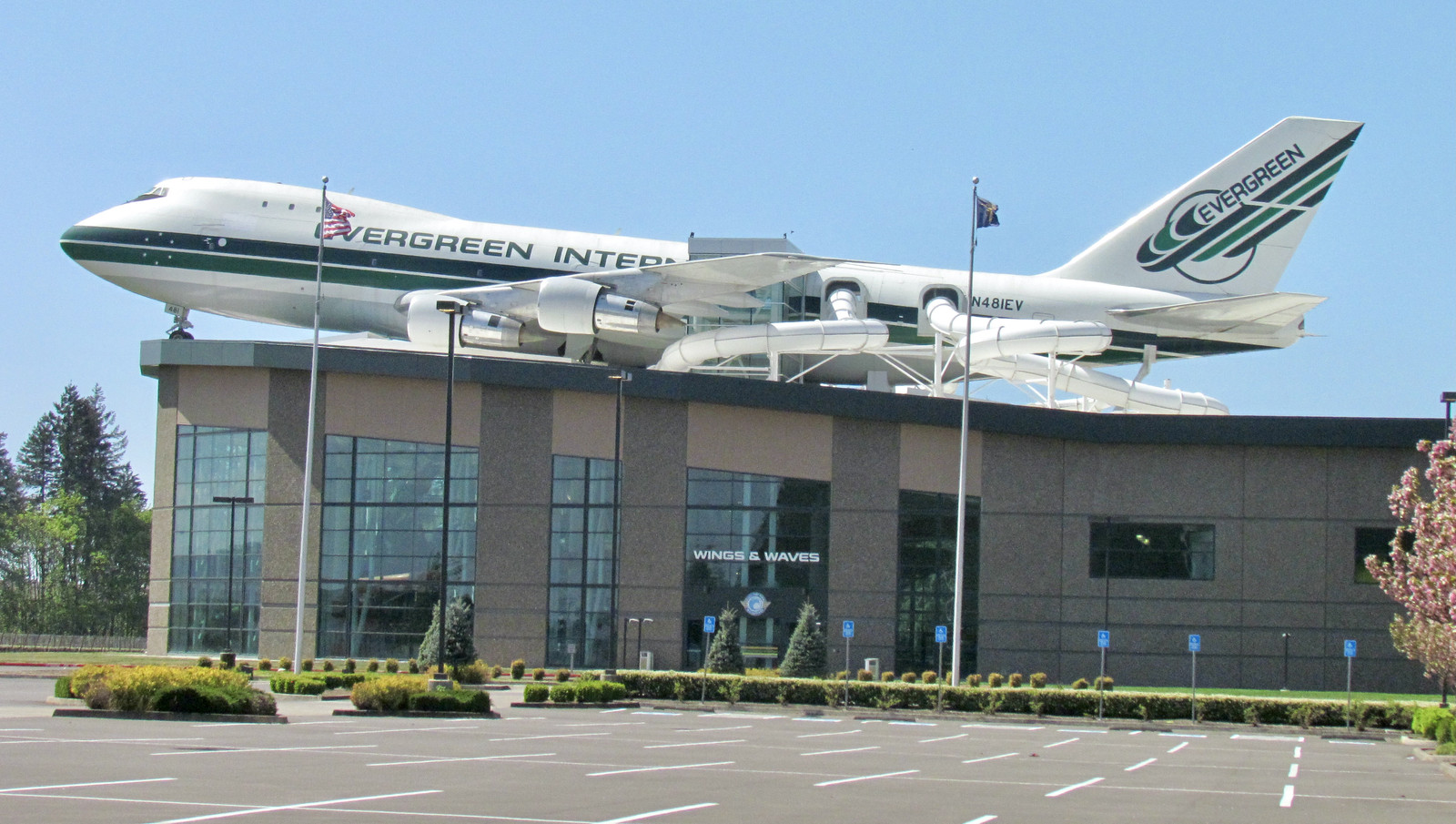
The Space Side
The other (open) building was the space side, which contains an awful lot of pointy things that go fast (and an A-10, which… is not at all fast, but shoots pointy things that go fast).
Here, we have a US version of the V-1 “Buzz Bomb,” a pulse jet engine that, due to deception, ended up not doing much damage to England.
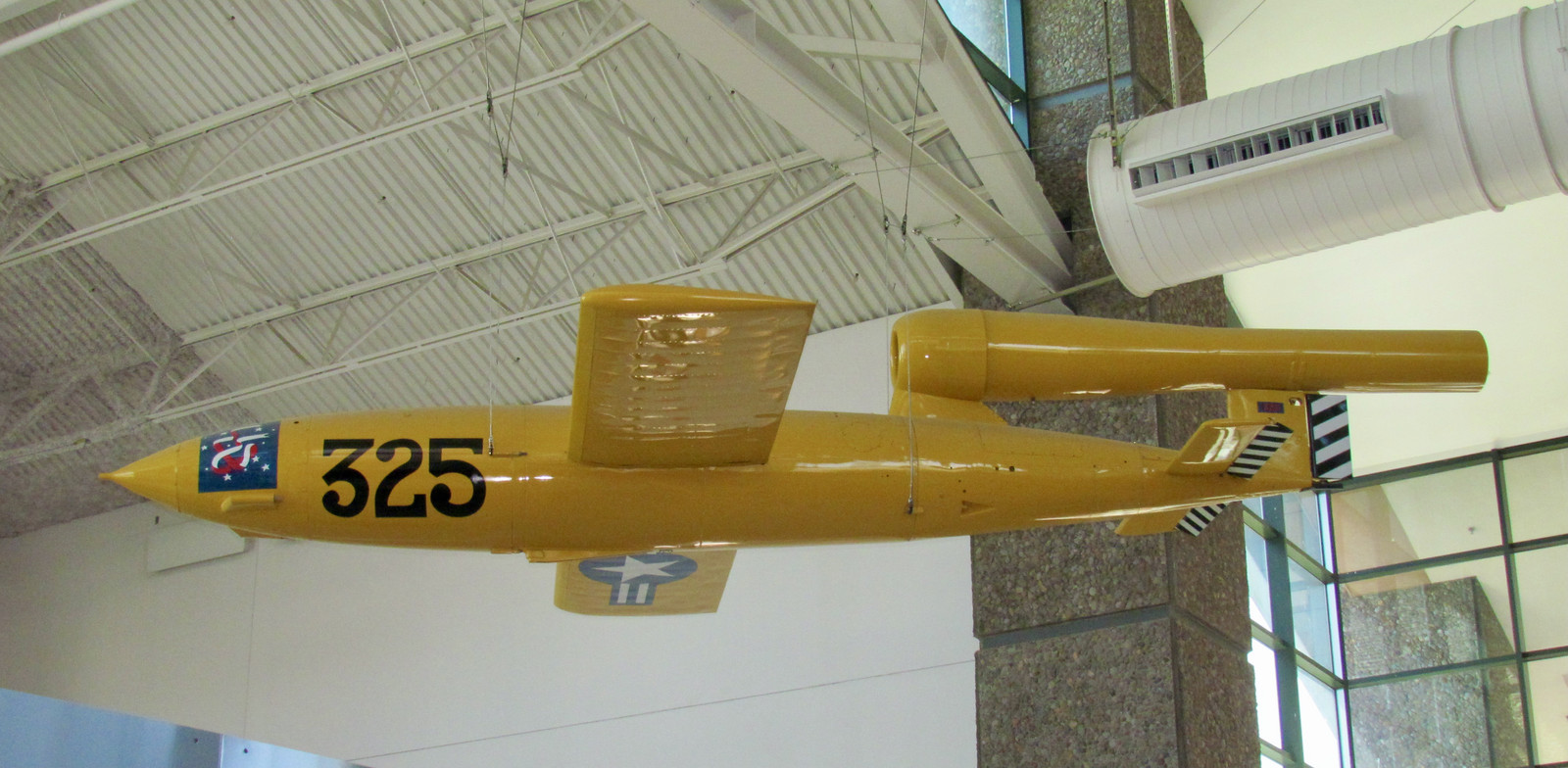
The V2s, which were short range rocket weapons, also accomplished little, despite being an awful lot larger. They, however, did spawn the space program post-WWII, and one could trace a rather straight line between the V-2 and the Moon program.
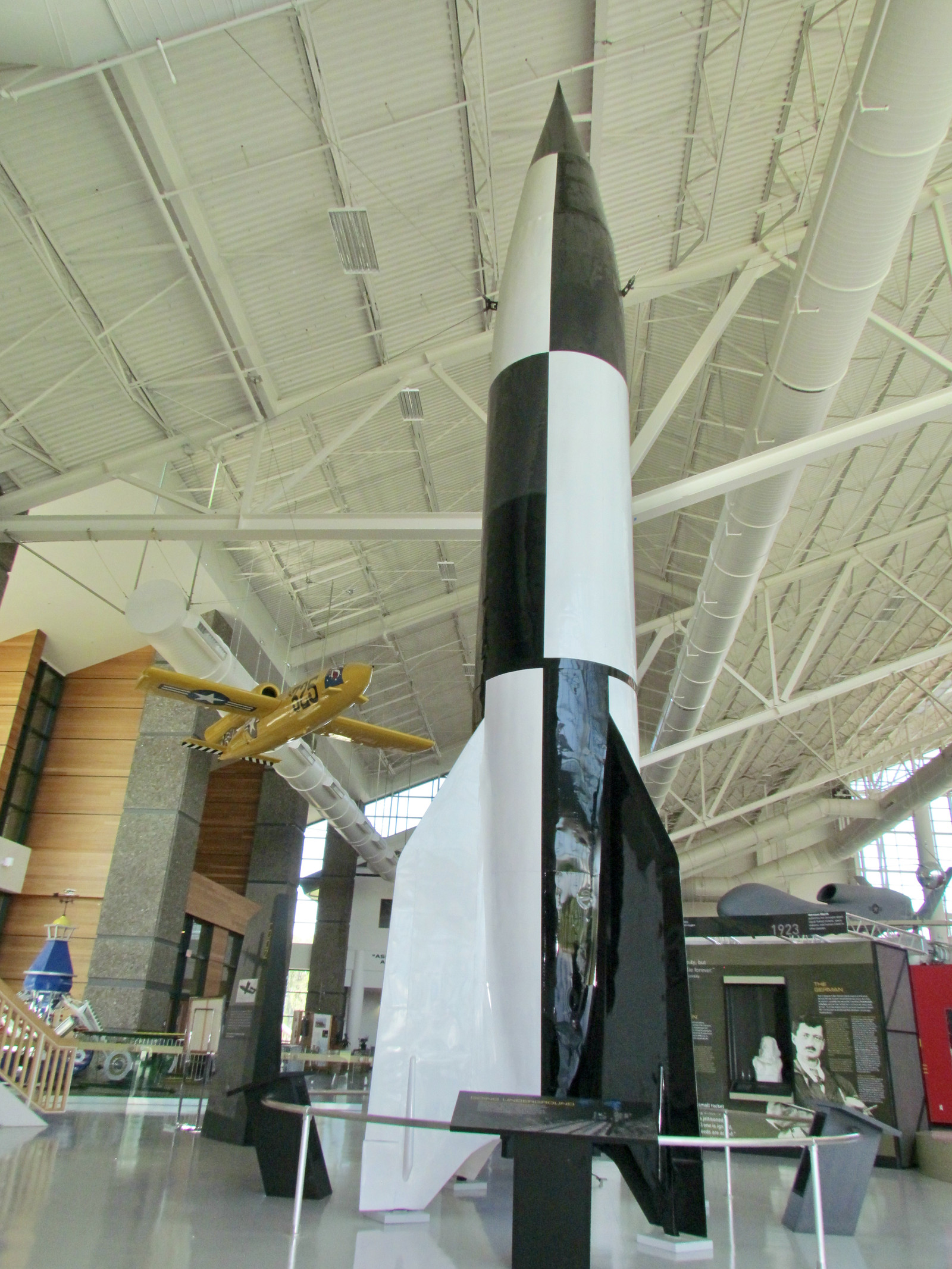
Mercury capsules were tiny! It’s hard to look in one and say, “Yeah. I’d go to space in that.” Except, a number of people did.
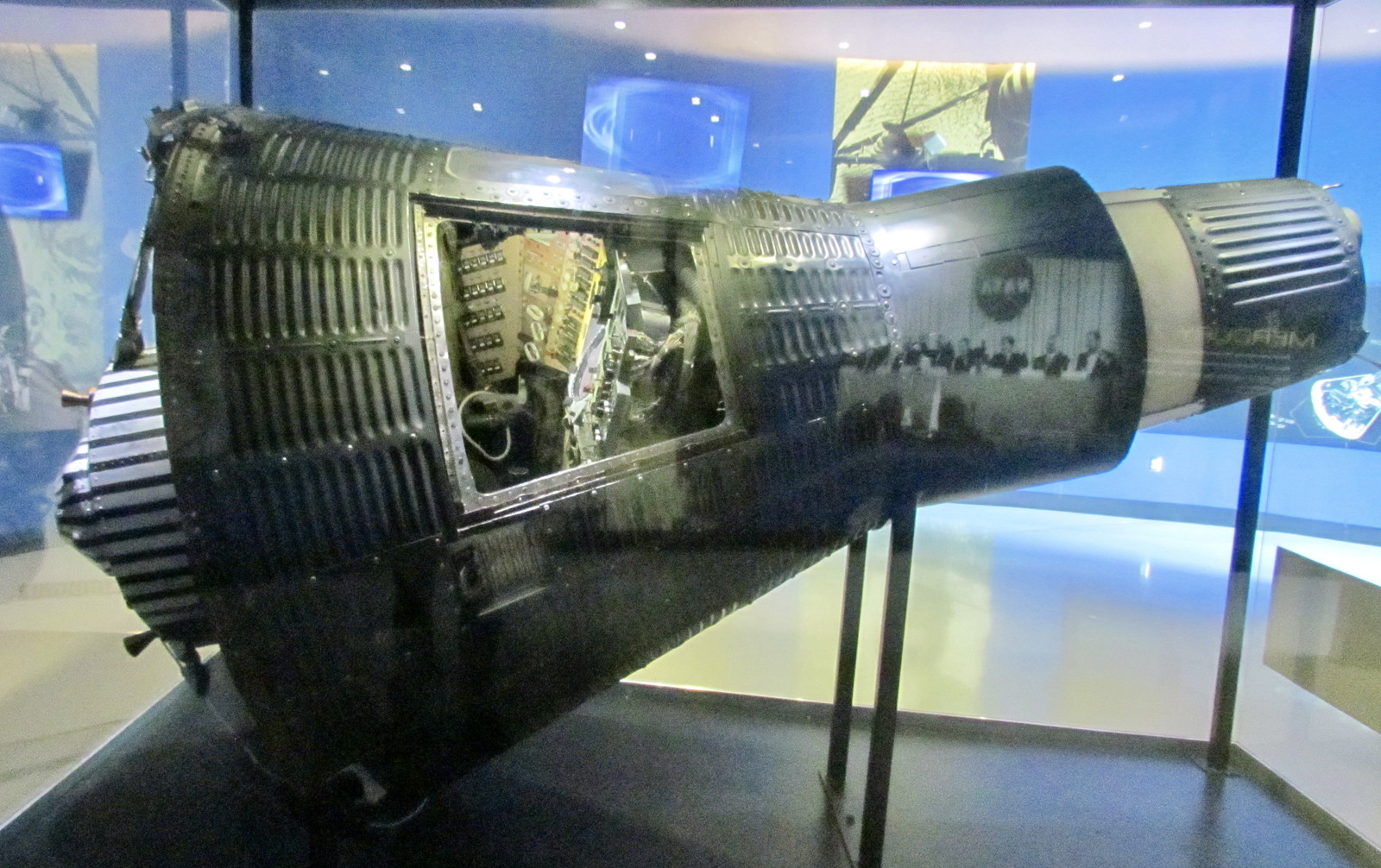
Rocket engines abound. This is an Atlas motor - a standard rocket motor of the early space era. See that weird thing that looks like a circuit board in the top left?
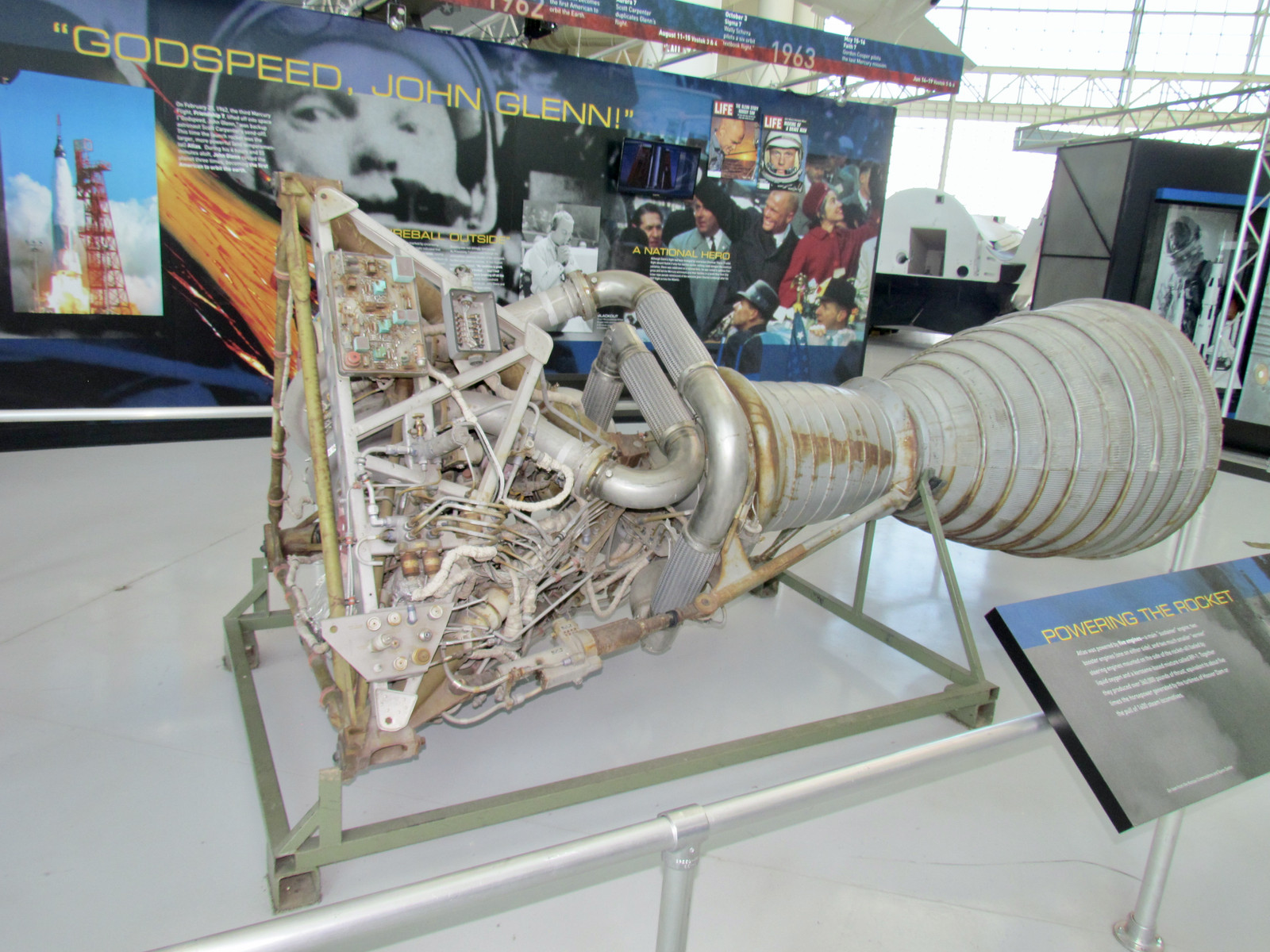
It is, indeed, a circuit board! Curved traces and all! I’d love to know more about this, but there was nothing of significance to be seen about this board.
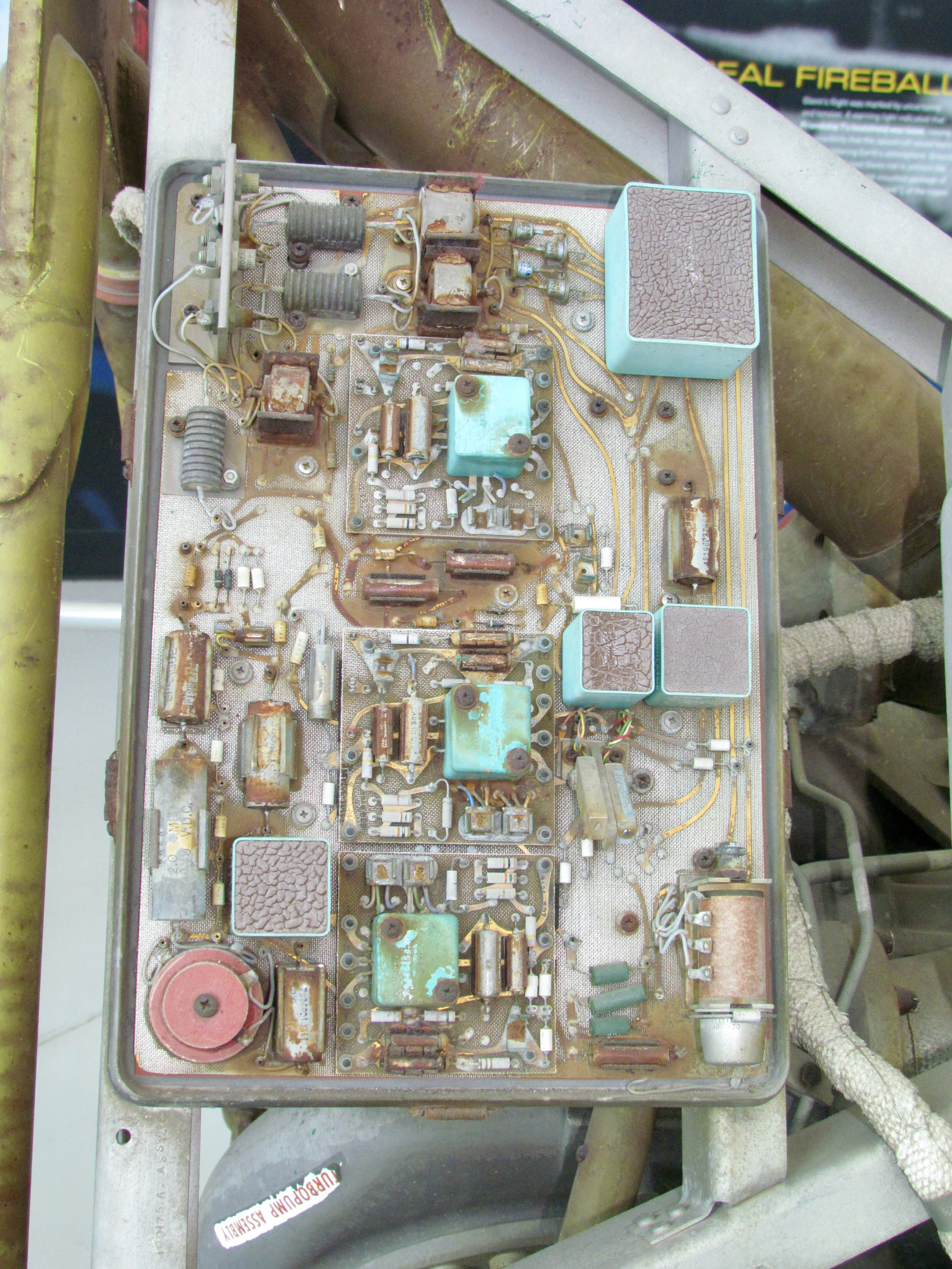
As far as rockets go, I love looking up the rear end of them. A beautiful mess of welded tubes for the nozzle (all carrying coolant), and the complex drilled injector plate at the top, mixing fuel and oxidizer in a manner that, ideally, gets you to space!
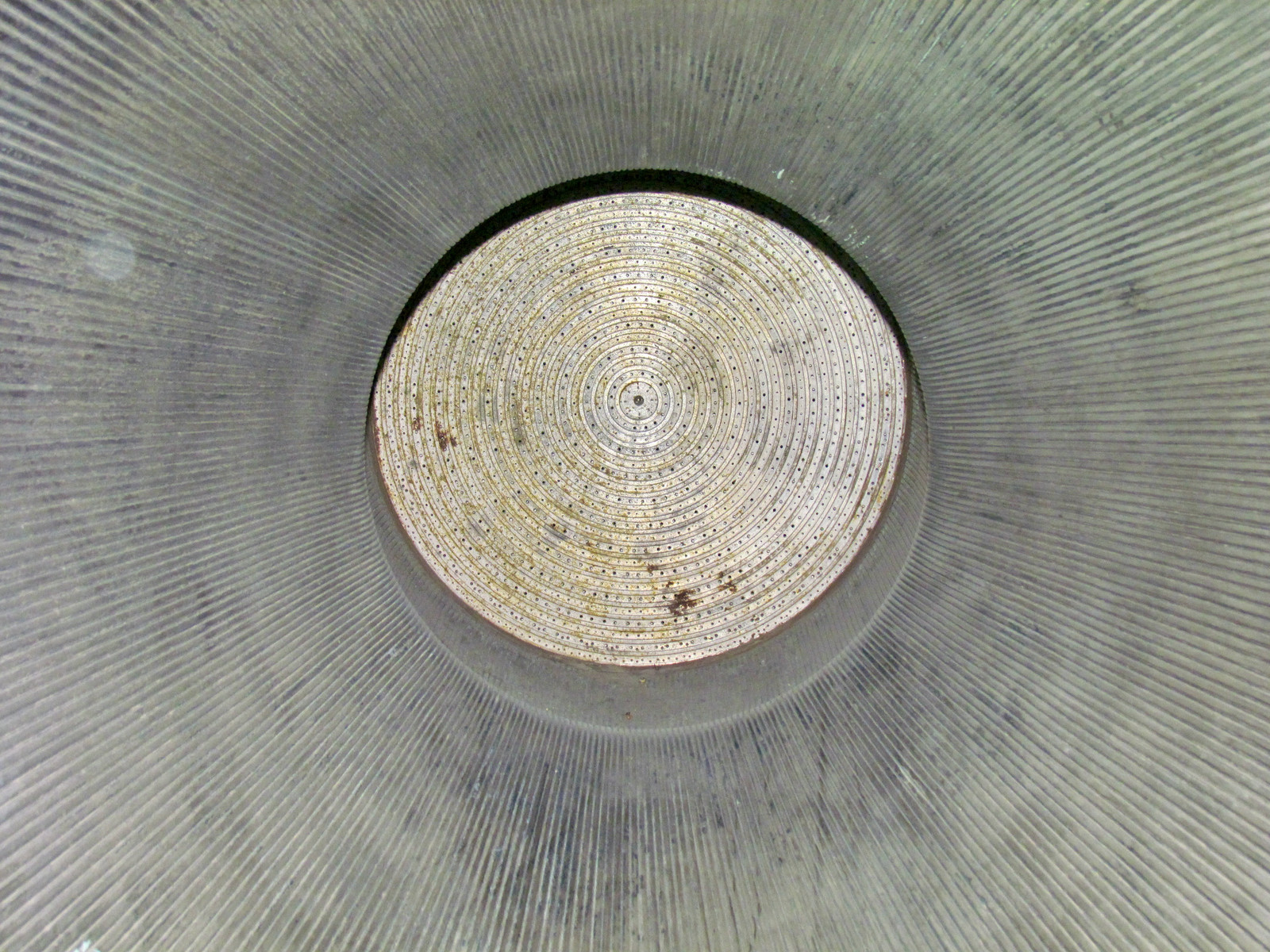
Elsewhere in the facility, there’s a Titan II silo simulation. If you’ve never read Command and Control by Schlosser, you should. It’s a fascinating read on the US nuclear weapons program and Broken Arrow incidents.
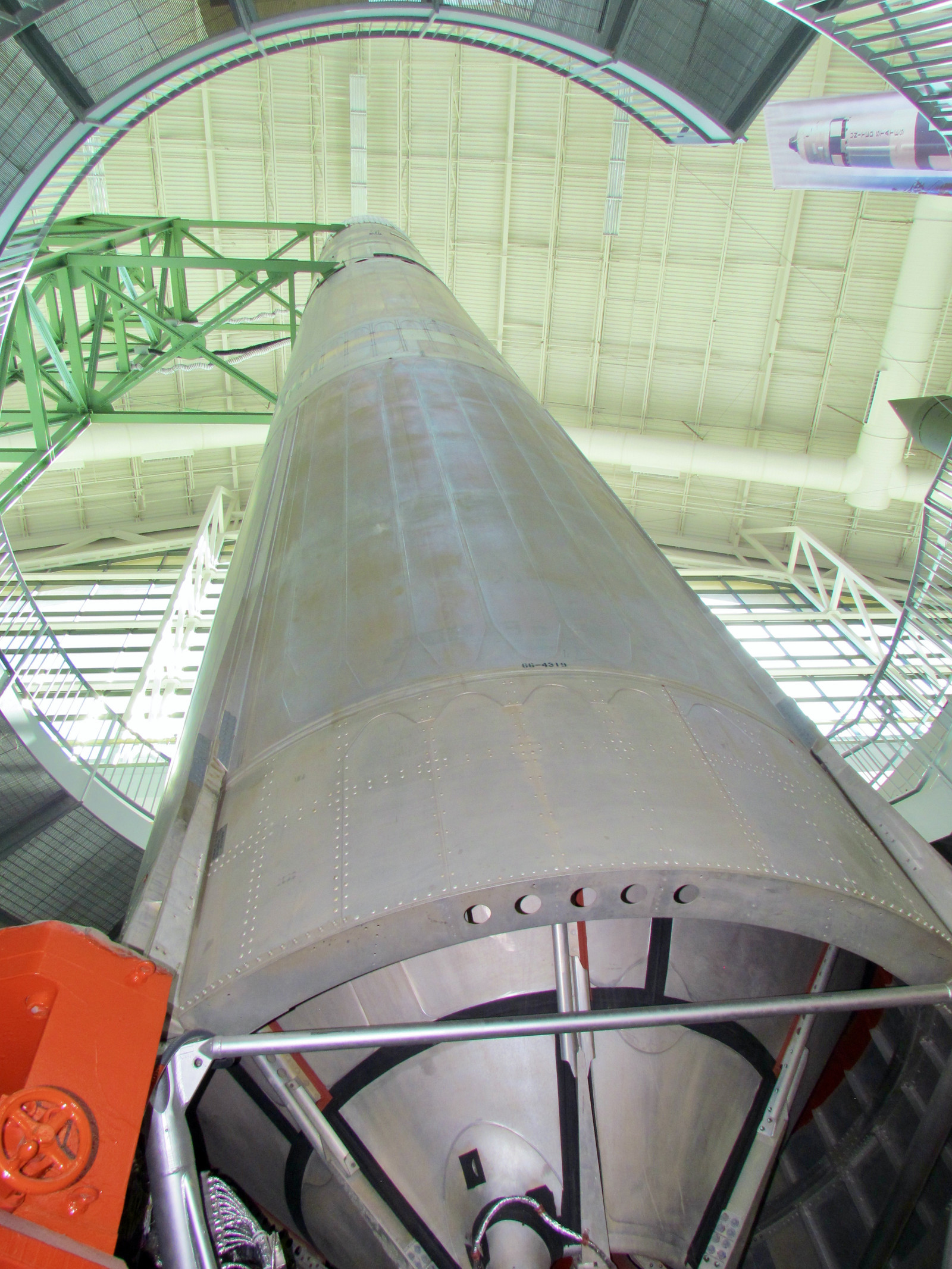
On the bottom of the fuel tanks, there’s an engine. It’s not connected to the rest of the missile, at least in terms of the fuel and oxidizer paths. Fuel is Aerozine 50, oxidizer is dinitrogen tetroxide. If none of this means anything to you, read “Ignition!” - the story of liquid rocket propellants. Also terrifying, in the “… you mixed what with WHAT and ignited it???” sense.
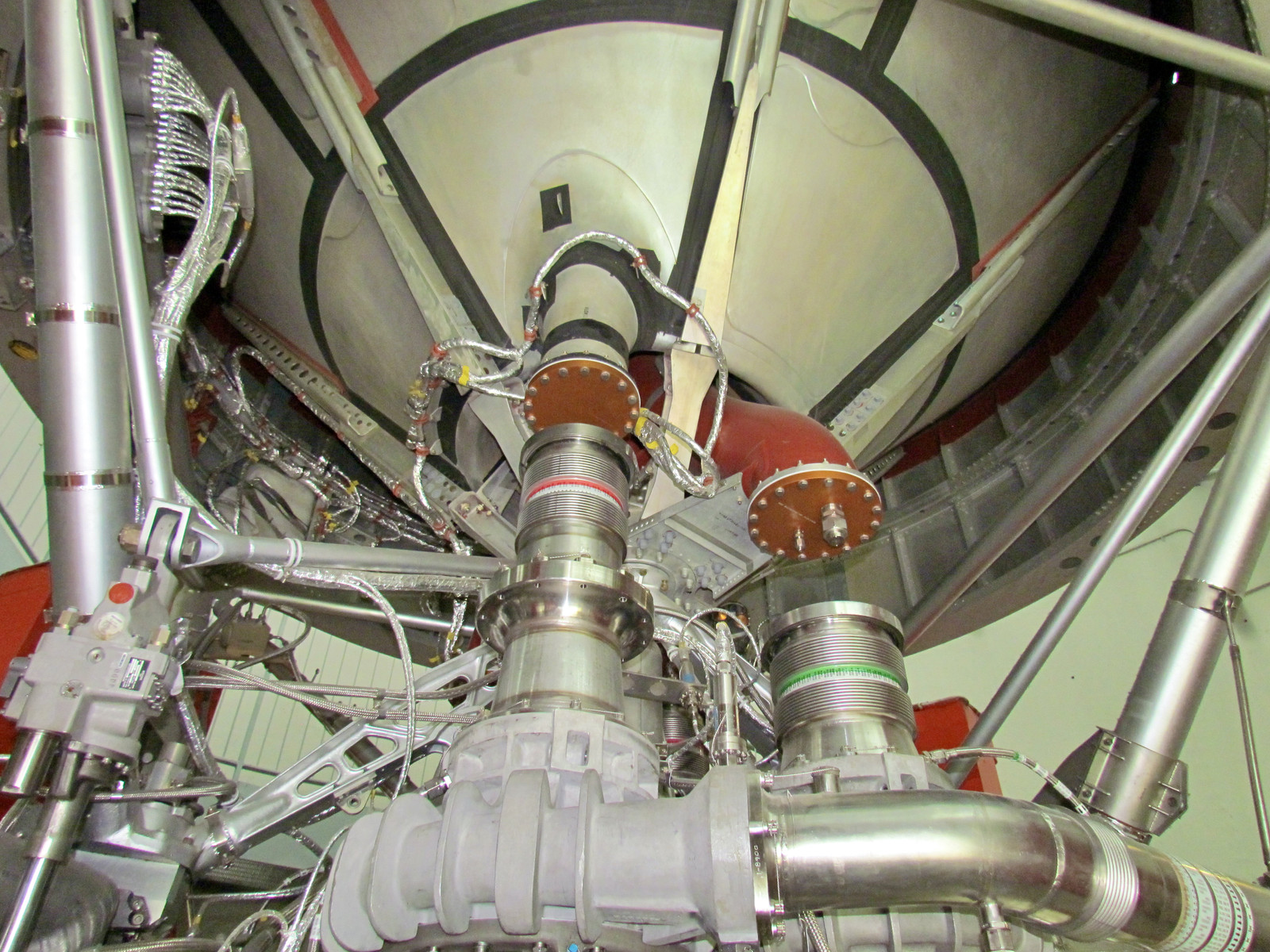
I really, really like the old markings on this stuff. “Guy with an engraver…” sort of official rocket numbers. You don’t see much like this anymore!
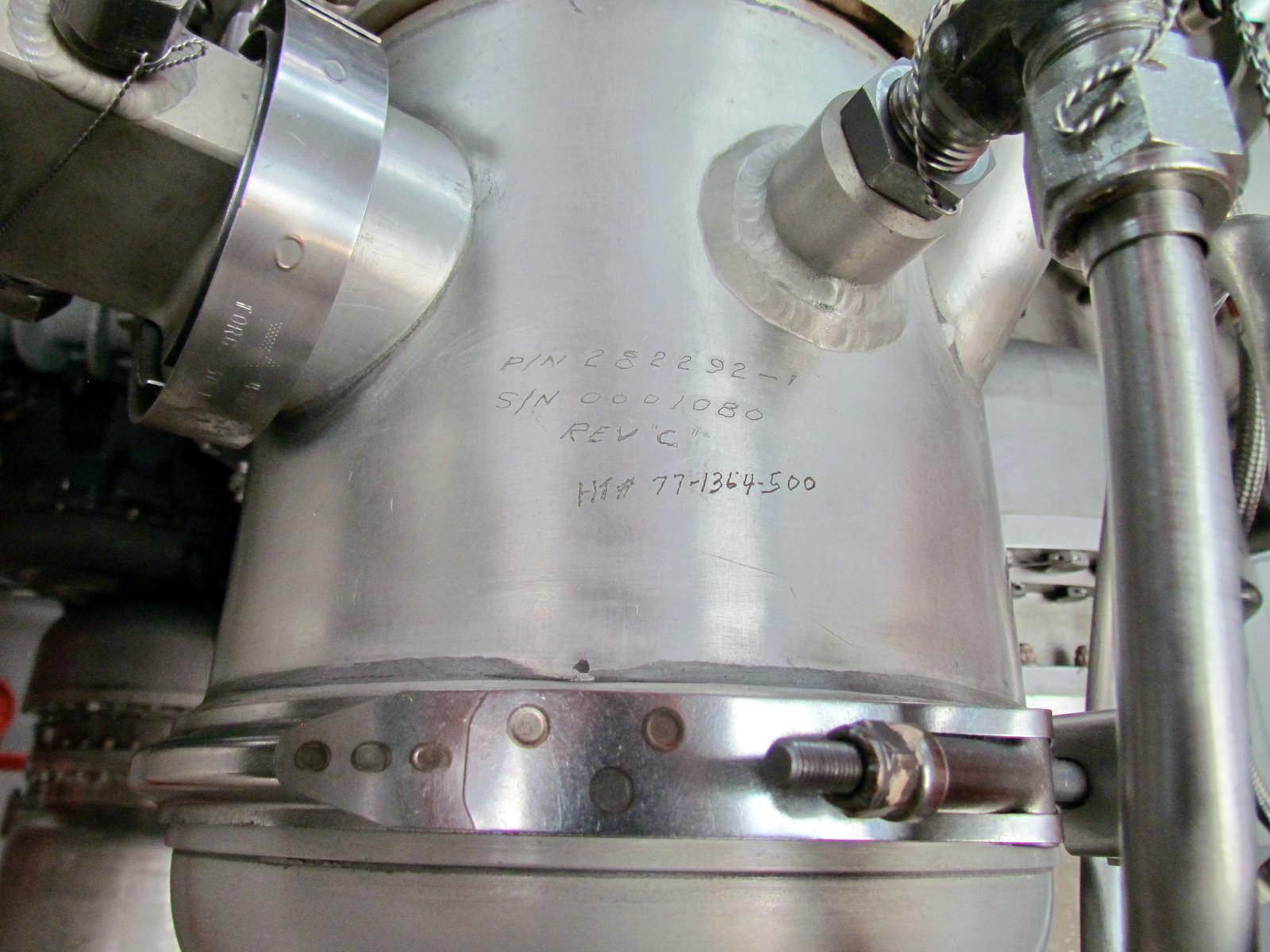
Turbopump. Shoves fuel and oxidizer into the rocket engine where they hate each other so much they explode.
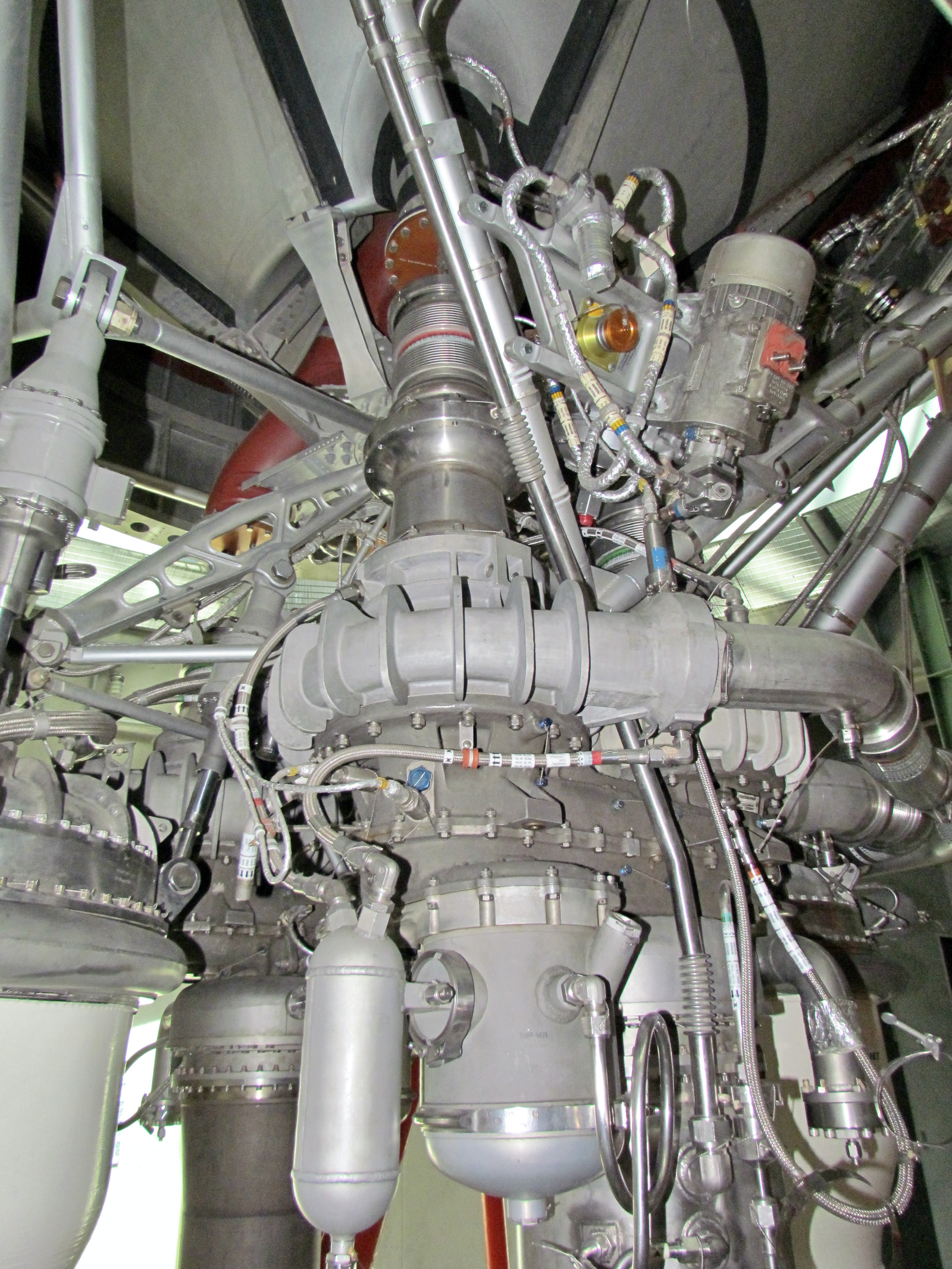
Rocket. By Aerojet. Ideally directs the explosions out the bottom.
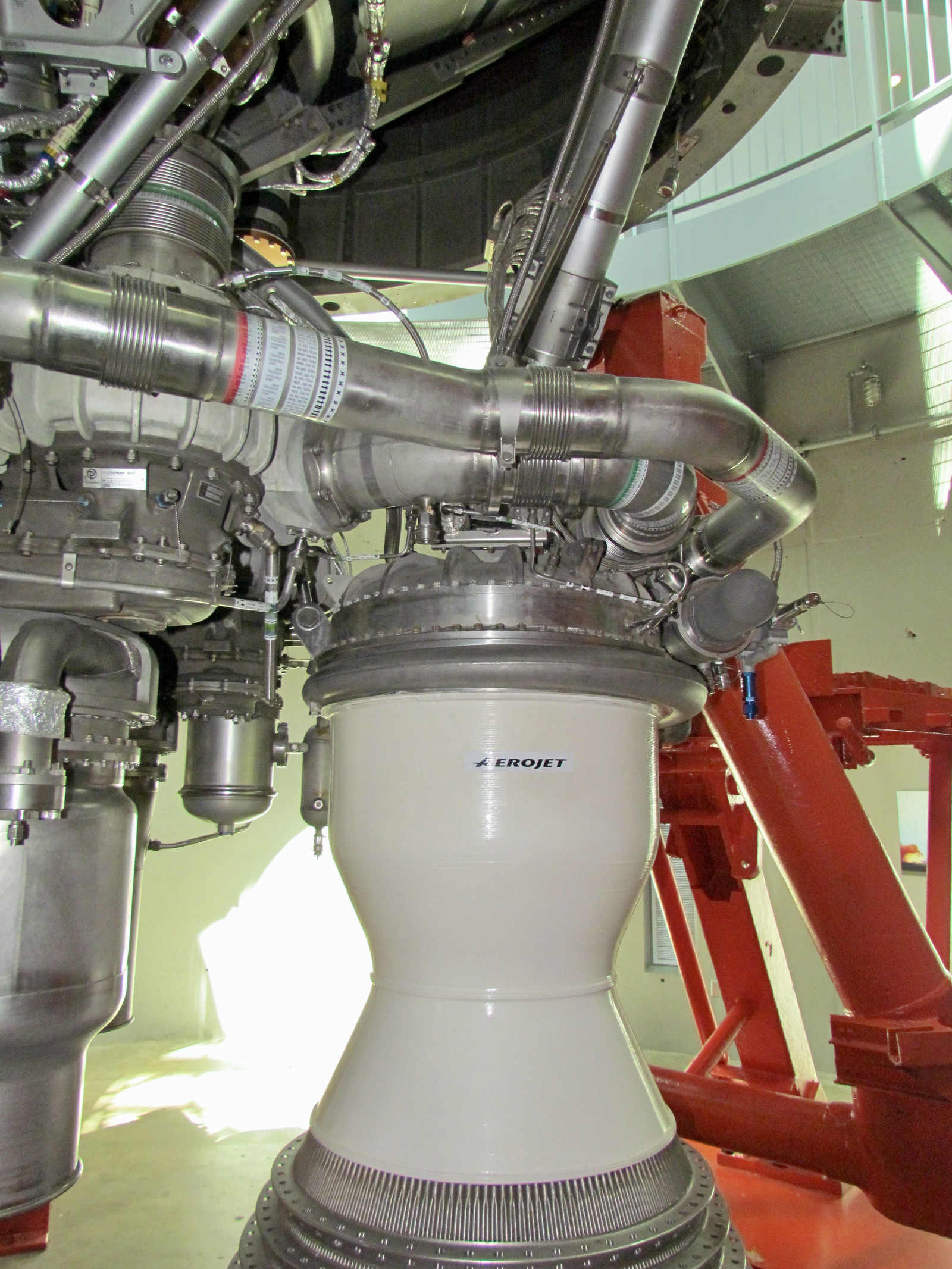
The SR-71
If you don’t see anything else here, go see the SR-71. I have a thing for them. They’re beautiful planes, surfing the edge of the atmosphere, on slide rule design technology.
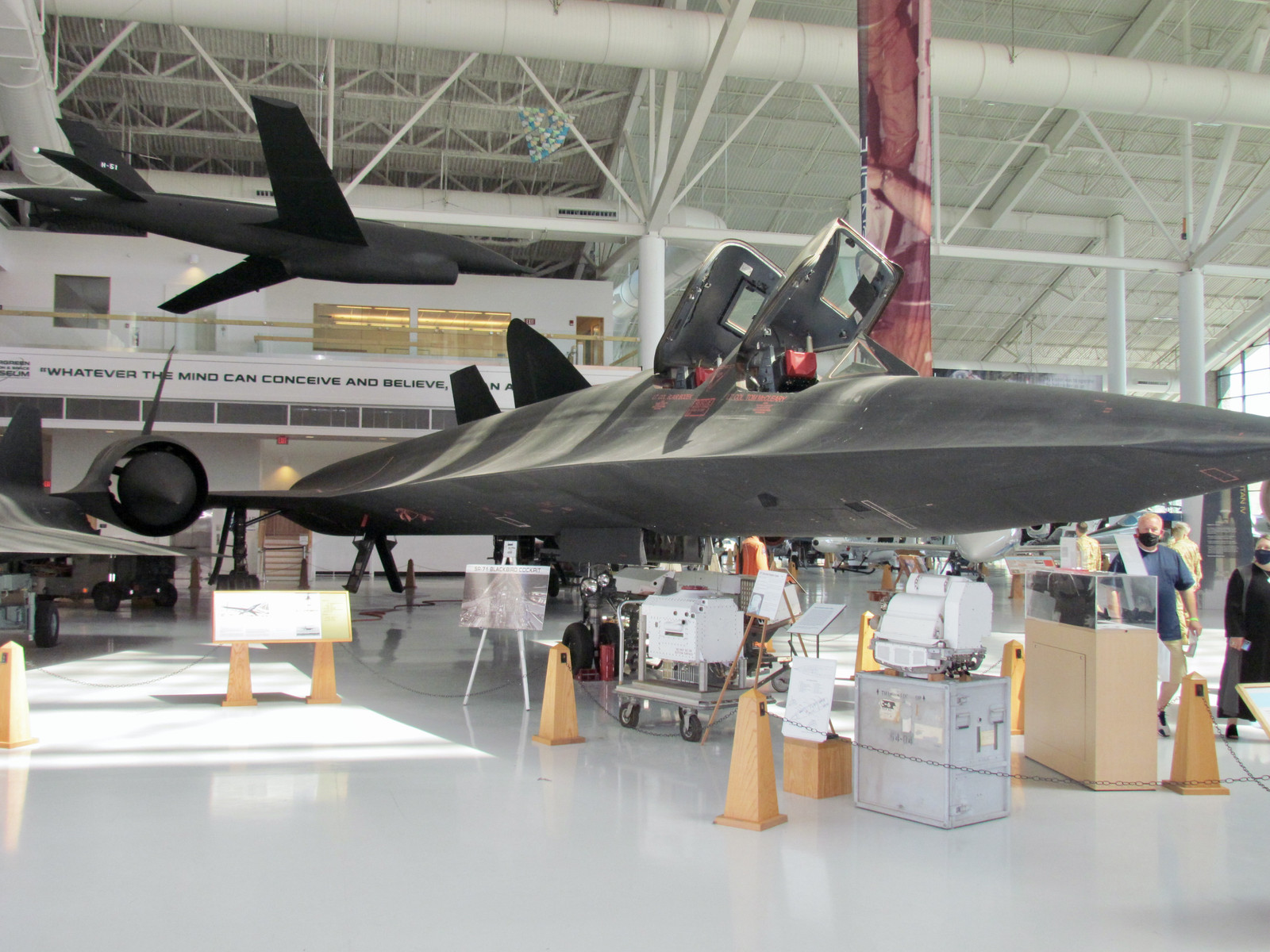
The Pratt & Whitney J58 is a wonderfully insane engine. It’s rated for continuous afterburning, at cruise is more of a ramjet with a turbojet core to keep the afterburner lit, and expands several inches at operating temperature. It runs on the edge of what can be done with metals, and two of them ride at the back of the Blackbird, where “Oh? That missile? Screw it, we’ll accelerate from Mach 3 and climb from 80k ft!” is a viable response to a launch warning.
On the other hand, getting one of them started was a more earth-bound affair. The oil wasn’t exactly happy to turn when cold, and they needed an awful lot of horsepower to just turn the engines over fast enough to get them lit. This is a start cart.
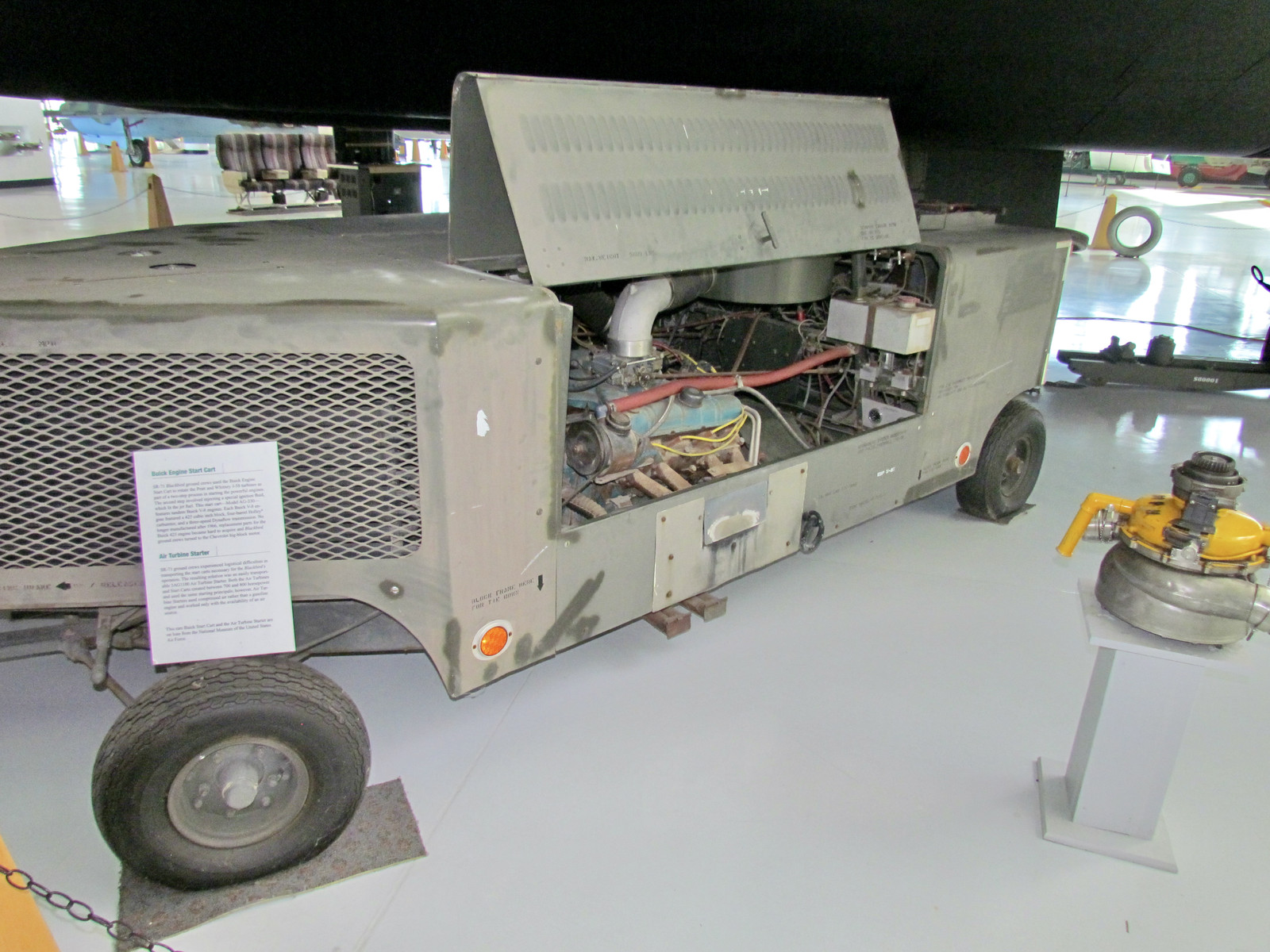
This particular one contains a pair of Buick motors that, while perhaps modern when the program started, did not age terribly well. Finding parts for motors asked to produce full rated power every time an SR-71 needed to go somewhere became a slight problem, and they were replaced later by other options.
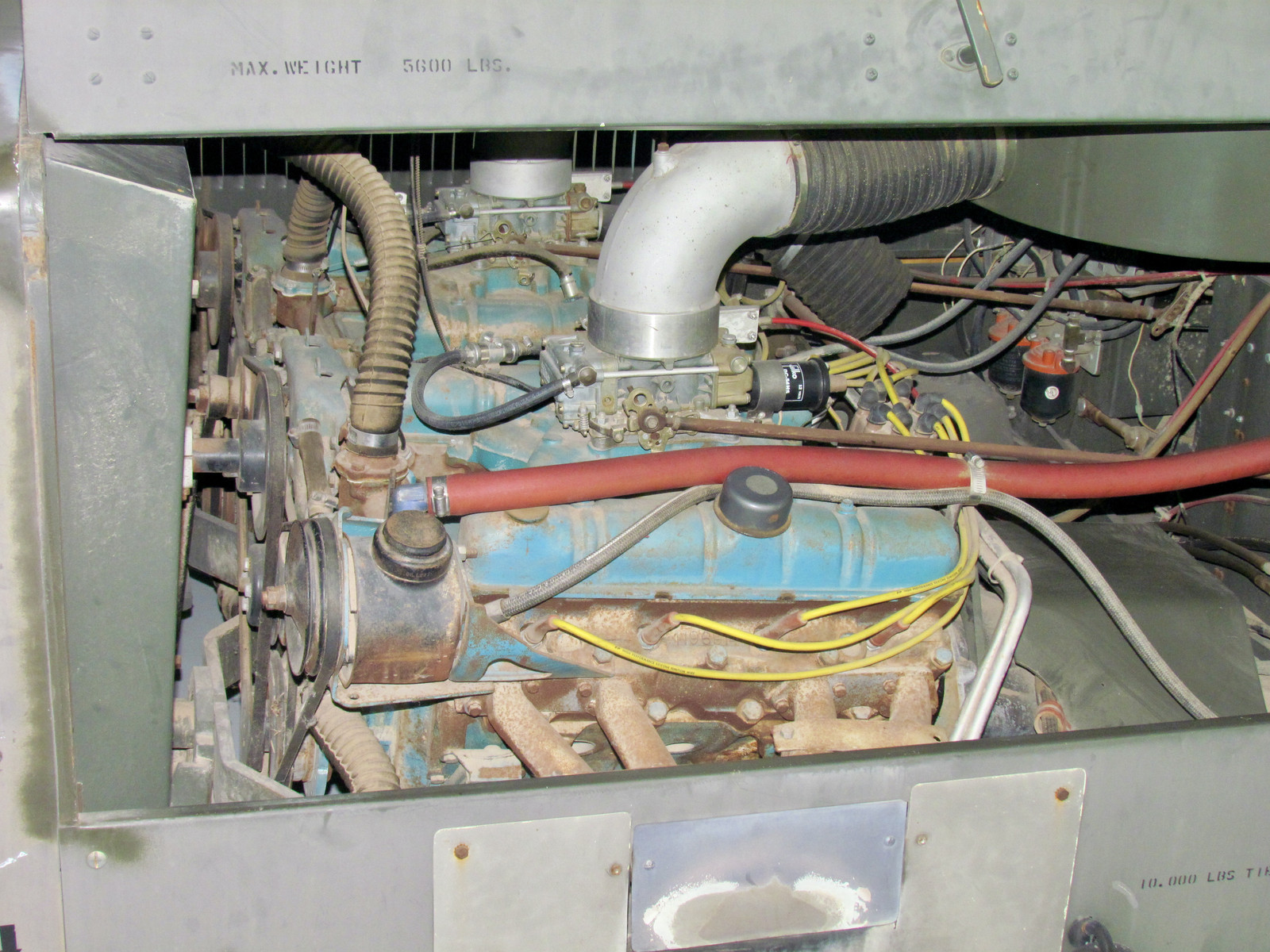
They also have a D-21 on exhibit. What better use of a supersonic, high altitude plane than to launch a really fast drone? It… largely didn’t work and was cancelled. Success rate was poor.
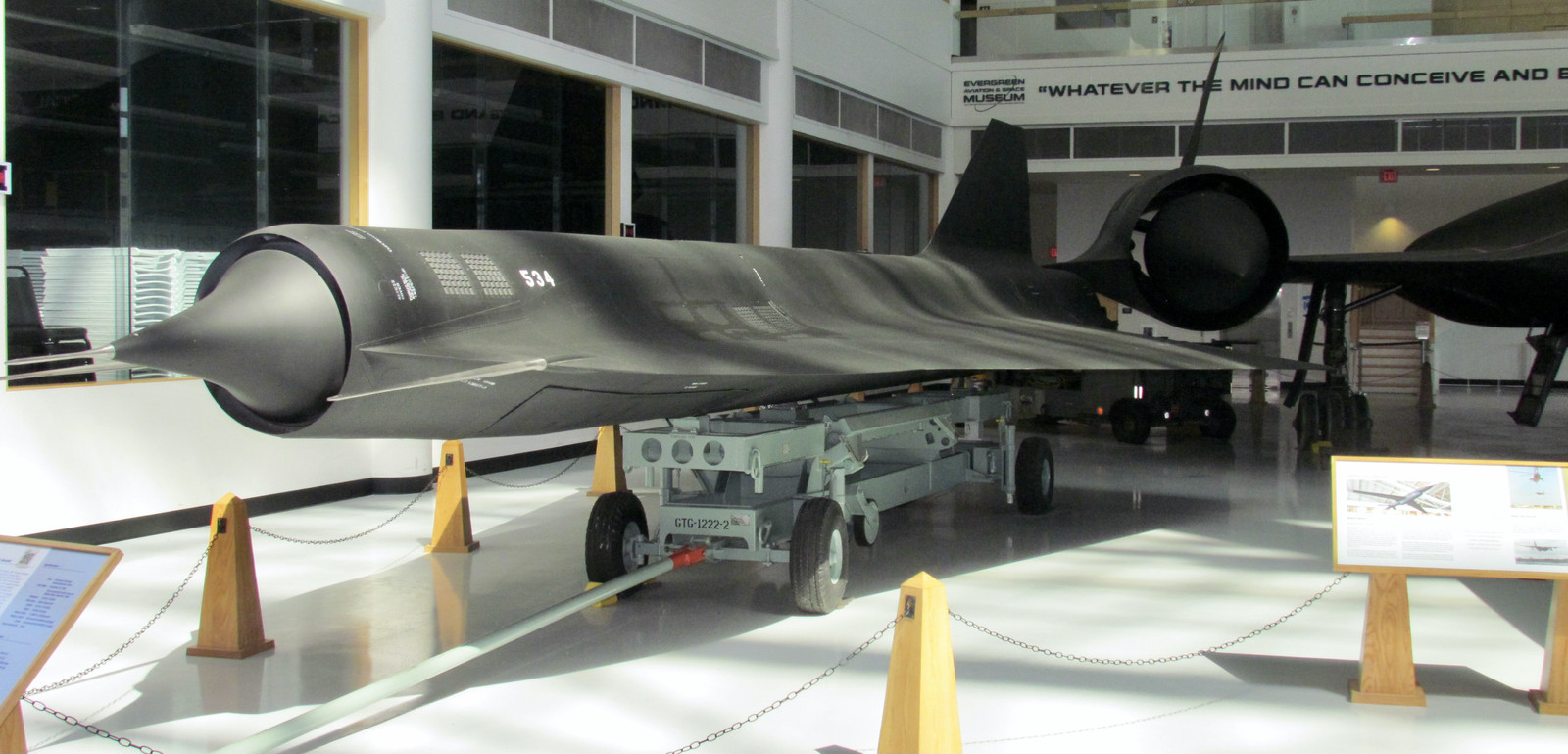
And, if we’re going with “pointy and fast,” hard to beat an X-15. The F-104 was known as the “Missile with a man in it,” but I’d argue that applies far more fully to the X-15, which didn’t even bother with breathing air. Just drop it from a launch plane and lob it into space.
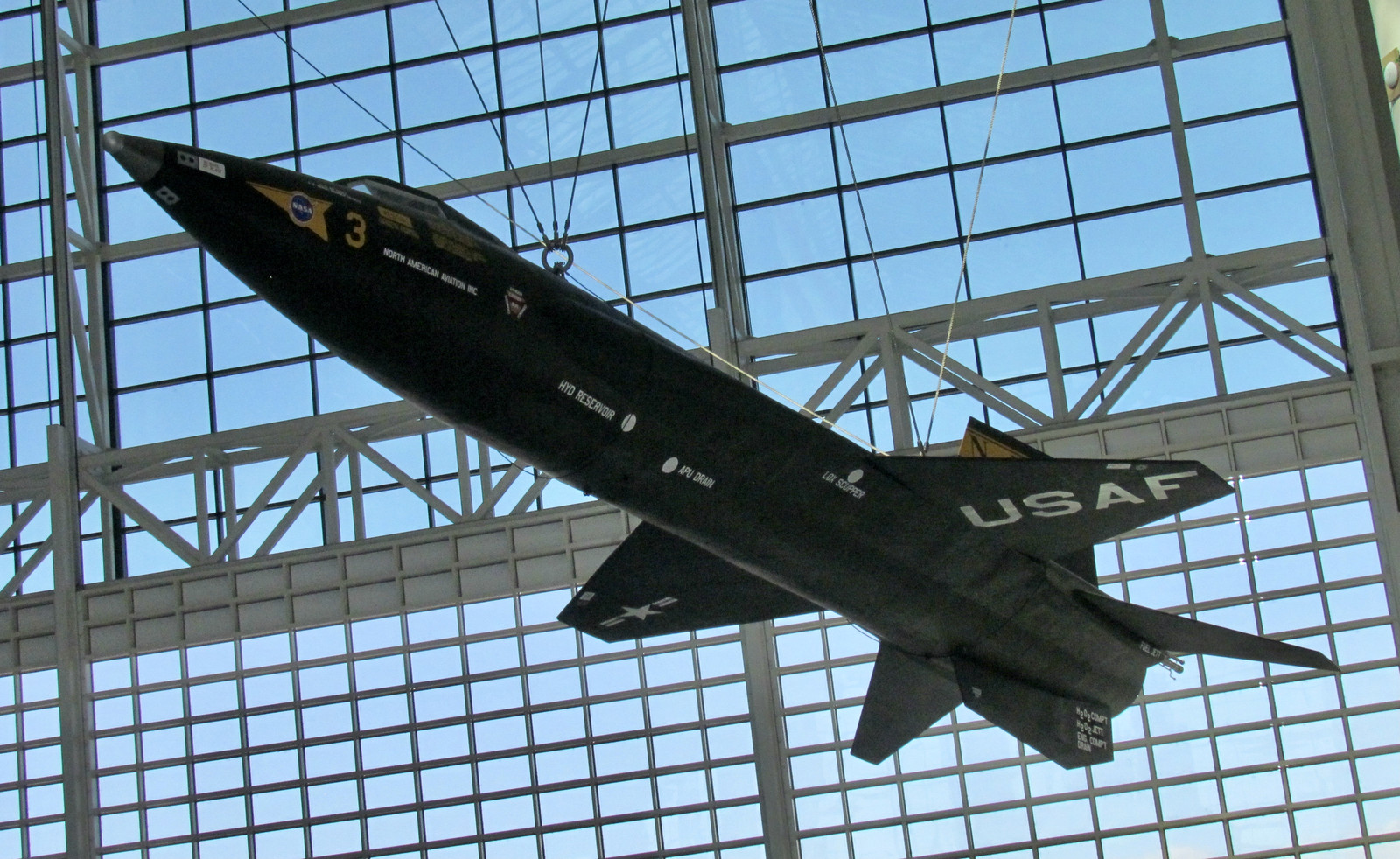
And, oddly, in this building, an A-10. Which is utterly the opposite of “Pointy and fast.” Except for that which it shoots.
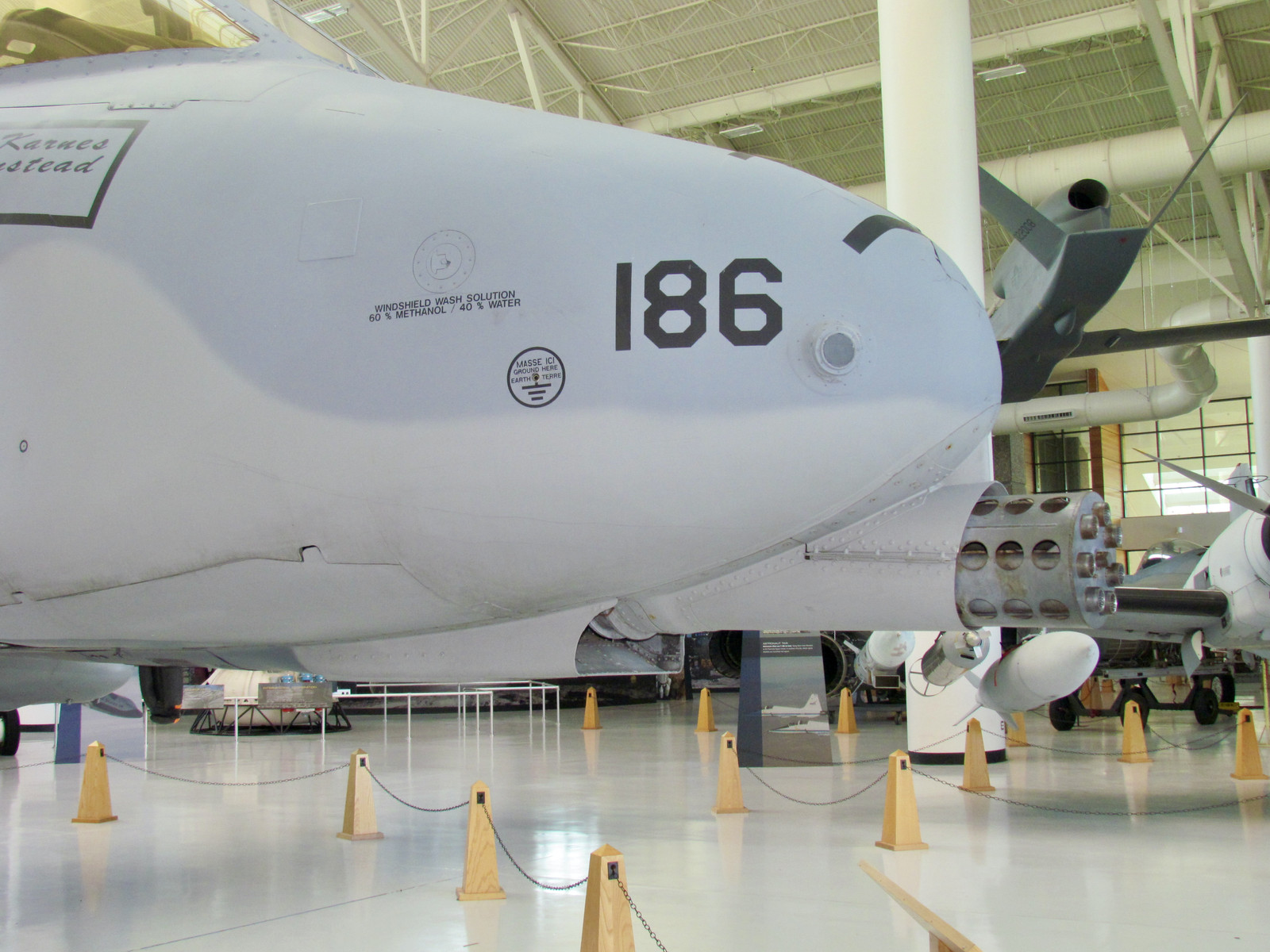
Other Notable Aircraft
A Starship! Canard. Pusher. Someone basically saying, “Yes. We’ll totally scale up the Long-EZ into a business aircraft.” Beautiful, but not terribly popular.
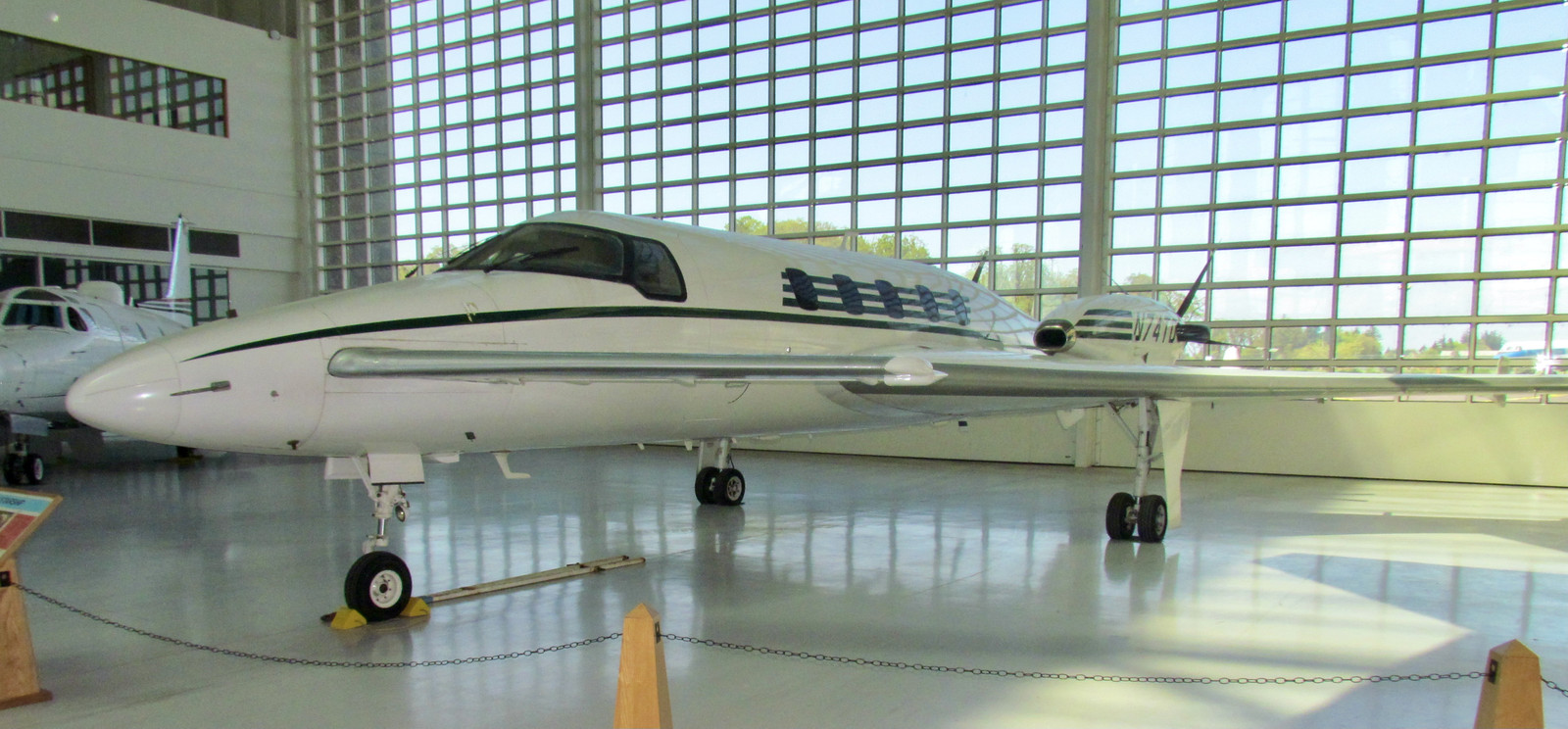
And a Lear 24, with what may be the most “Well, uh… the aerodynamics suck, add vortex generators. That didn’t work? Add more…” sort of aerodynamic hack I’ve ever seen. Full span vortex generators for the aileron, I’m sure that’s fine! Seriously, how bad was this problem?
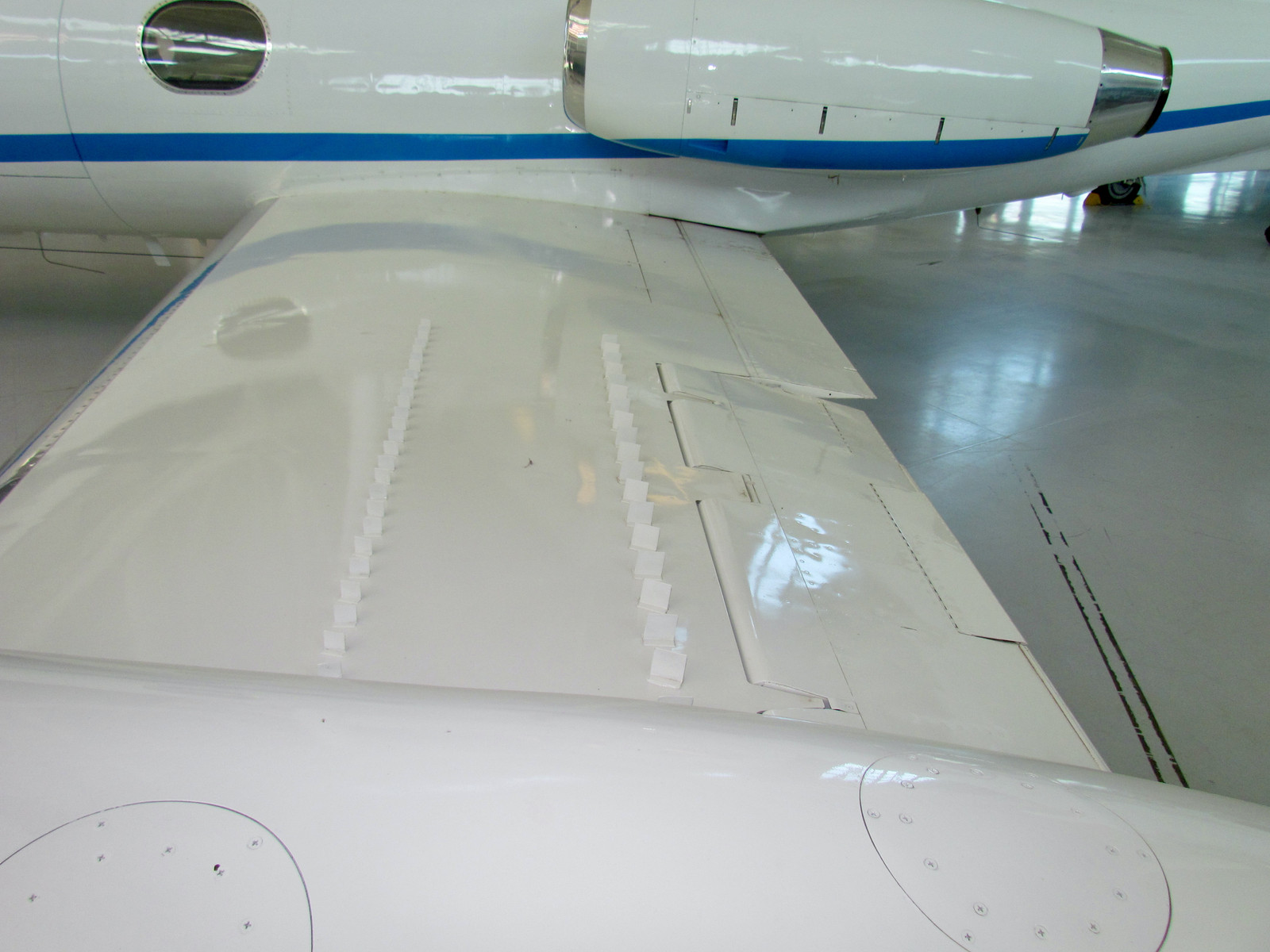
Go Visit.
Seriously. Great place. You should go visit if you’re anywhere near and like airplanes.
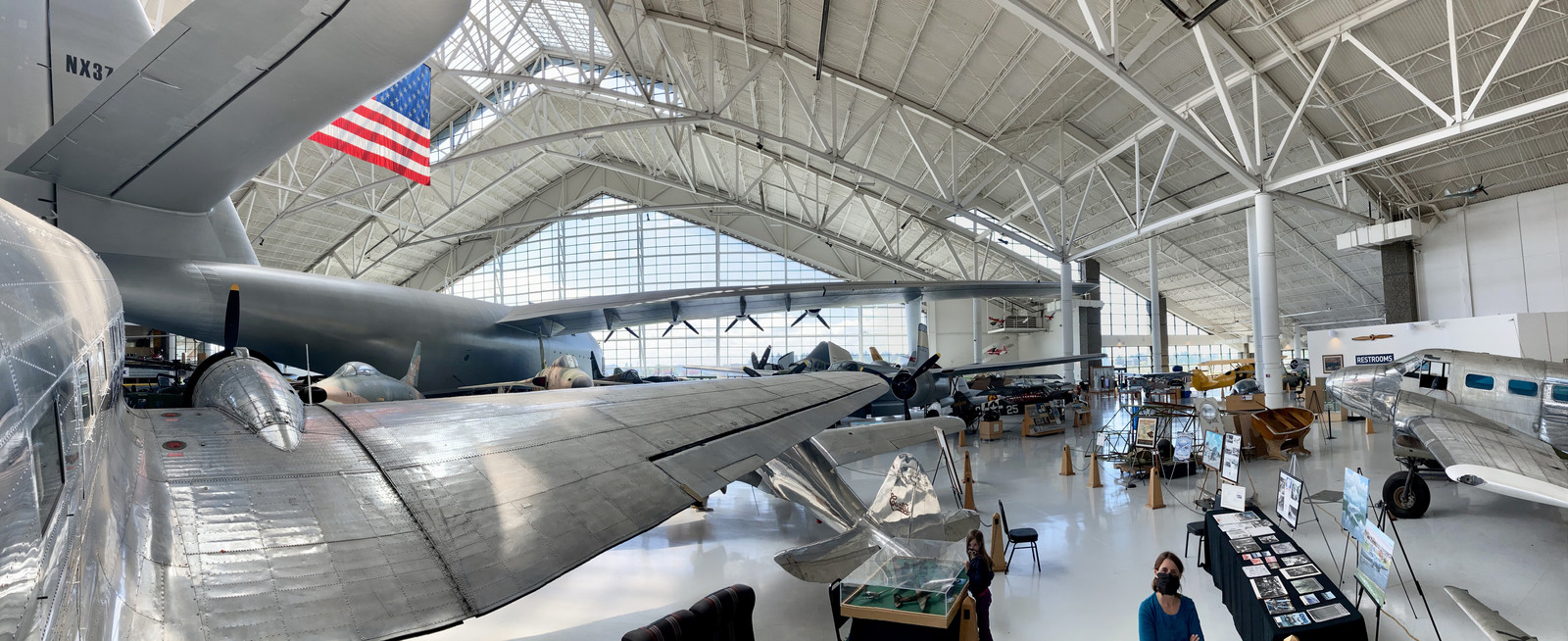
But I’ve not yet answered the question, “Why did I find myself over there?”
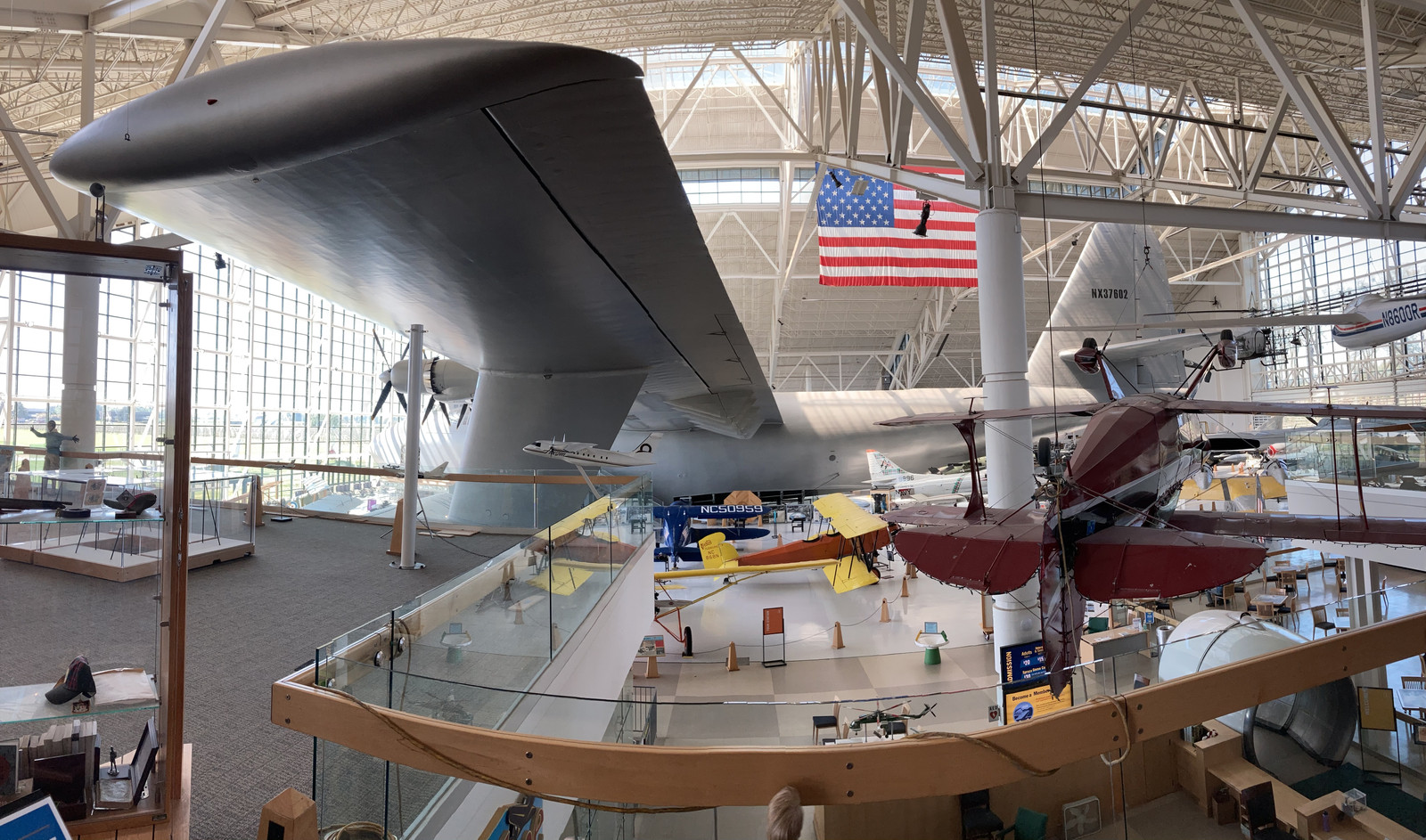
There’s a good reason. But you’ll have to wait for the next post to find out!
Comments
Comments are handled on my Discourse forum - you'll need to create an account there to post comments.If you've found this post useful, insightful, or informative, why not support me on Ko-fi? And if you'd like to be notified of new posts (I post every two weeks), you can follow my blog via email! Of course, if you like RSS, I support that too.
